|
|

|
Day 7, Saturday 24 November
Baan Lita……..They say you get what you pay for but I’ve paid less at Baan Lita than any accommodation so far yet this is a place has provided everything including service that others have failed to match. That includes a strong wifi signal. With conveniences, right on the doorstep I cannot fault it in any way. My only regret is that there is not too much in Phimai to keep me here longer. With little work done on my notes I resolve to leave it as late as possible before departure and that means gone 11am. It’s just 5 minutes to the first stop besides the Mun River.
Baan Lita……..They say you get what you pay for but I’ve paid less at Baan Lita than any accommodation so far yet this is a place has provided everything including service that others have failed to match. That includes a strong wifi signal. With conveniences, right on the doorstep I cannot fault it in any way. My only regret is that there is not too much in Phimai to keep me here longer. With little work done on my notes I resolve to leave it as late as possible before departure and that means gone 11am. It’s just 5 minutes to the first stop besides the Mun River.
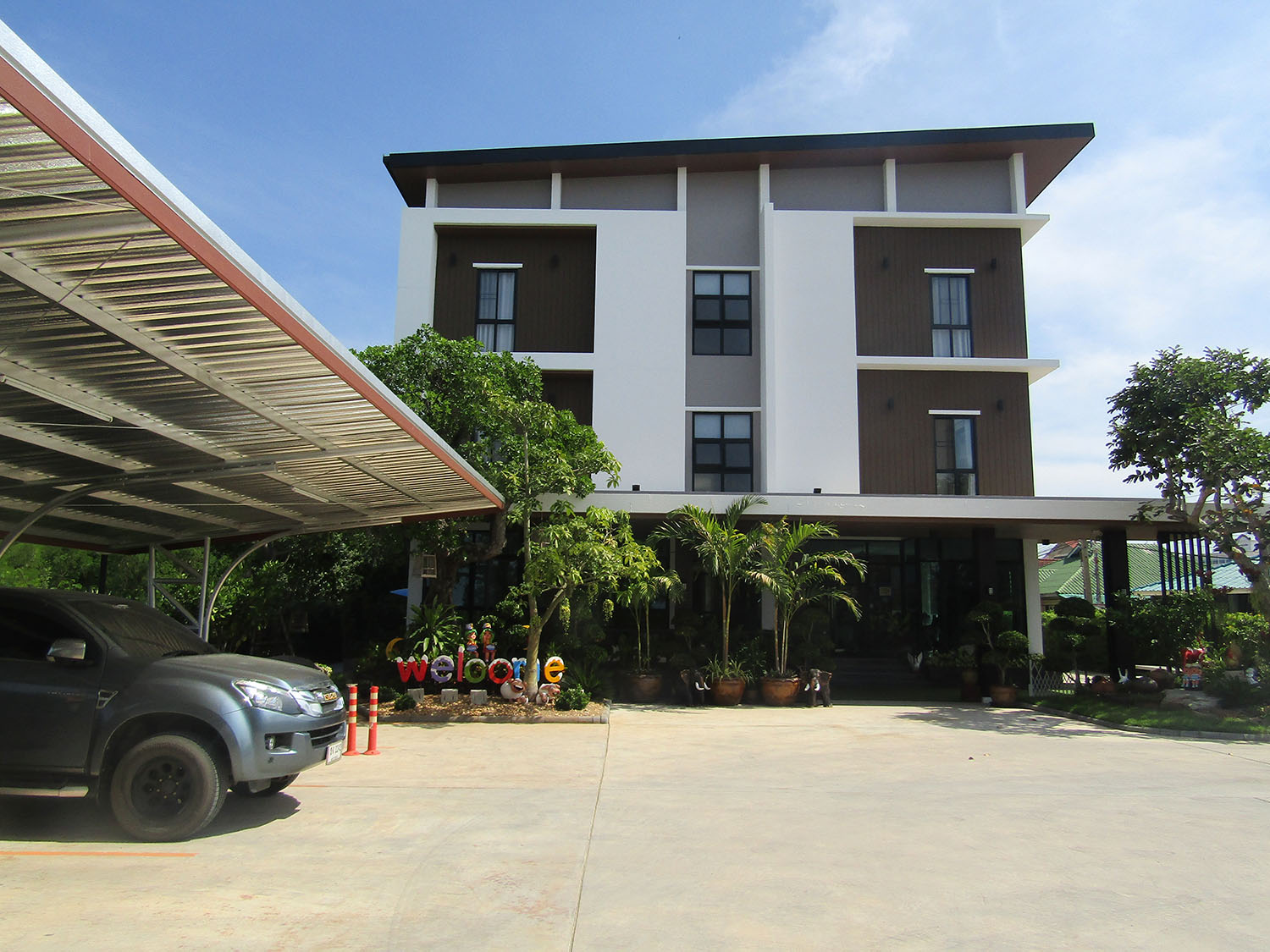
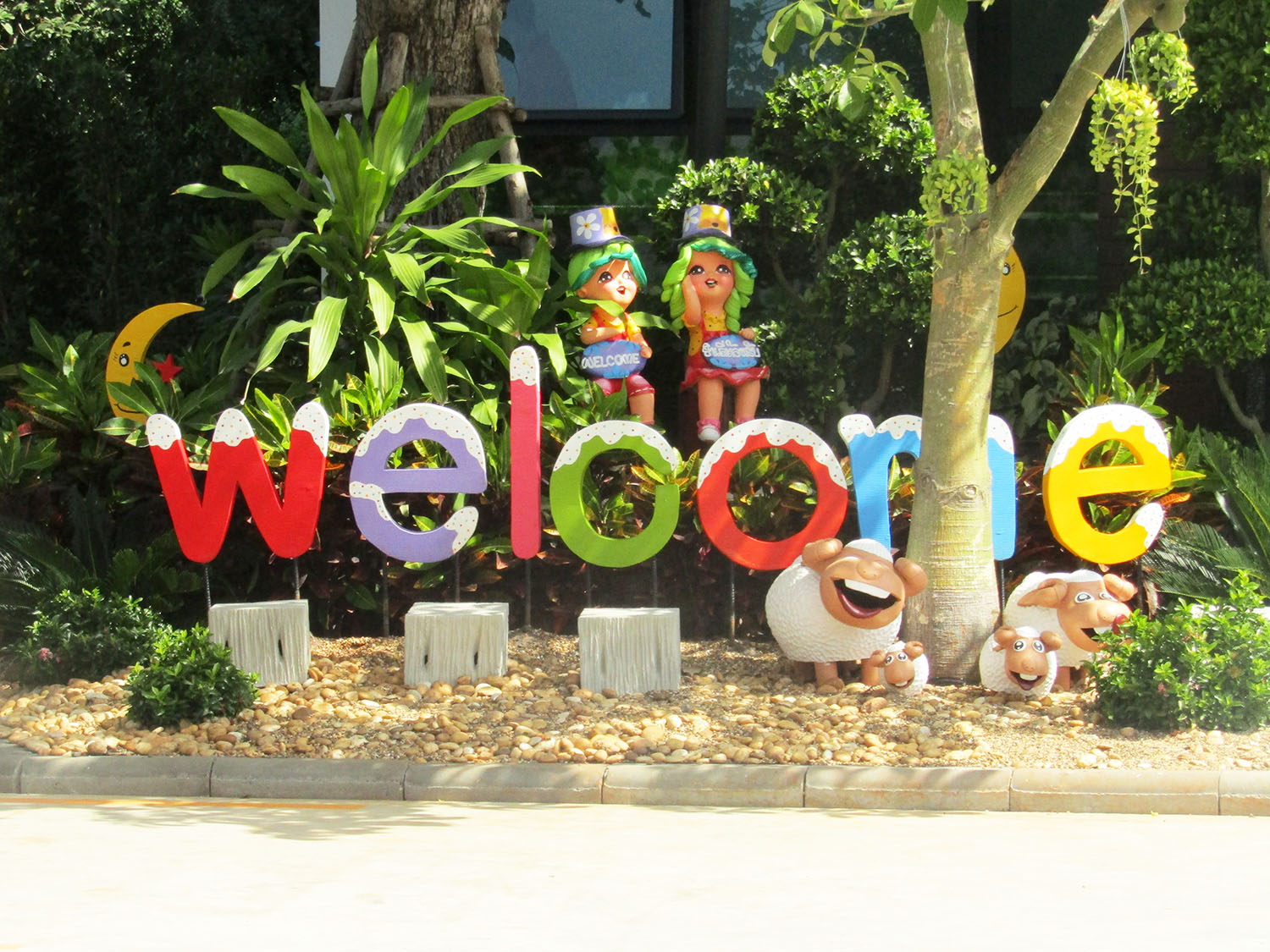
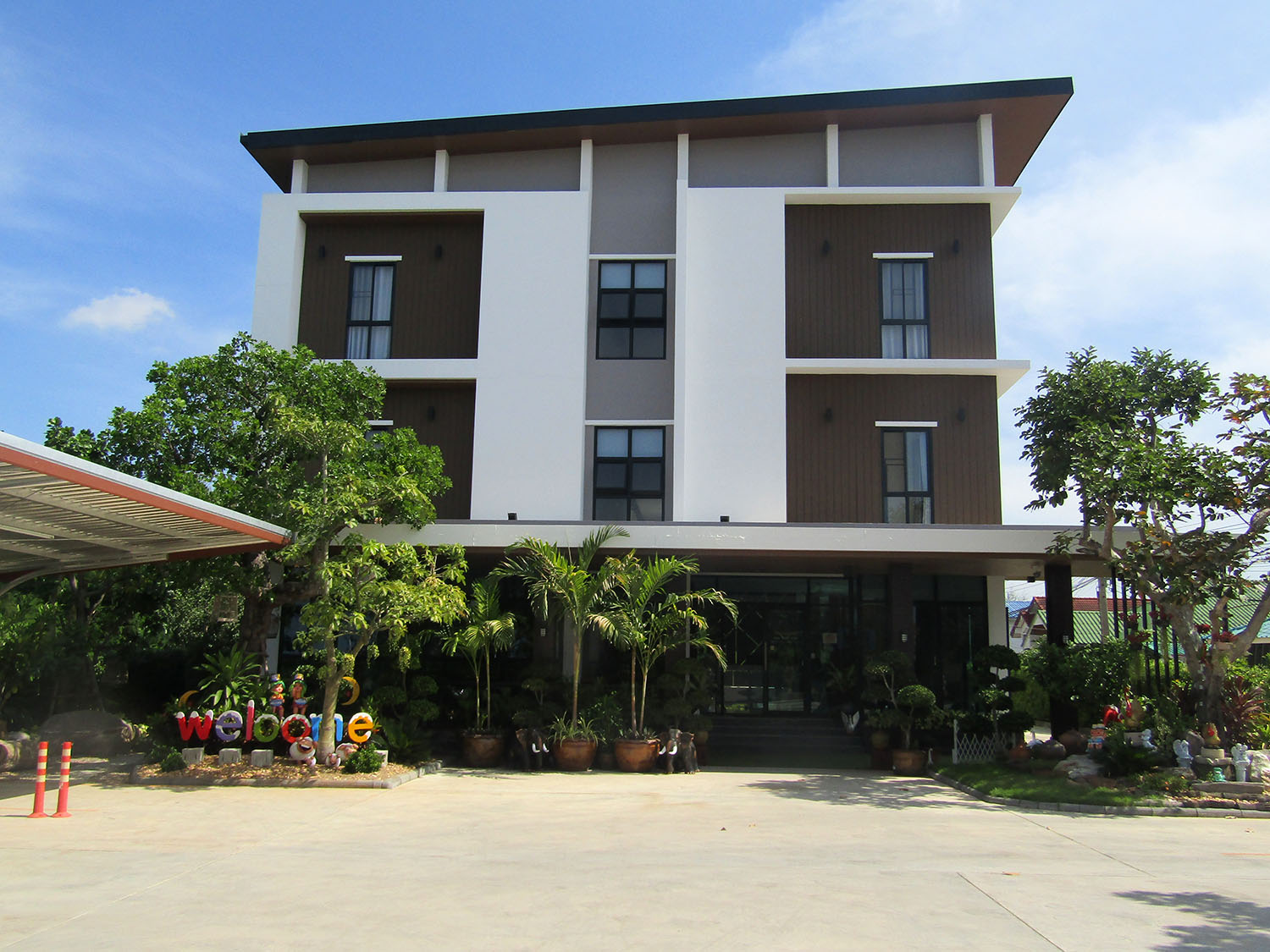 Baan Lita, Phimai, Nakhon Ratchasima Province
Baan Lita, Phimai, Nakhon Ratchasima Province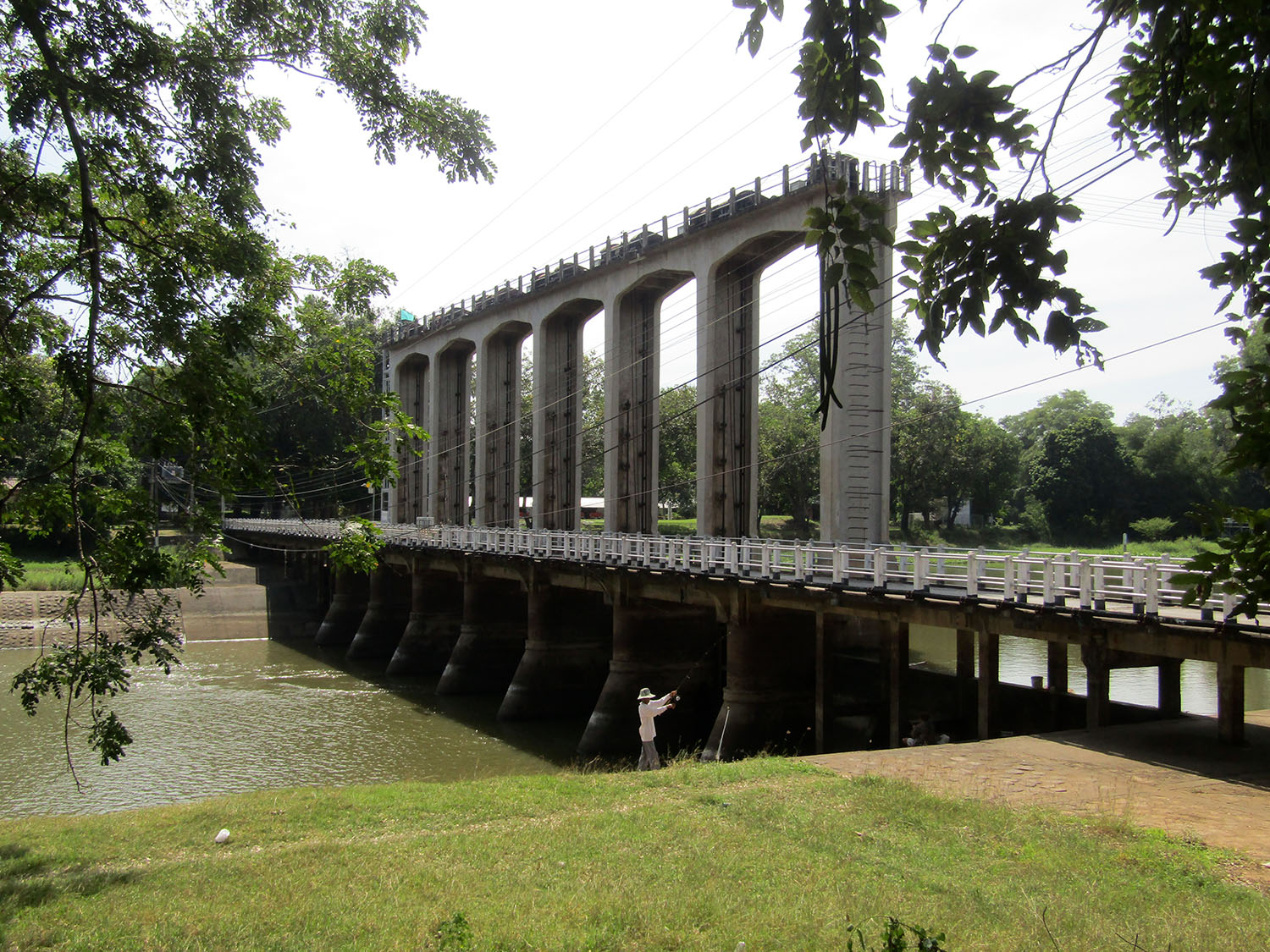
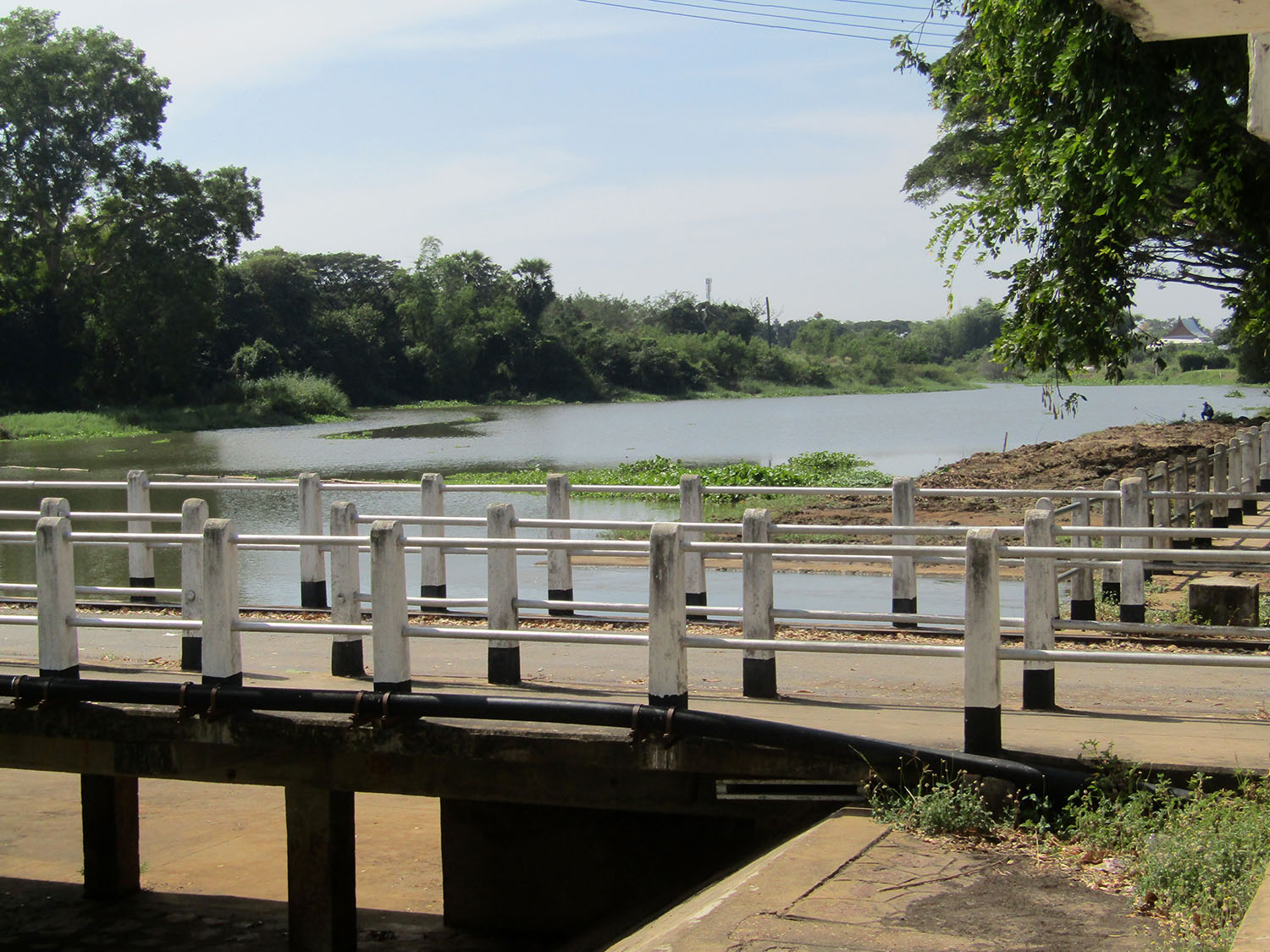
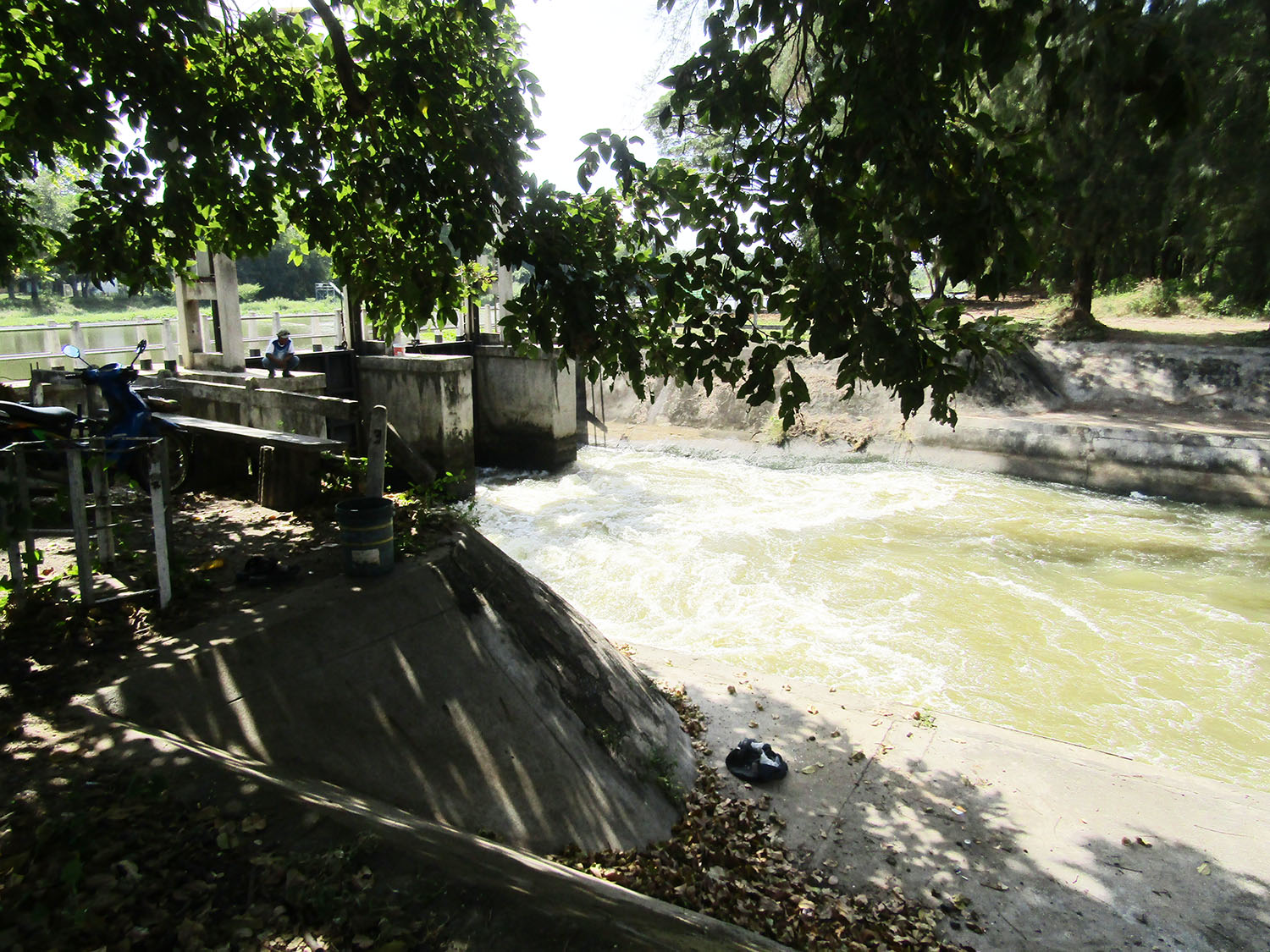 Dam Gatekeeper of Big Tree on the Mun River near Sai Ngam, Phimai, Nakhon Ratchasima Province
Dam Gatekeeper of Big Tree on the Mun River near Sai Ngam, Phimai, Nakhon Ratchasima Province
Sai Ngam……..Arriving at Sai Ngam feels a bit strange. It’s less than 10 years since I was last here and I still have a picture of it in my mind. It seems as if it was yesterday but as this site hasn’t featured in these webpages before, this is a golden opportunity to correct that.
The massive cluster of banyan trees known locally as ‘Sai Yoi’ (sweeping banyans), once covered an area of 25,000 square feet in Phimai town centre with a lifespan of up to 350 years. The banyans once grew in awe-inspiring profusion. When Queen Sri Phatcharinthara (King Chulalongkorn’s Queen) visited Phimai in 1911. She was so impressed by their beauty, that she named the area ‘Sai-Ngarm’, which means ‘area of splendid banyans’.
The massive cluster of banyan trees known locally as ‘Sai Yoi’ (sweeping banyans), once covered an area of 25,000 square feet in Phimai town centre with a lifespan of up to 350 years. The banyans once grew in awe-inspiring profusion. When Queen Sri Phatcharinthara (King Chulalongkorn’s Queen) visited Phimai in 1911. She was so impressed by their beauty, that she named the area ‘Sai-Ngarm’, which means ‘area of splendid banyans’.
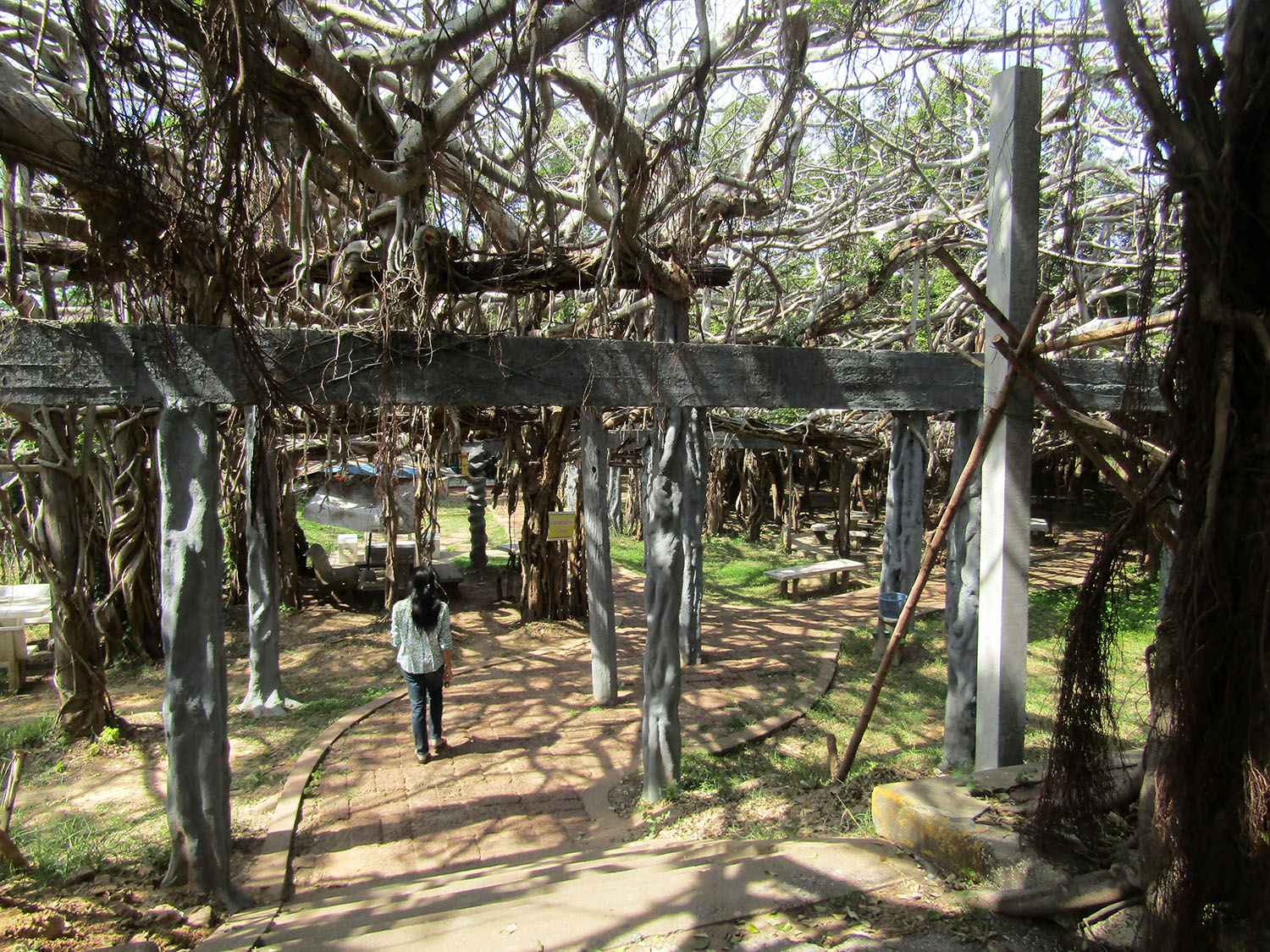
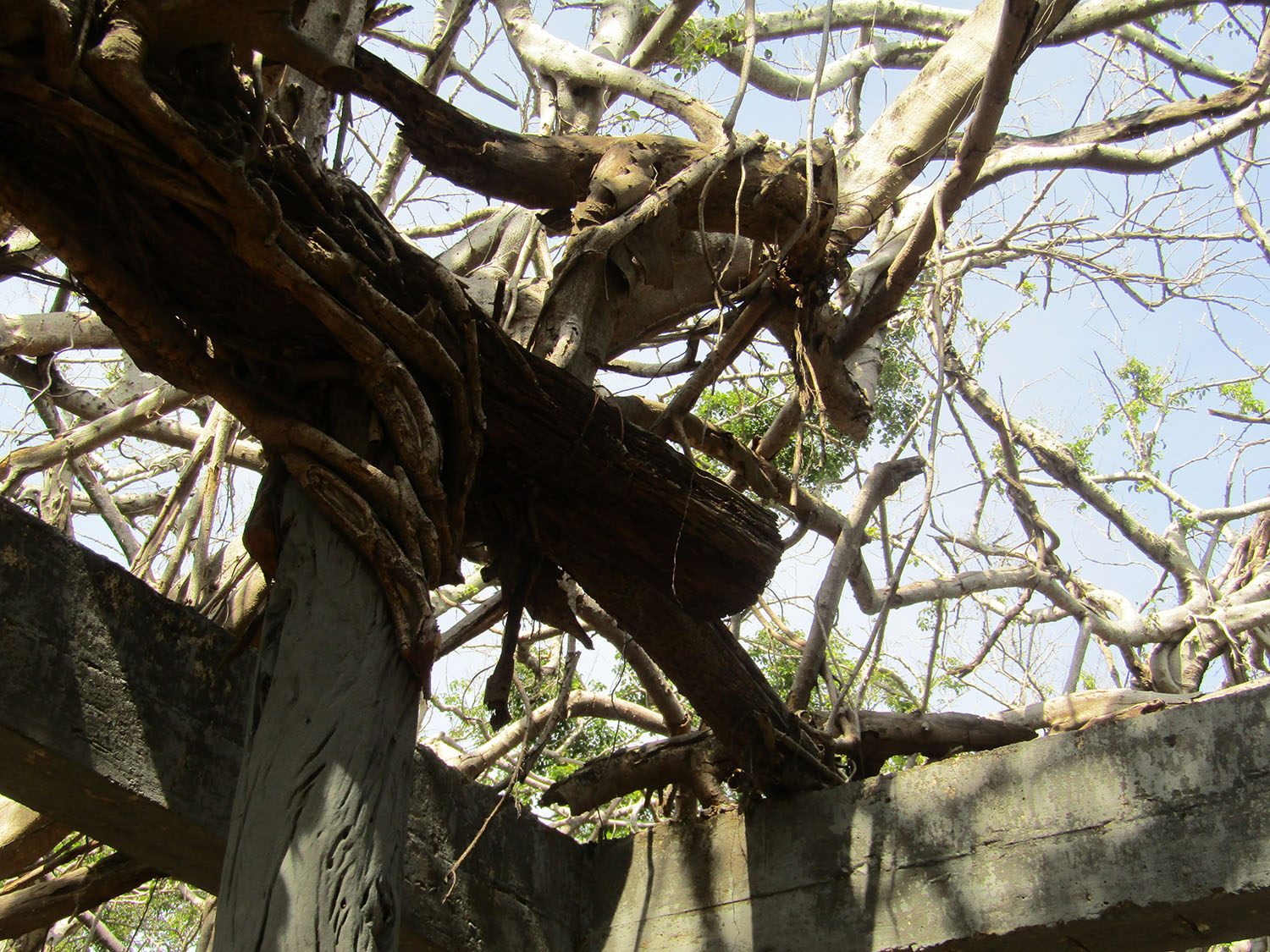
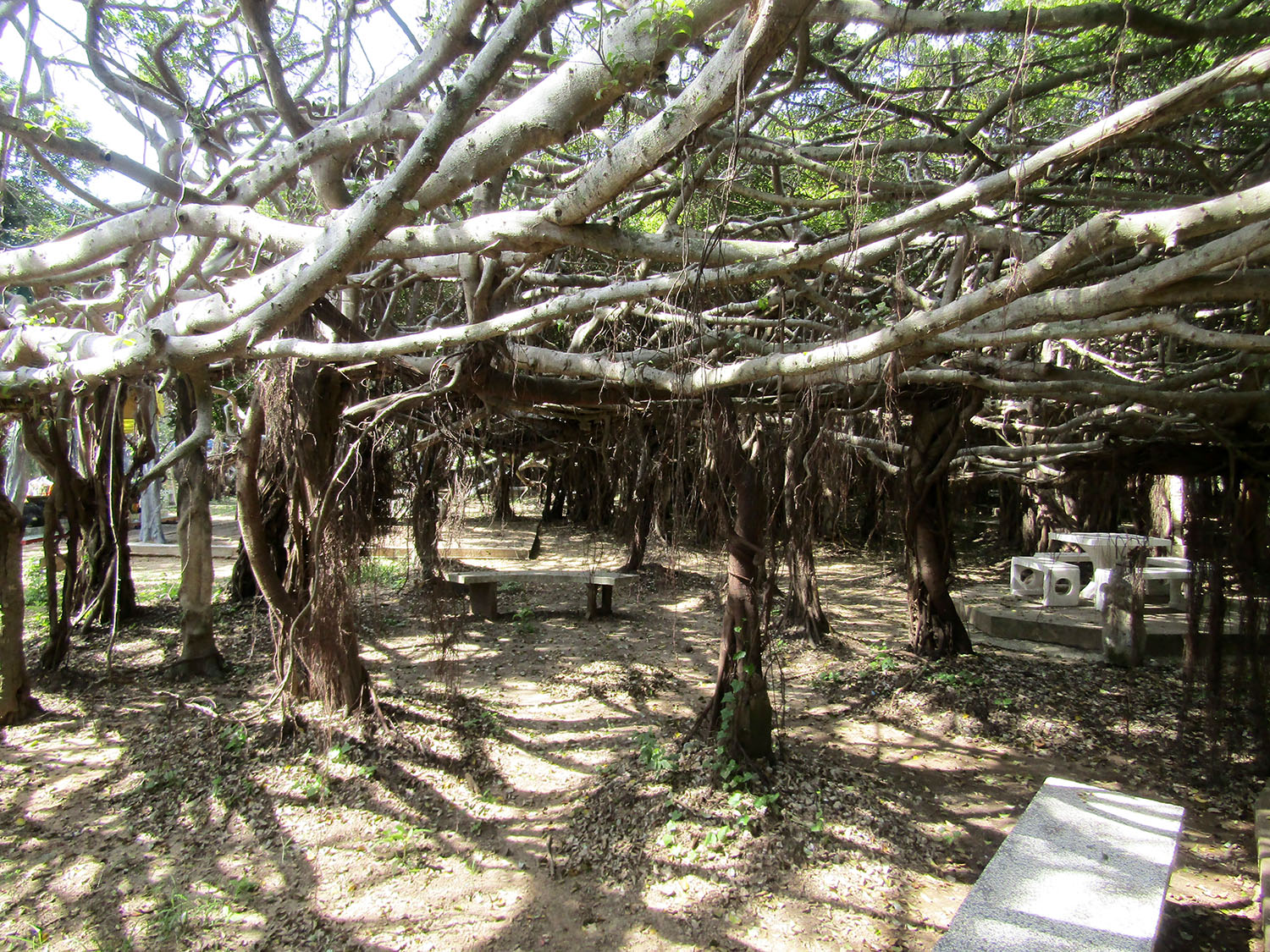
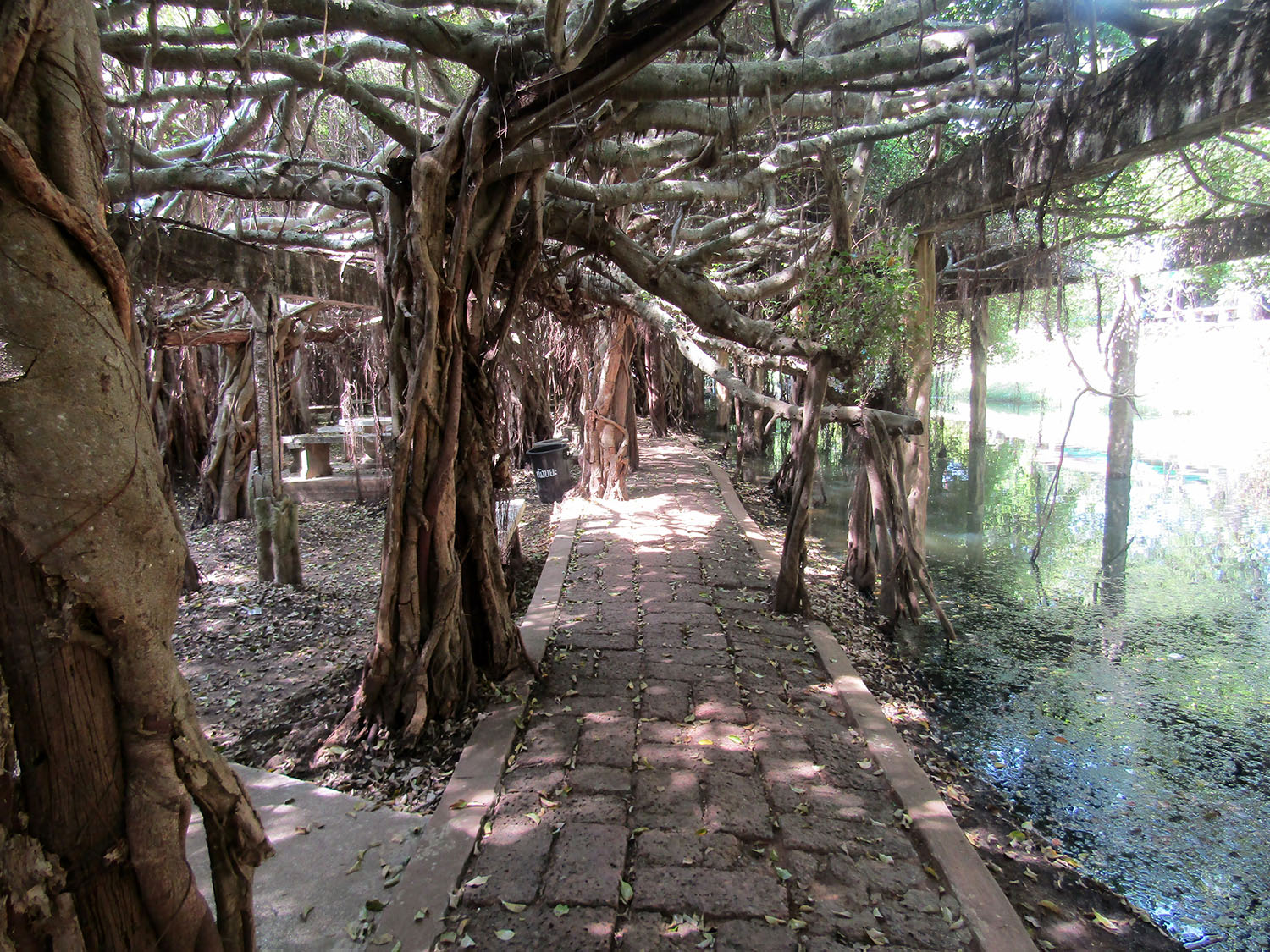
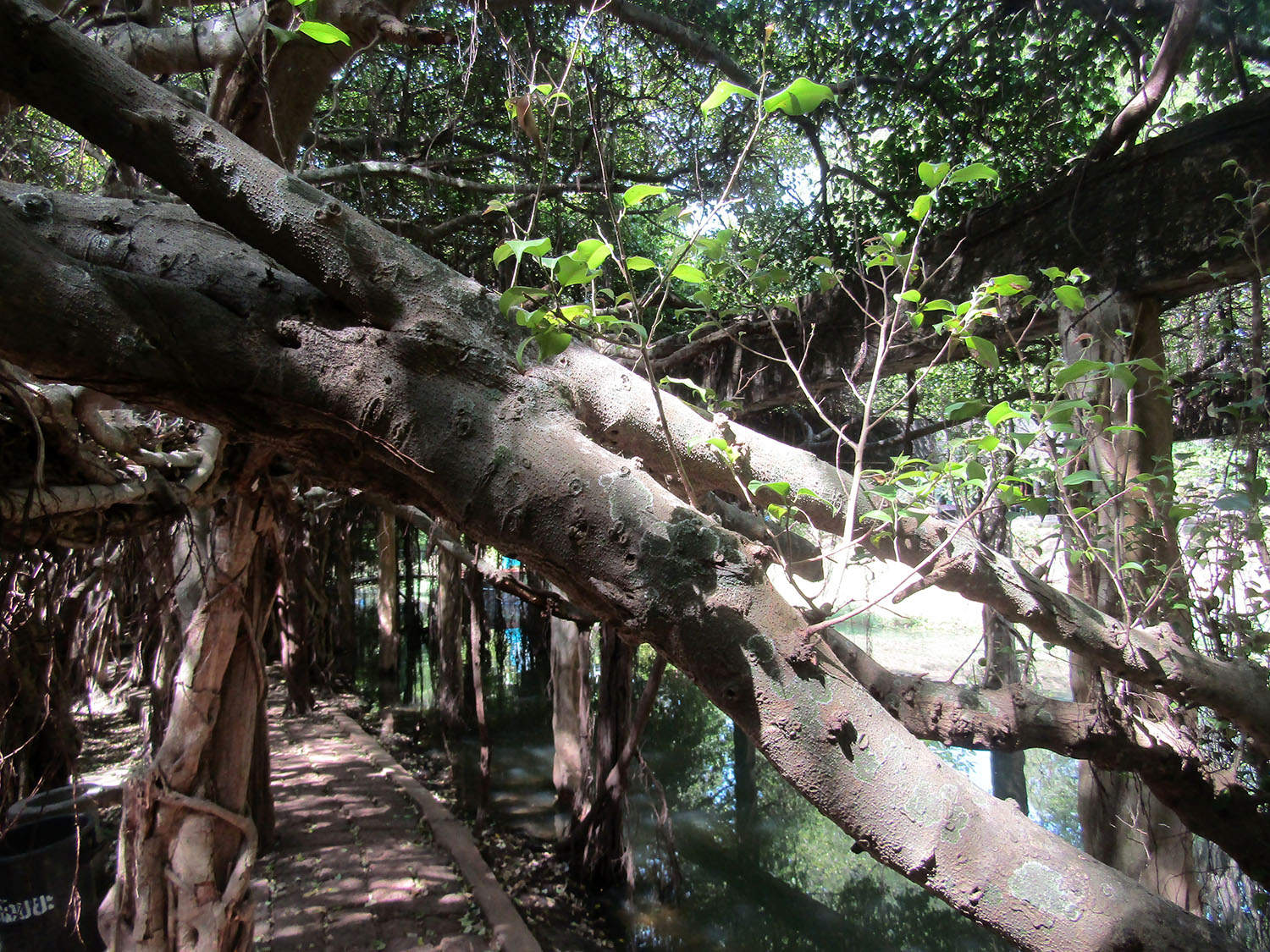
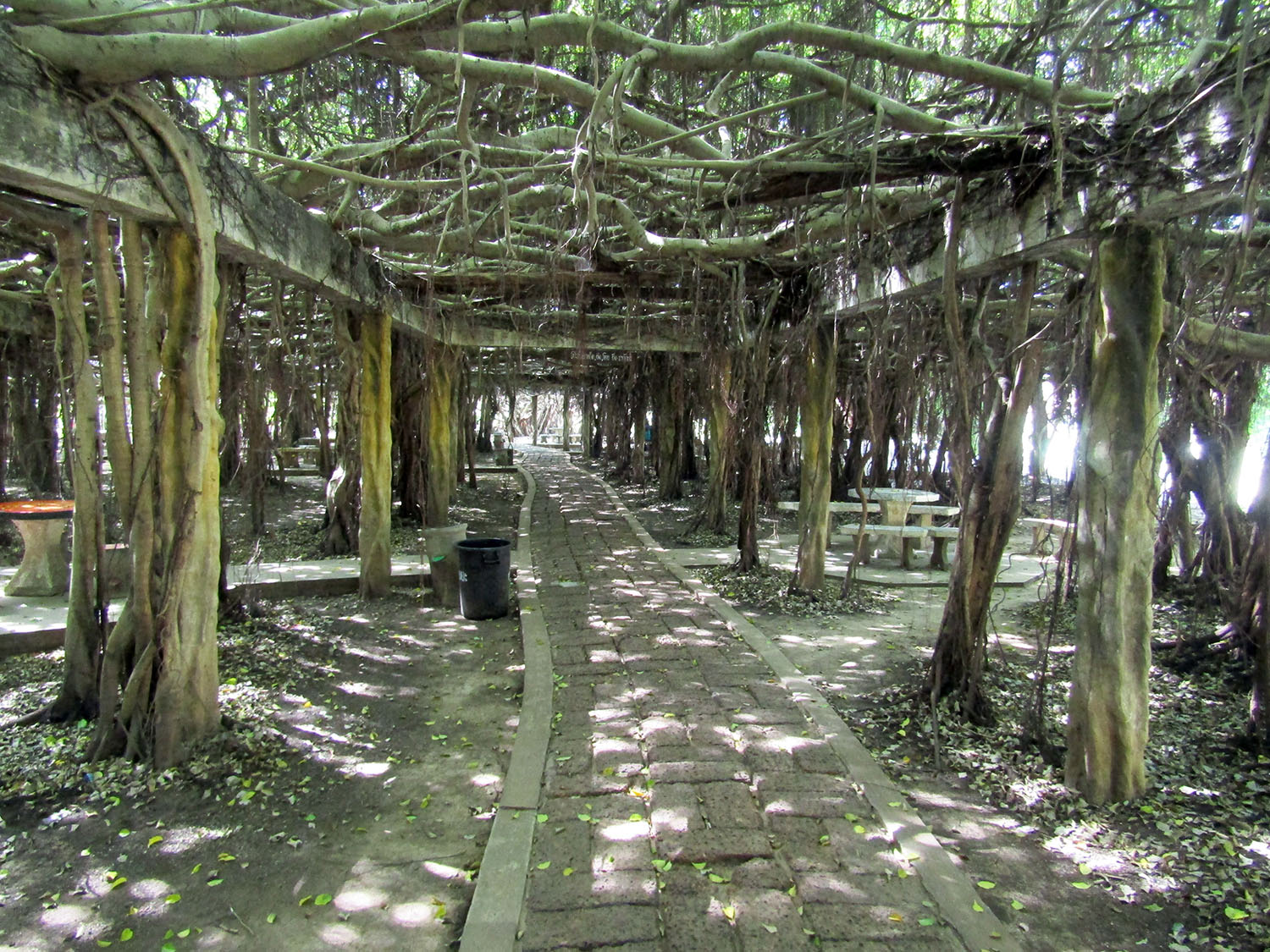
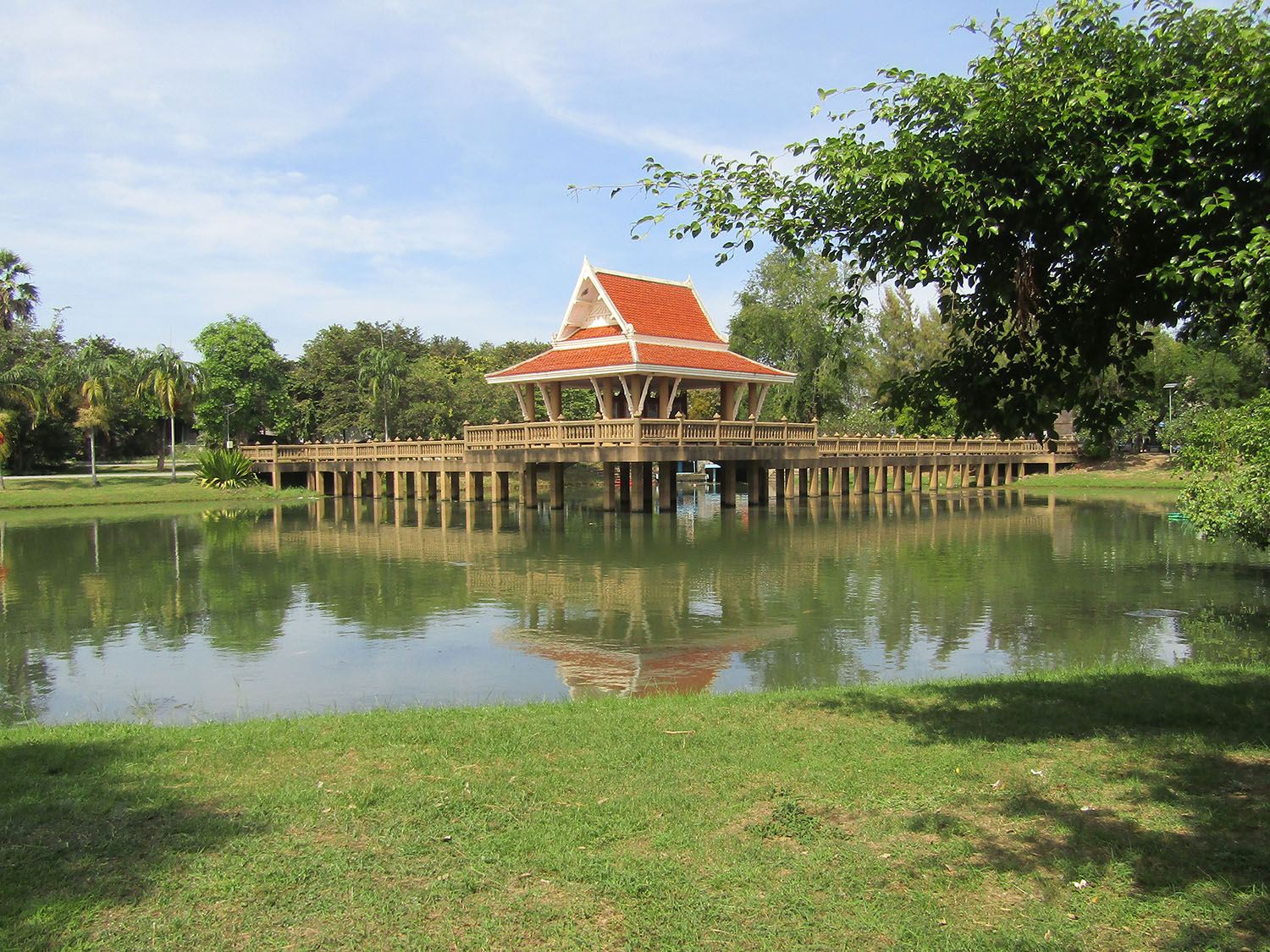
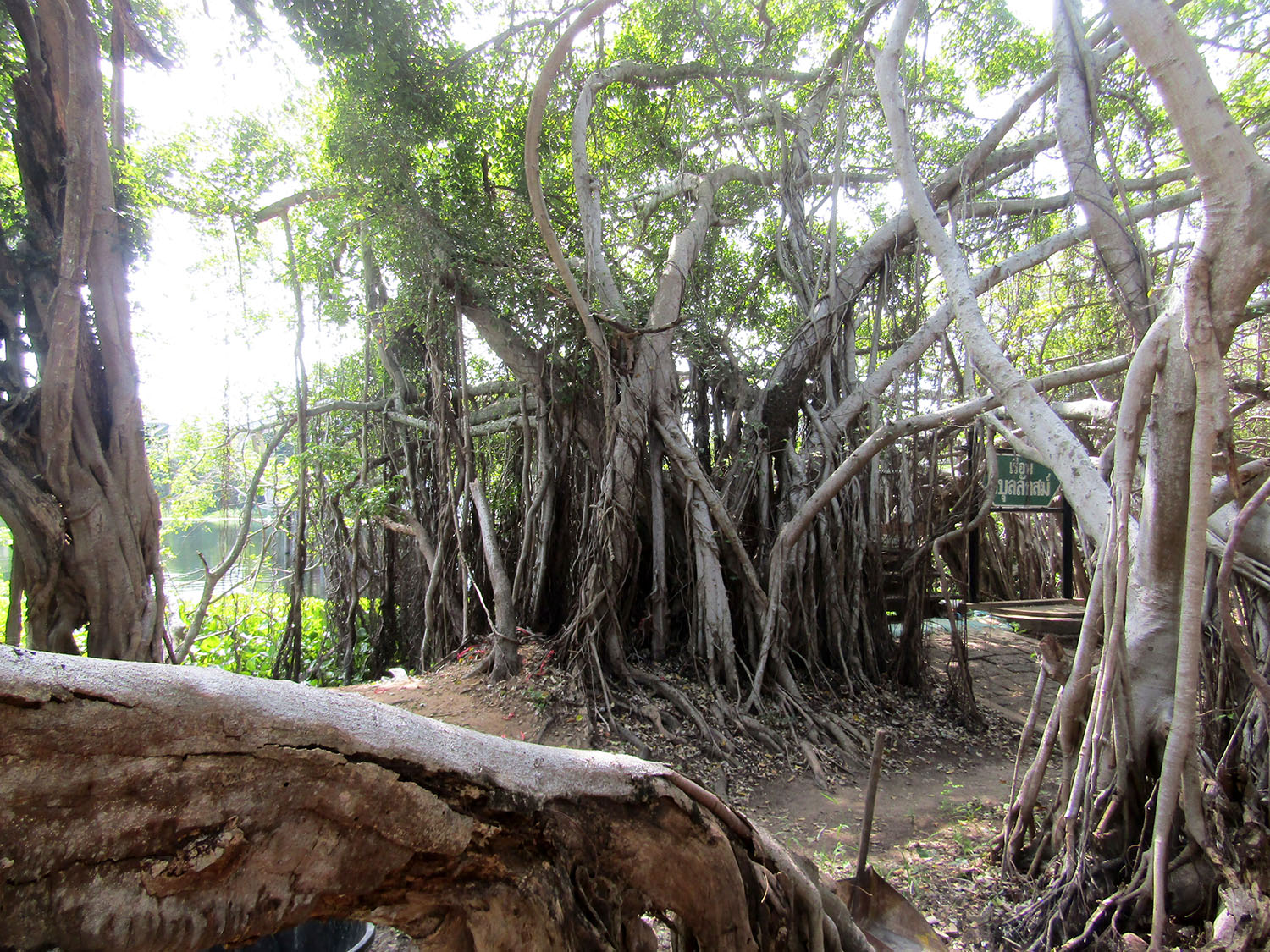
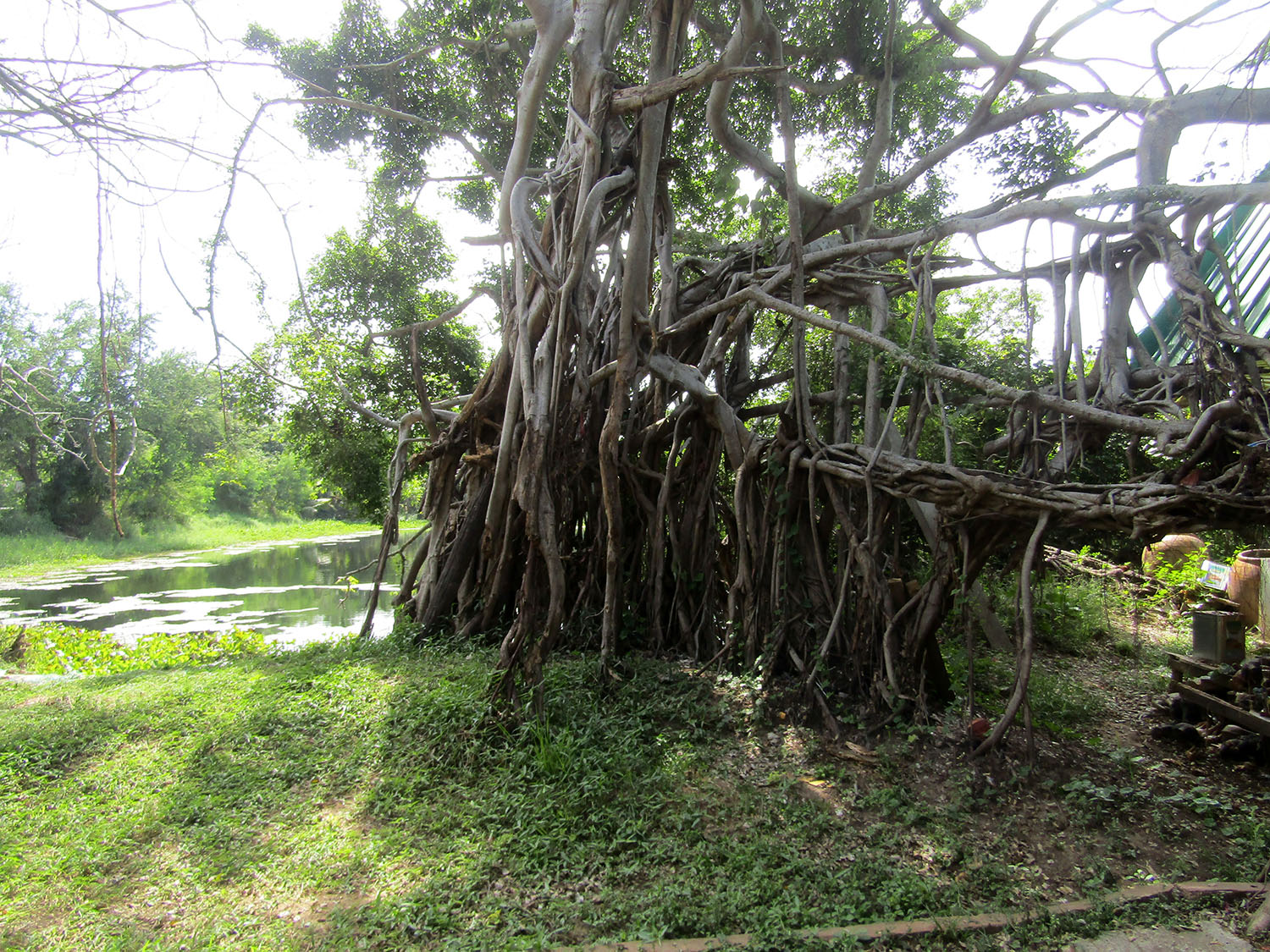 Sai Ngam, Phimai, Nakhon Ratchasima Province
Sai Ngam, Phimai, Nakhon Ratchasima Province
Banyan trees can reproduce by throwing down roots from their branches, eventually producing new trunks. On the present site, to allow a walkway to pass underneath for visitors, it has been necessary to add concrete beams to support the branches.
Sra Phlaeng……..Setting GPS to look for Sra Phlaeng, I am surprised to find nothing at the site or though I first thought. As I park next to a huge lotus filled pond, I realise that this was the main water source for the ancient city of Phimai.
Sra Phlaeng……..Setting GPS to look for Sra Phlaeng, I am surprised to find nothing at the site or though I first thought. As I park next to a huge lotus filled pond, I realise that this was the main water source for the ancient city of Phimai.
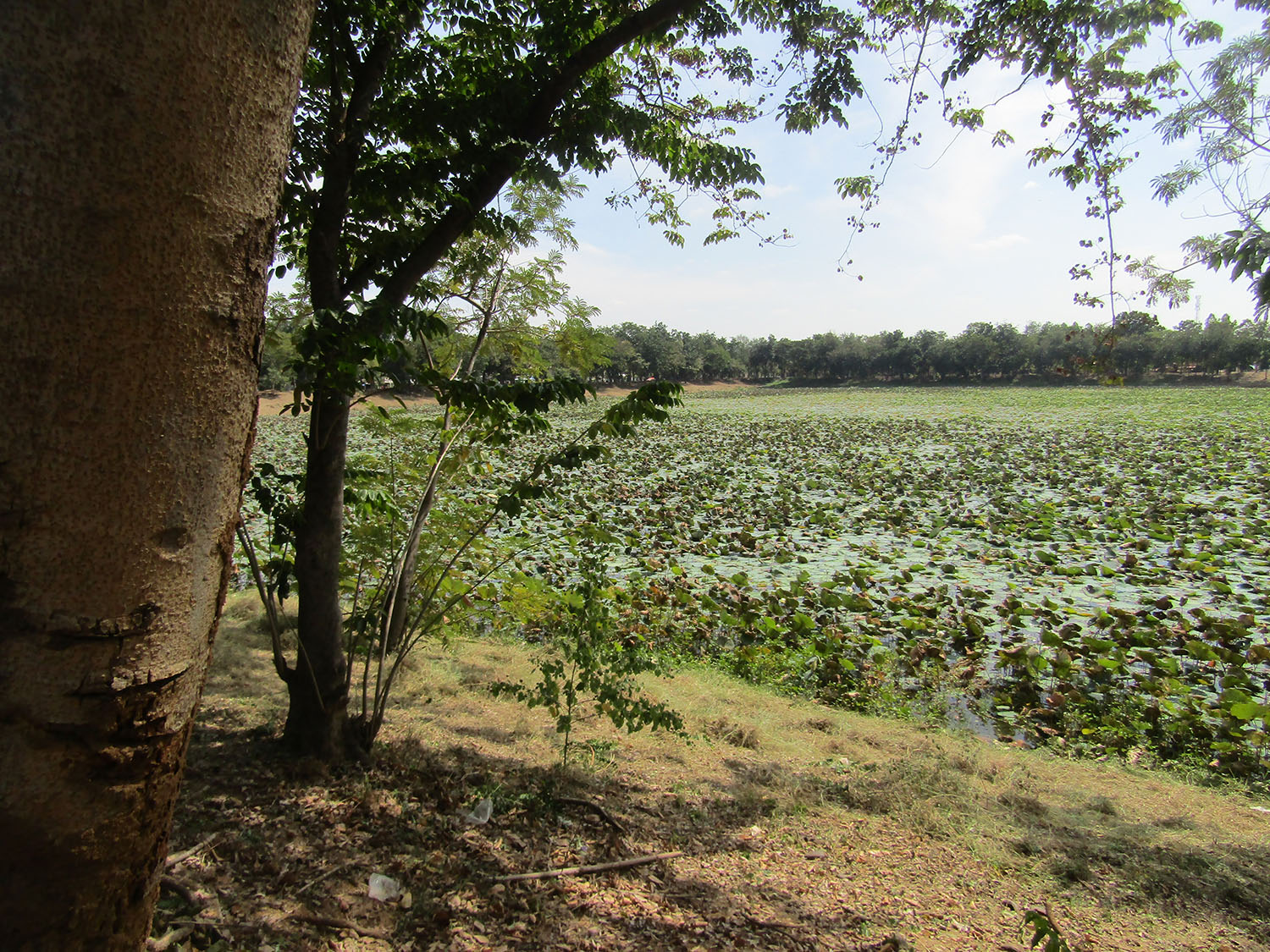
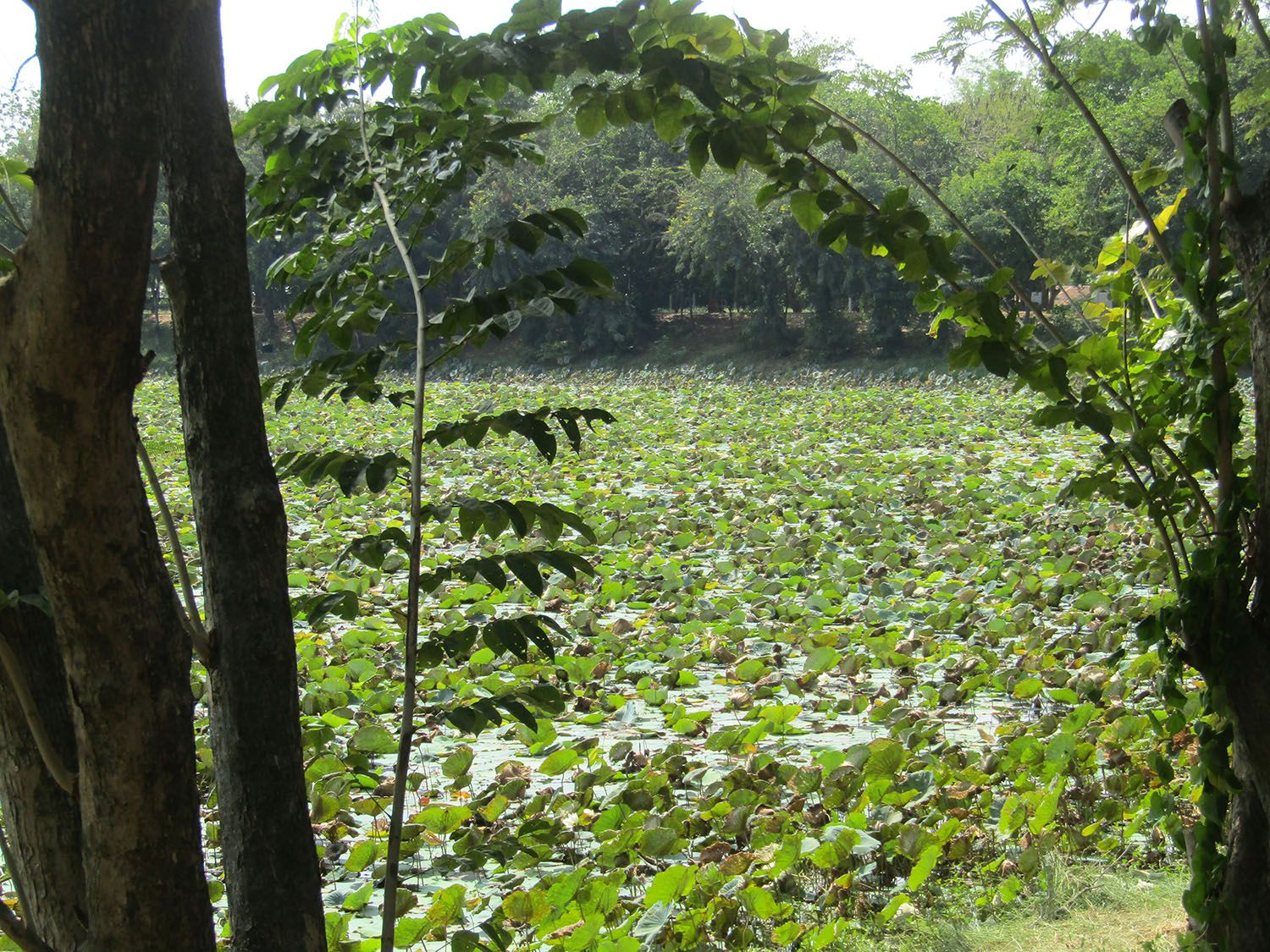
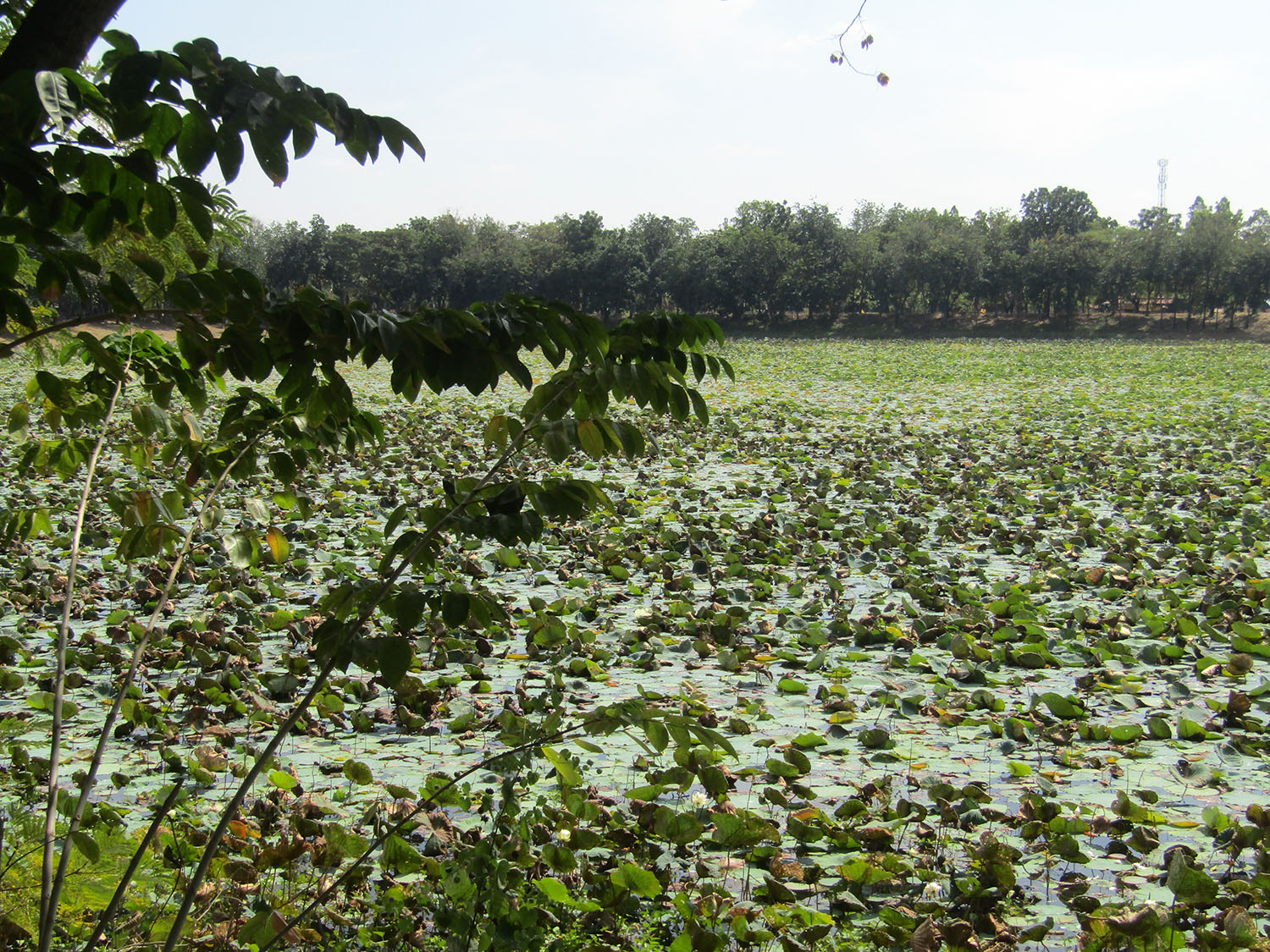 Sra Phlaeng, Phimai, Nakhon Ratchasima Province
Sra Phlaeng, Phimai, Nakhon Ratchasima Province
Phimai National Museum……..Still in the complex of the old city, I head for Phimai National Museum. The museum is located on the banks of the Mun River near the northern gate.
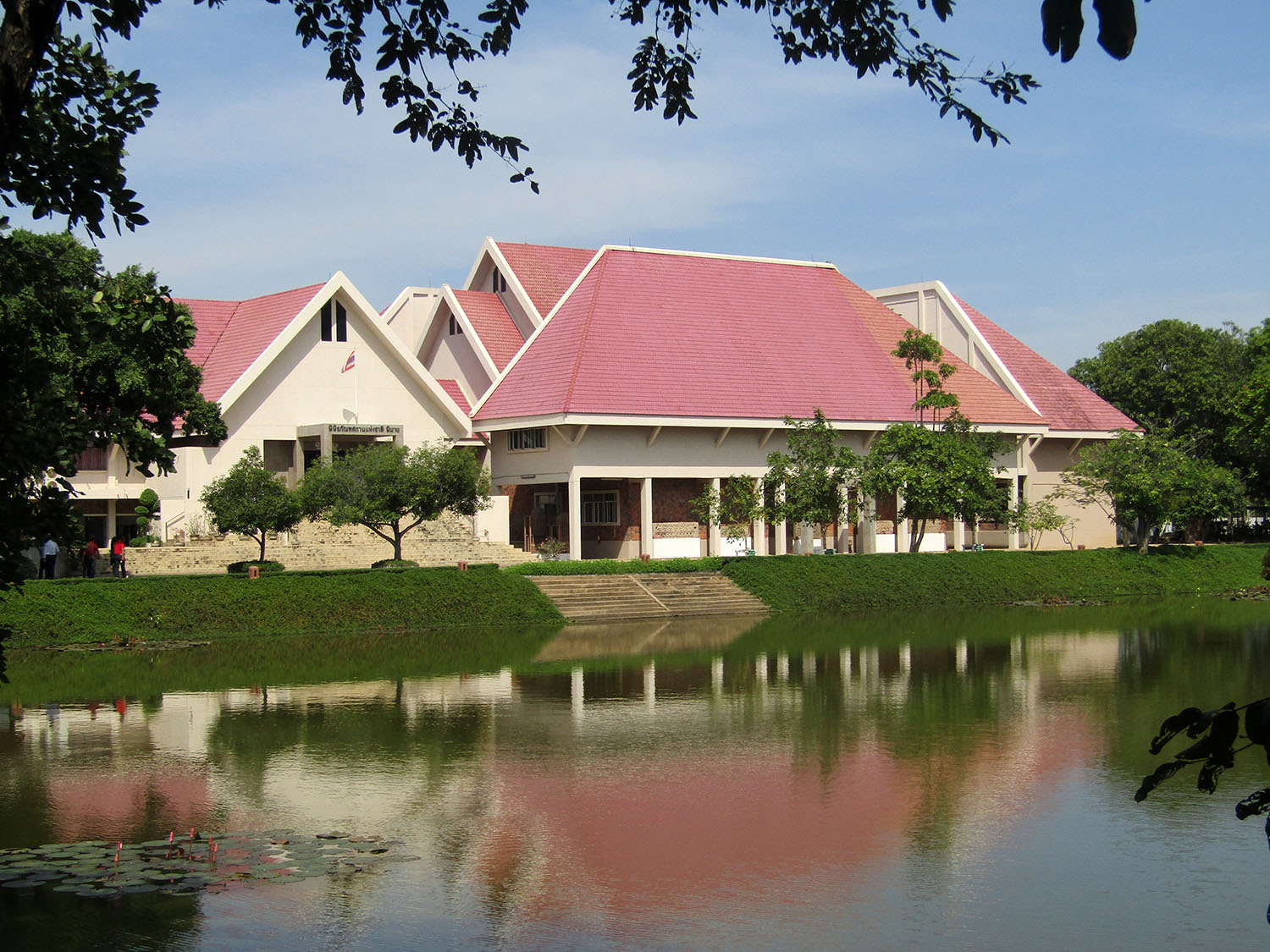
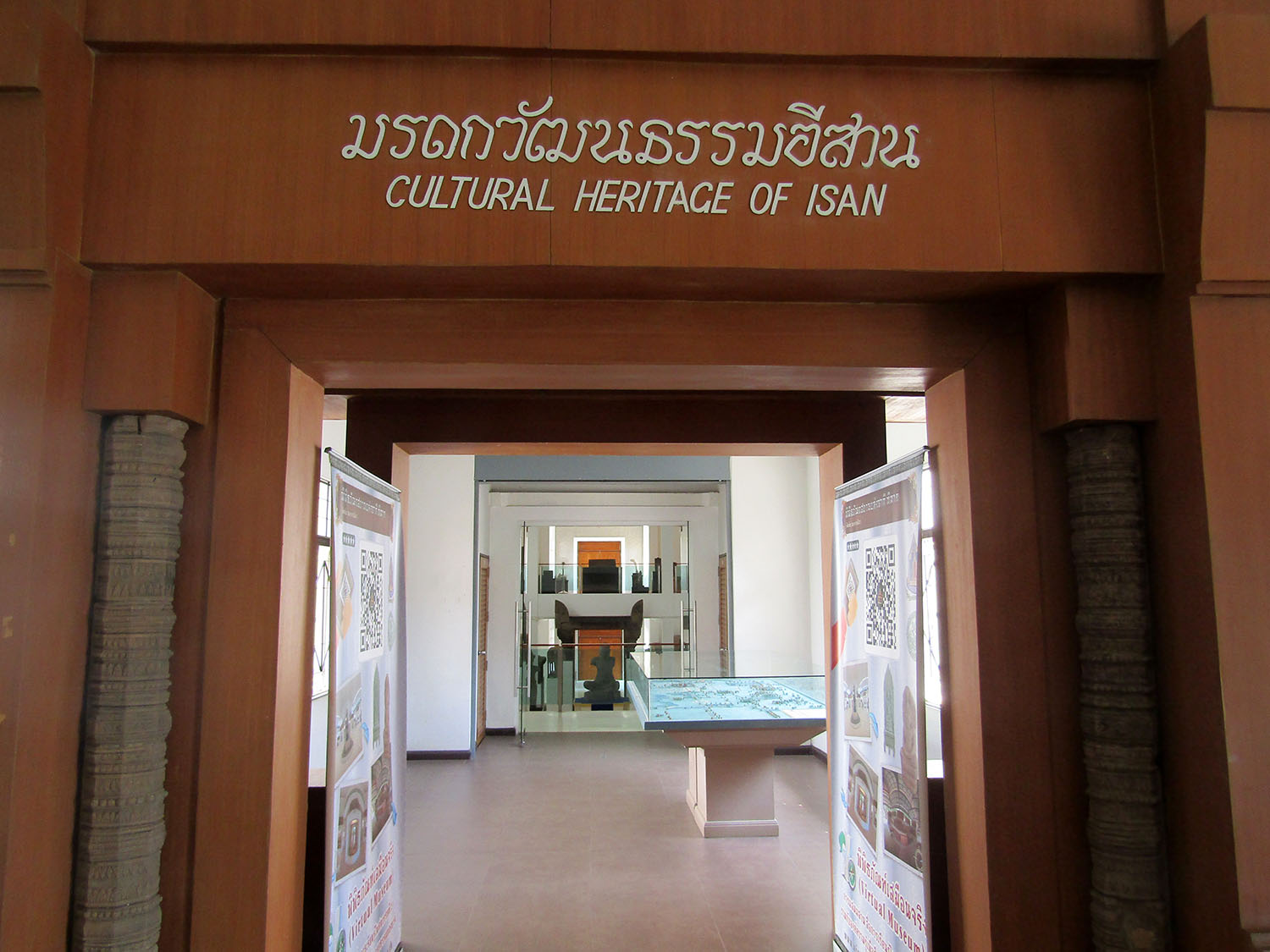
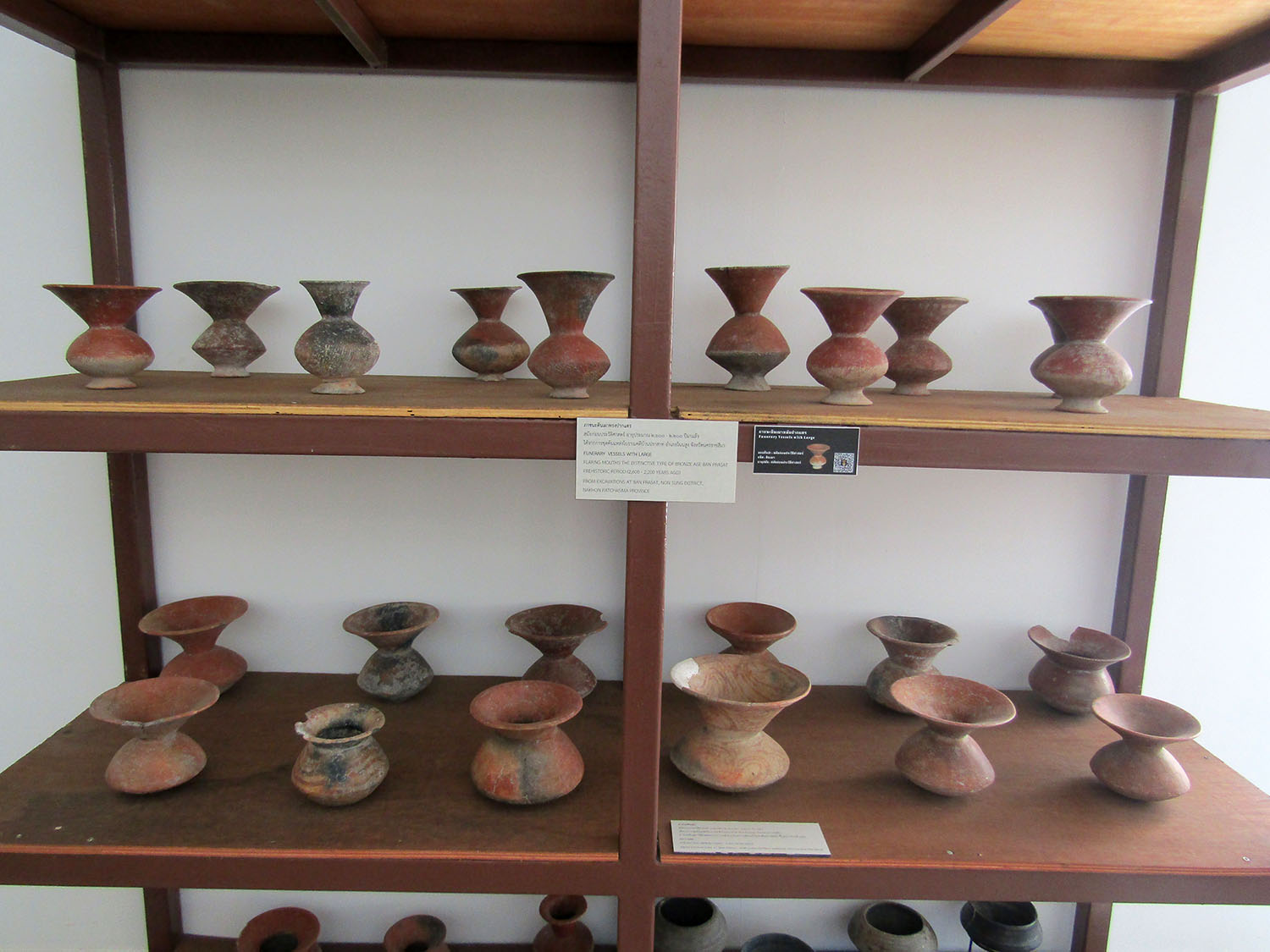
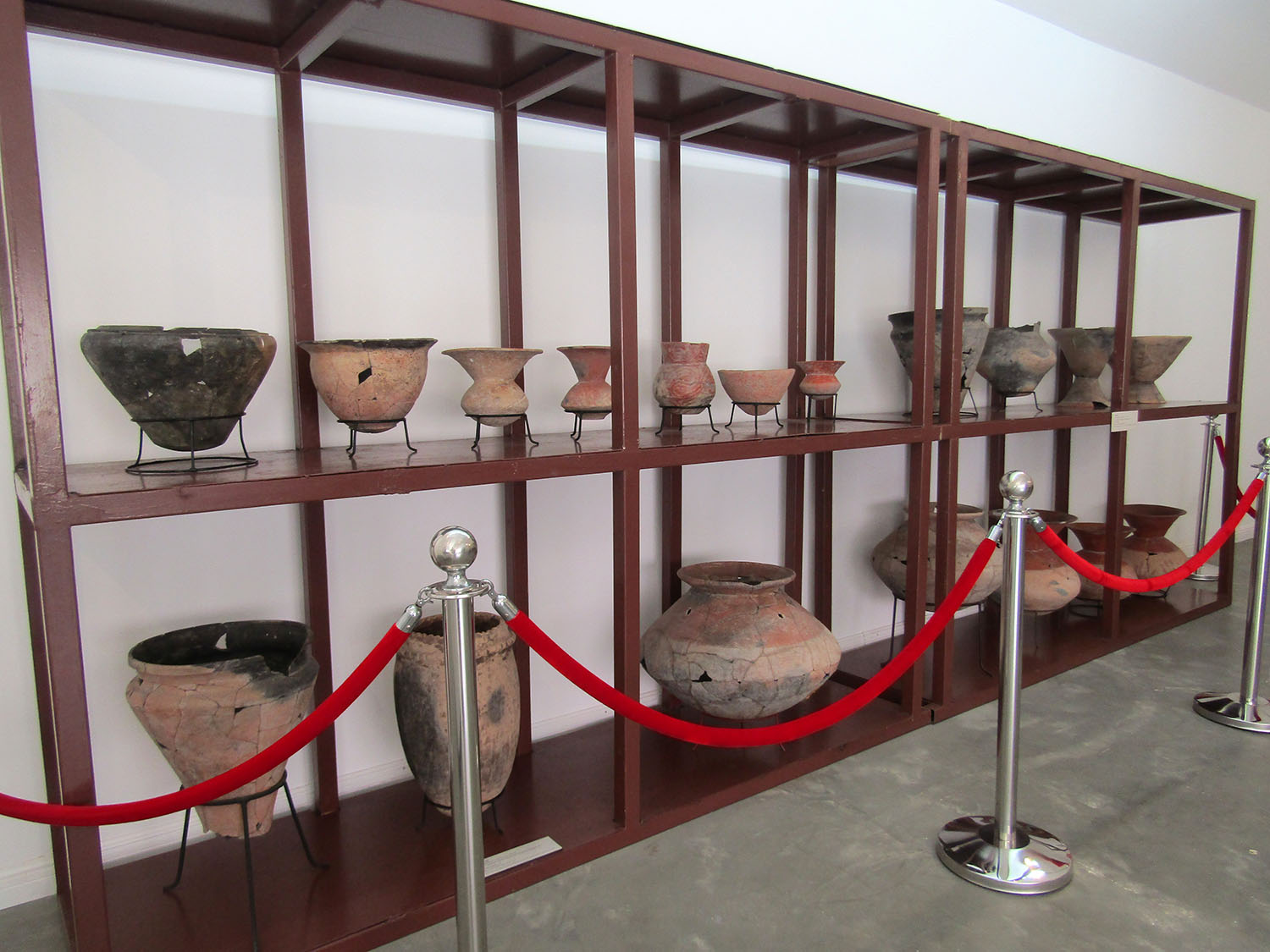
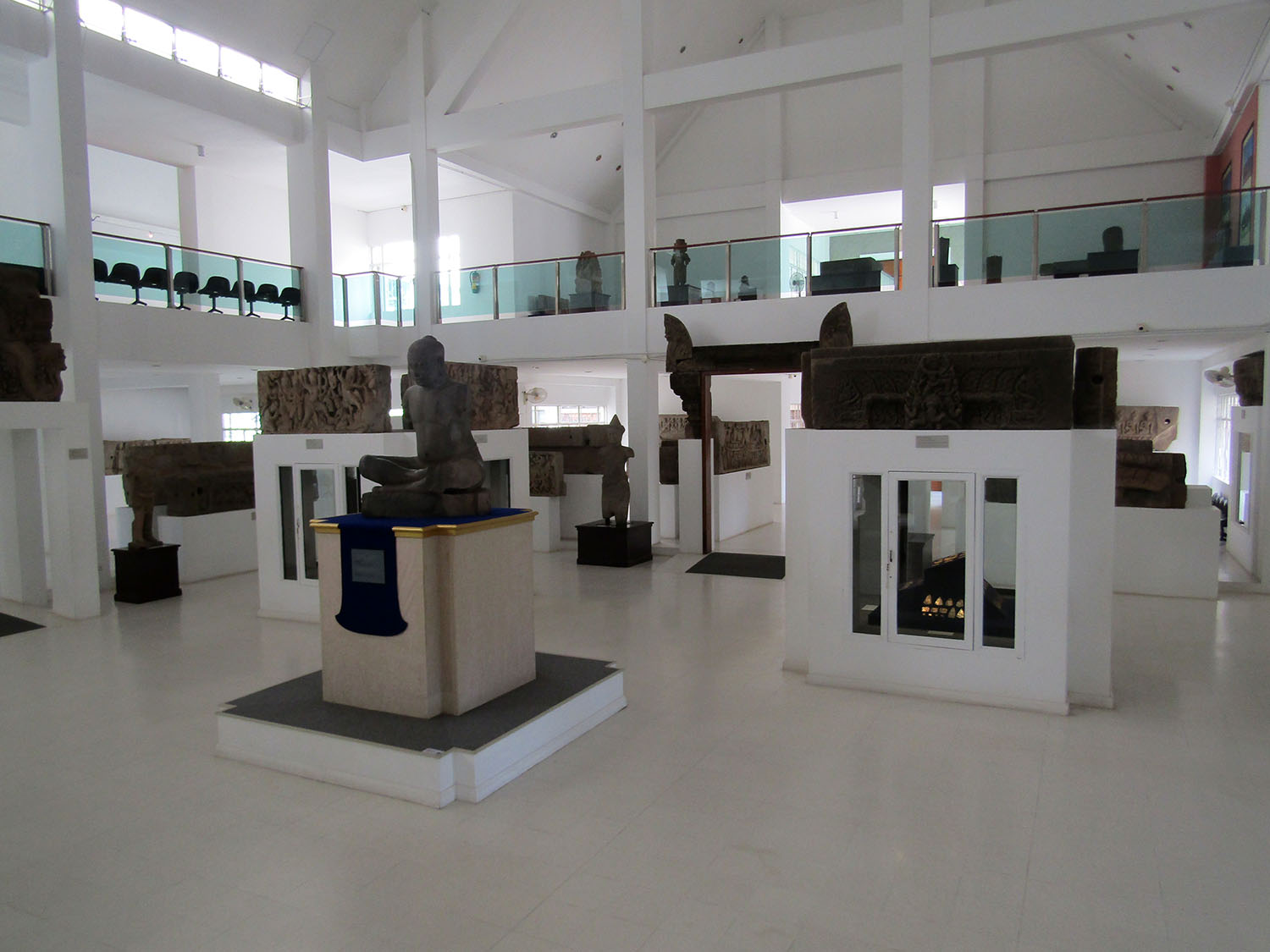
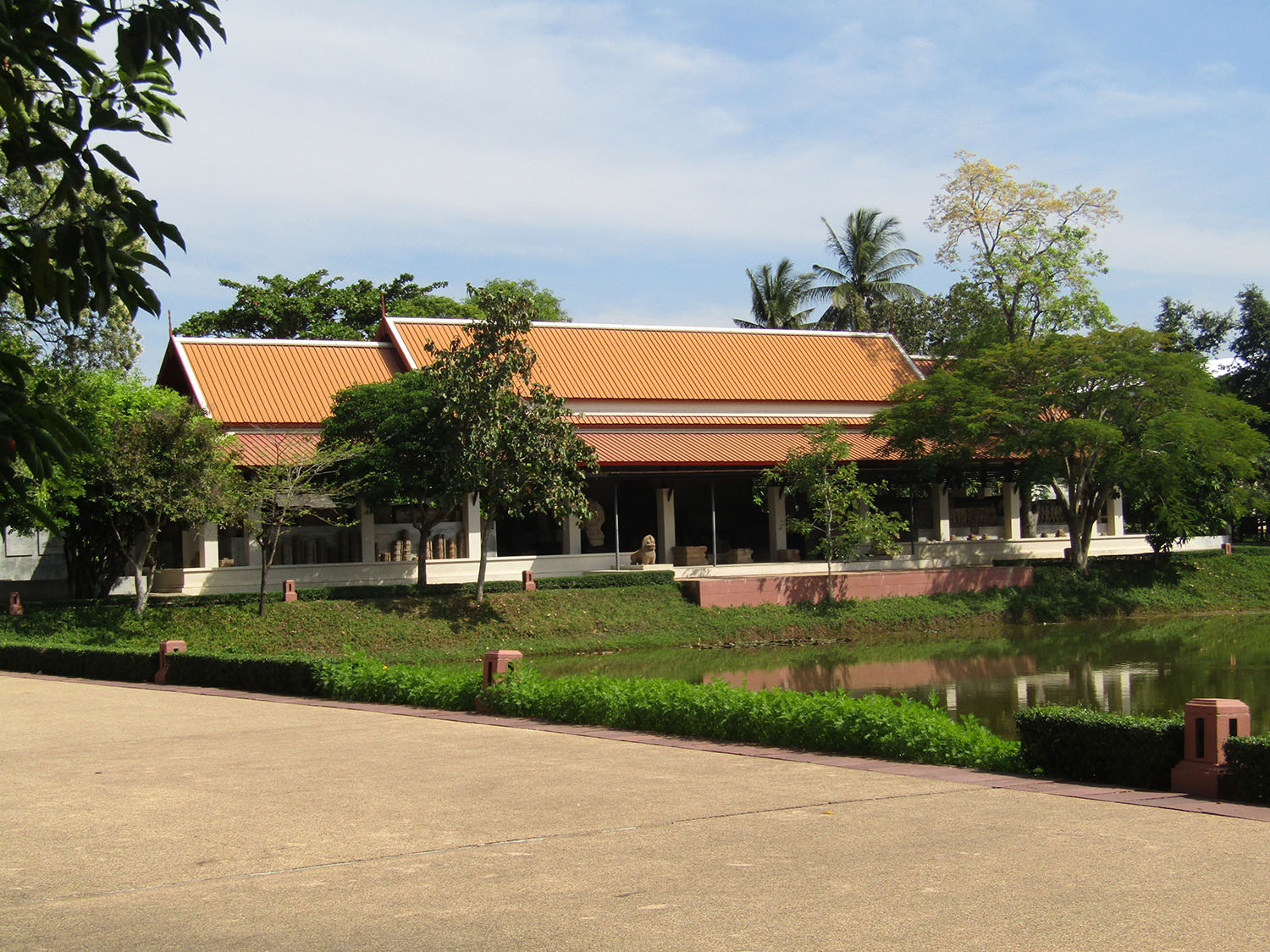 Phimai National Museum, Phimai, Nakhon Ratchasima Province
Phimai National Museum, Phimai, Nakhon Ratchasima Province
Between 1964 and 1975, the Phimai National Museum was the storage warehouse of the art objects which the Fine Arts Department Unit 6 (now the 12th Regional Office) discovered from the excavation and conservation of the Phimai Sanctuary as well as the antiques presented by the people from 4 provinces of the lower Isaan. In 1987 with the cooperation of the Thai Army, a budget of 40 million baht was arranged under a green Isaan project to develop the Phimai National Museum to be the centre of education and custodian of an important national cultural heritage collection in Thailand.
The best examples of art objects and antiques are now on display in the spacious modern building 1, that covers the Dvaravati, Khmer, Lopburi and Ayutthaya periods. More examples are displayed in the lesser building 2. From my visit, I conclude that this museum concentrates only on the display of objects relating to historic monuments in the region and their location. It does not deal with any other historic or cultural aspects. However the material preserved here is of huge national importance. My only other observation is that considering the investment made, they have decided not to install air-conditioning. Entry 100 baht.
Phimai Santuary……..Of course the main reason to visit Phimai is to visit the sanctuary. However, for me I’ve been here before in recent times so I’m happy just to take some more recent photographs.
The Phimai historical park is one of the largest Khmer temples of Thailand. The temple marks one end of the Ancient Khmer Highway from Angkor. As the enclosed area of 1020 x 580m is comparable with that of Angkor Wat, Phimai must have been an important city in the Khmer Empire. Most buildings are from the late 11th to the late 12th century, built in the Baphuon, Angkor Wat and Bayon style. However, even though the Khmer at that time were predominantly Hindu, the temple was built as a Buddhist temple since the inhabitants of the Khorat area had been Buddhists as far back the 7th century. Inscriptions name the site Vimayapura (which means city of Vimaya), which developed into the Thai name Phimai.
The best examples of art objects and antiques are now on display in the spacious modern building 1, that covers the Dvaravati, Khmer, Lopburi and Ayutthaya periods. More examples are displayed in the lesser building 2. From my visit, I conclude that this museum concentrates only on the display of objects relating to historic monuments in the region and their location. It does not deal with any other historic or cultural aspects. However the material preserved here is of huge national importance. My only other observation is that considering the investment made, they have decided not to install air-conditioning. Entry 100 baht.
Phimai Santuary……..Of course the main reason to visit Phimai is to visit the sanctuary. However, for me I’ve been here before in recent times so I’m happy just to take some more recent photographs.
The Phimai historical park is one of the largest Khmer temples of Thailand. The temple marks one end of the Ancient Khmer Highway from Angkor. As the enclosed area of 1020 x 580m is comparable with that of Angkor Wat, Phimai must have been an important city in the Khmer Empire. Most buildings are from the late 11th to the late 12th century, built in the Baphuon, Angkor Wat and Bayon style. However, even though the Khmer at that time were predominantly Hindu, the temple was built as a Buddhist temple since the inhabitants of the Khorat area had been Buddhists as far back the 7th century. Inscriptions name the site Vimayapura (which means city of Vimaya), which developed into the Thai name Phimai.
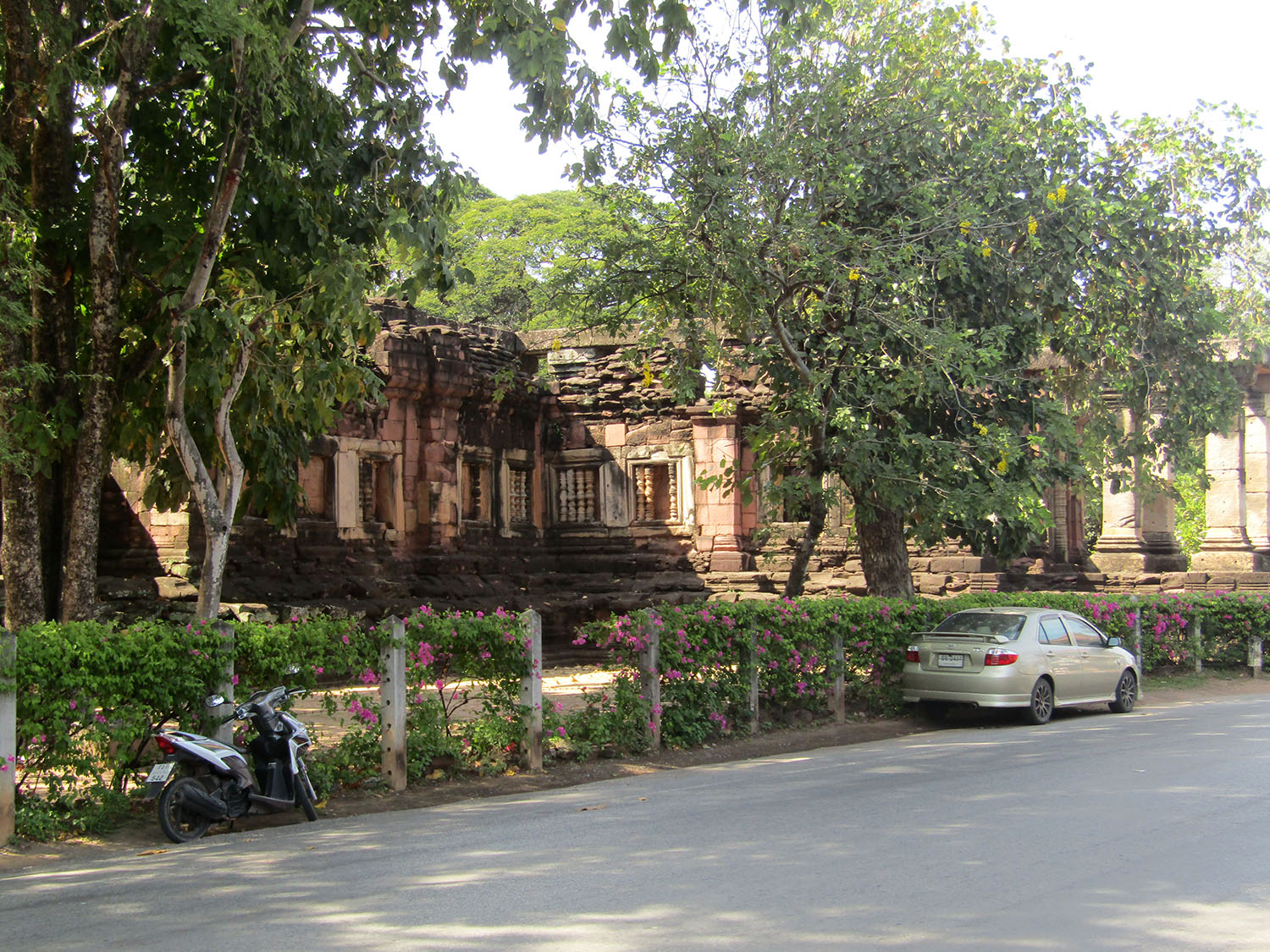
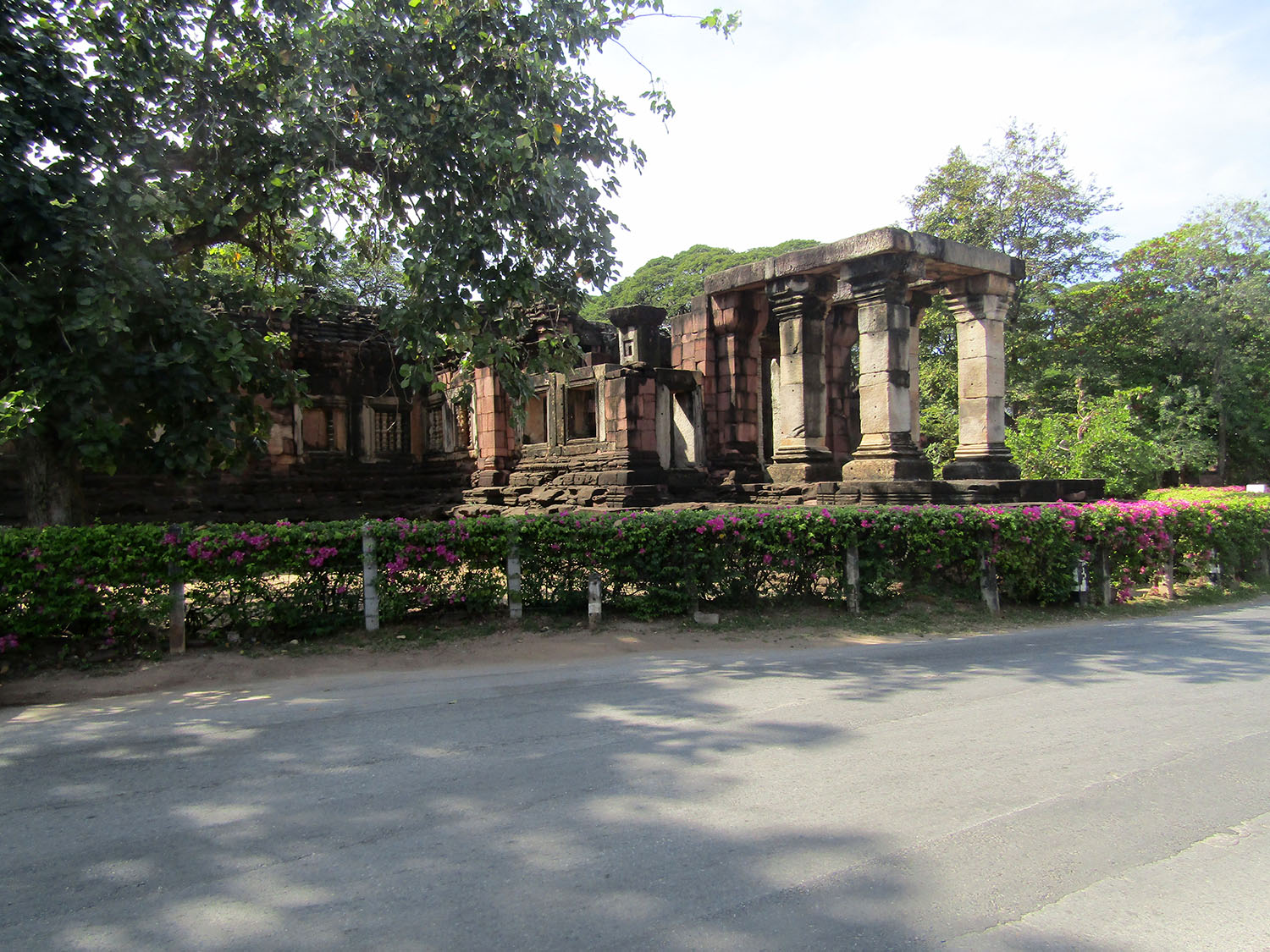
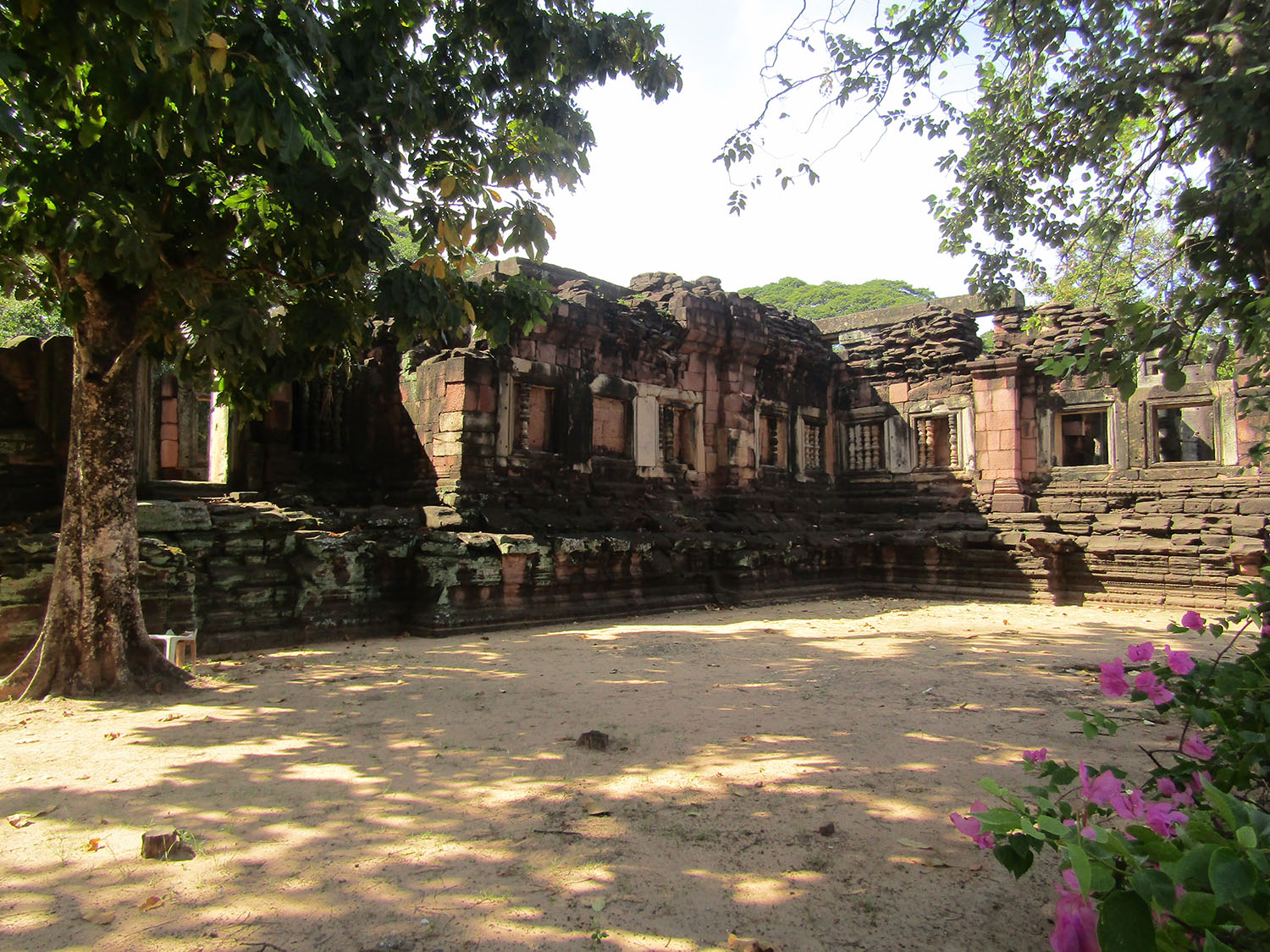
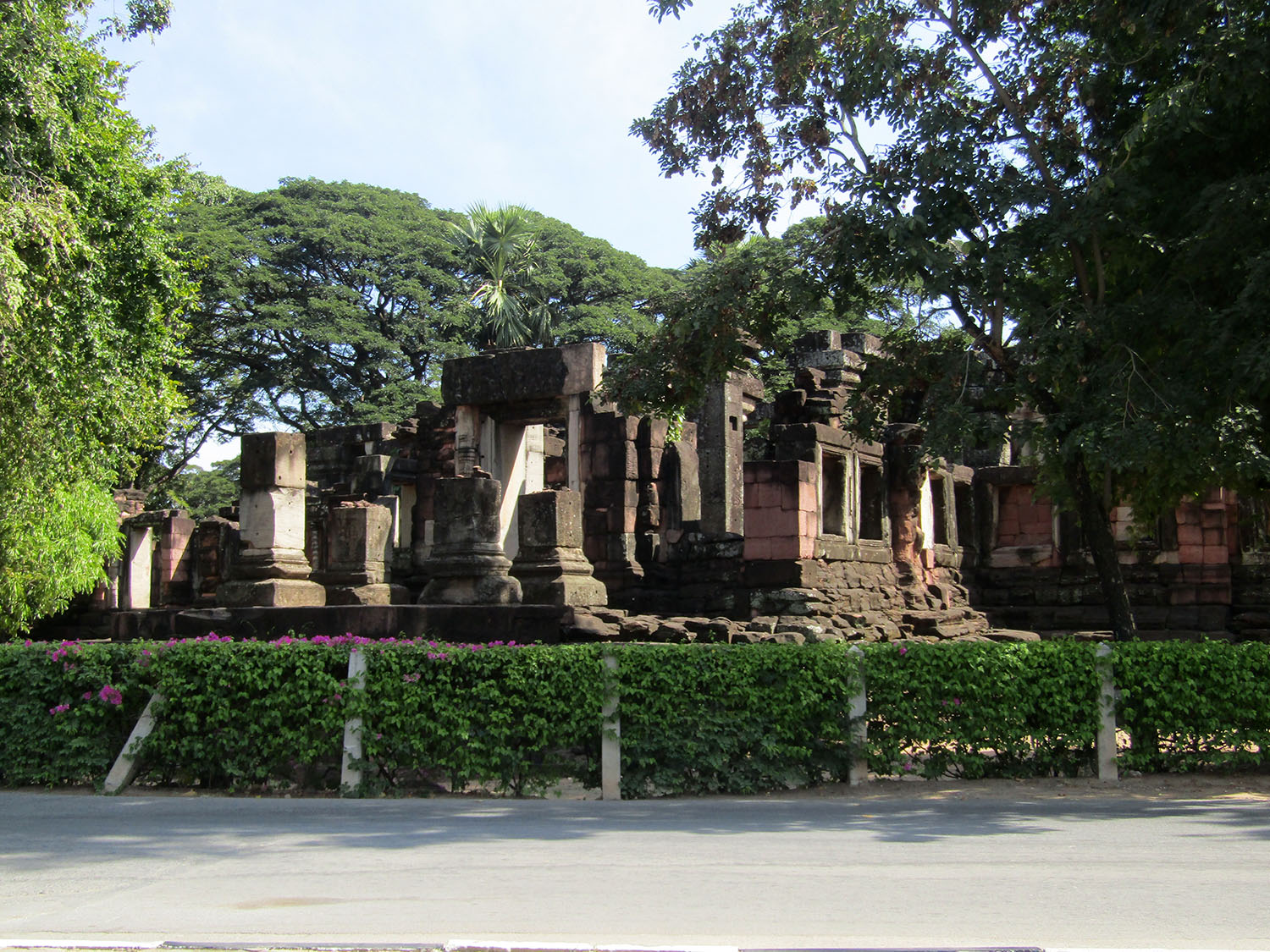
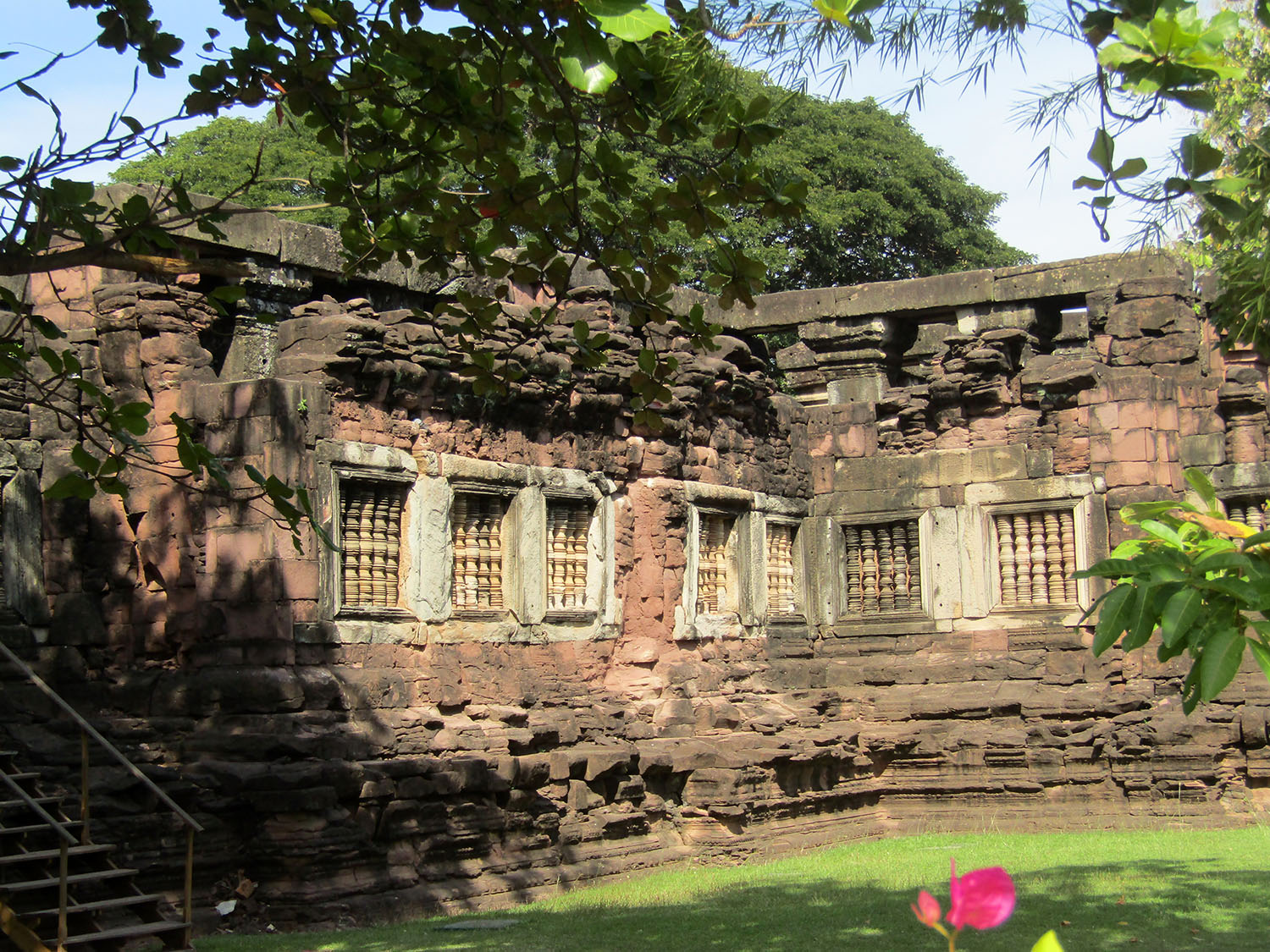
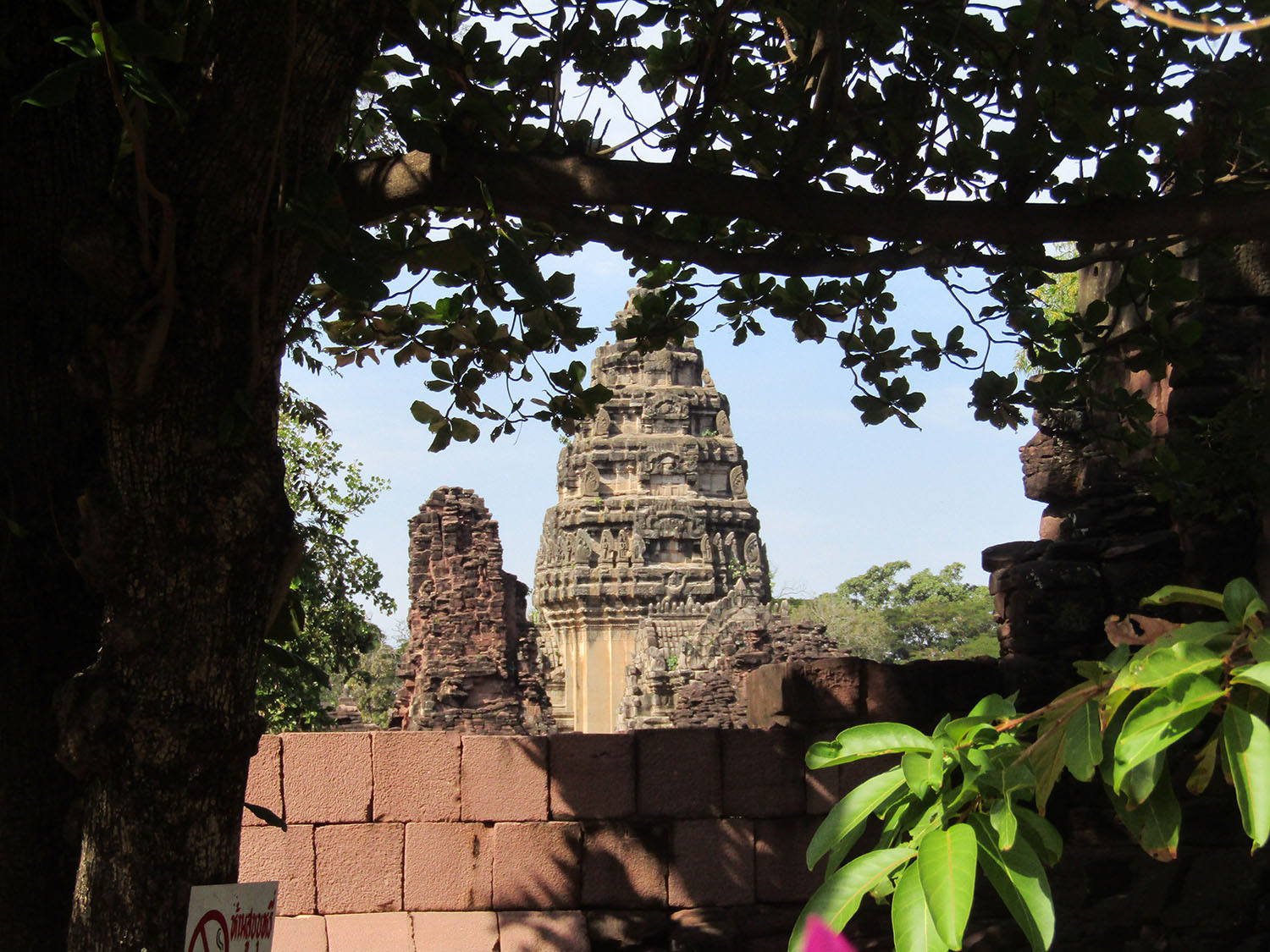
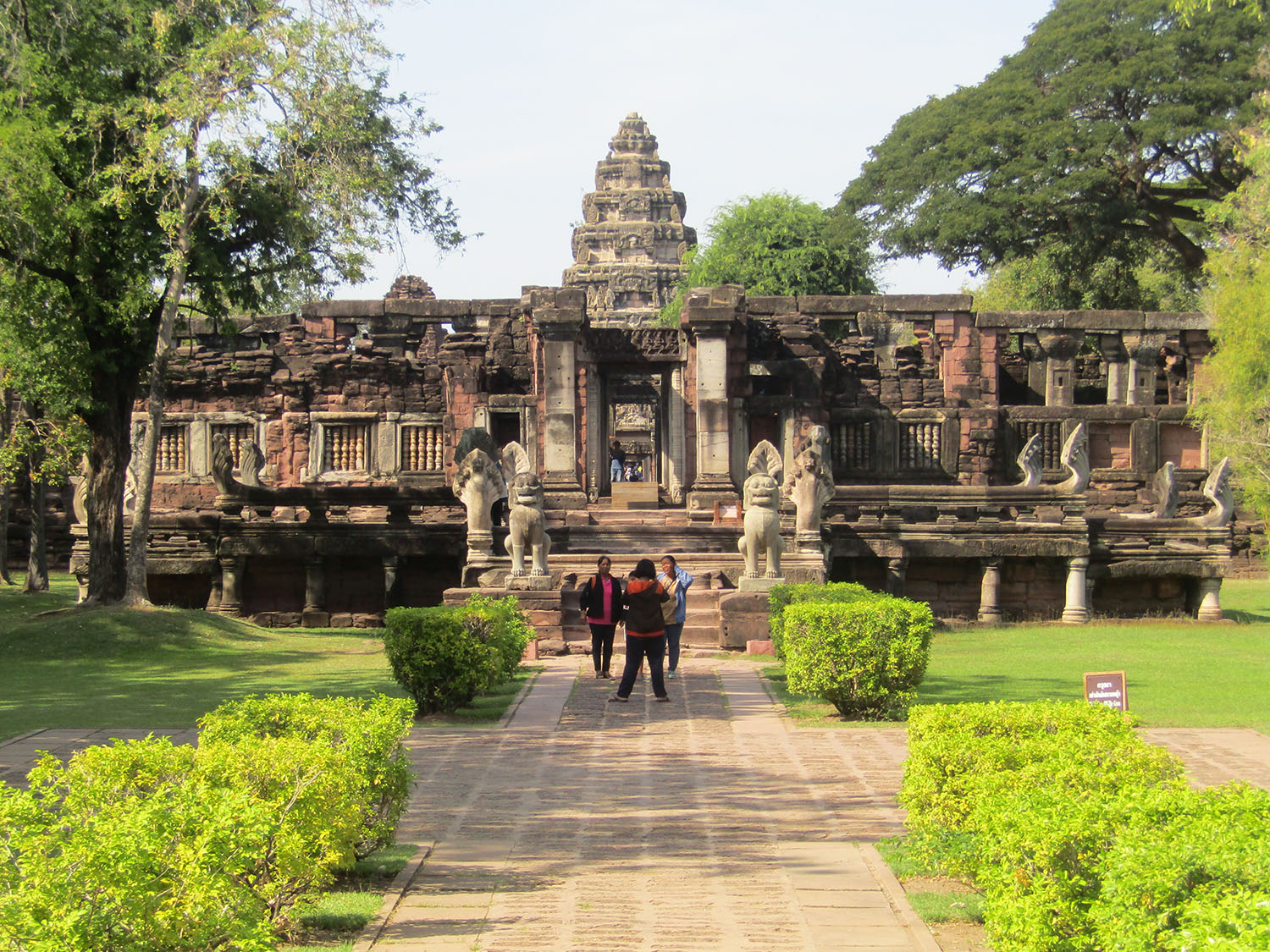
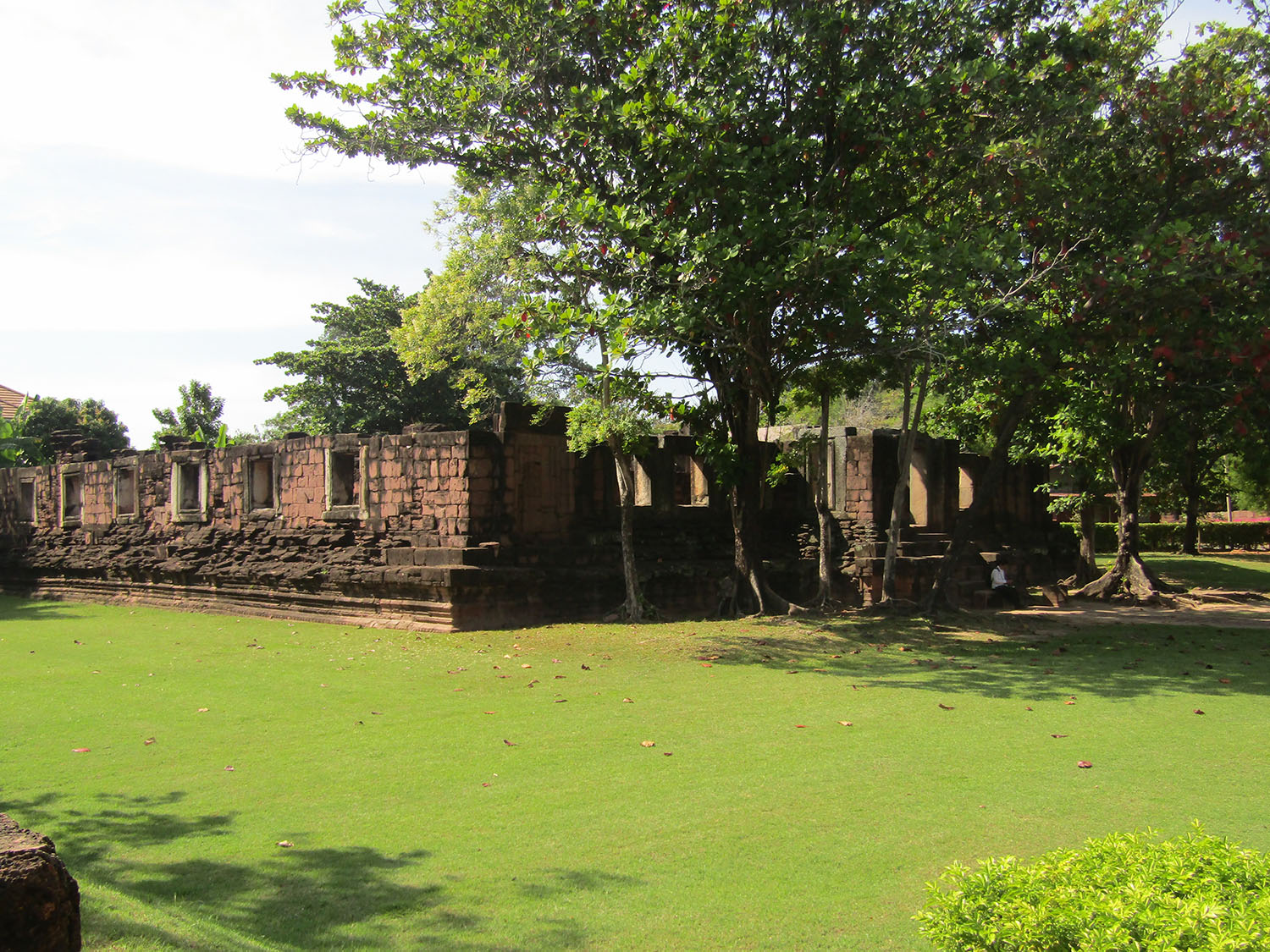
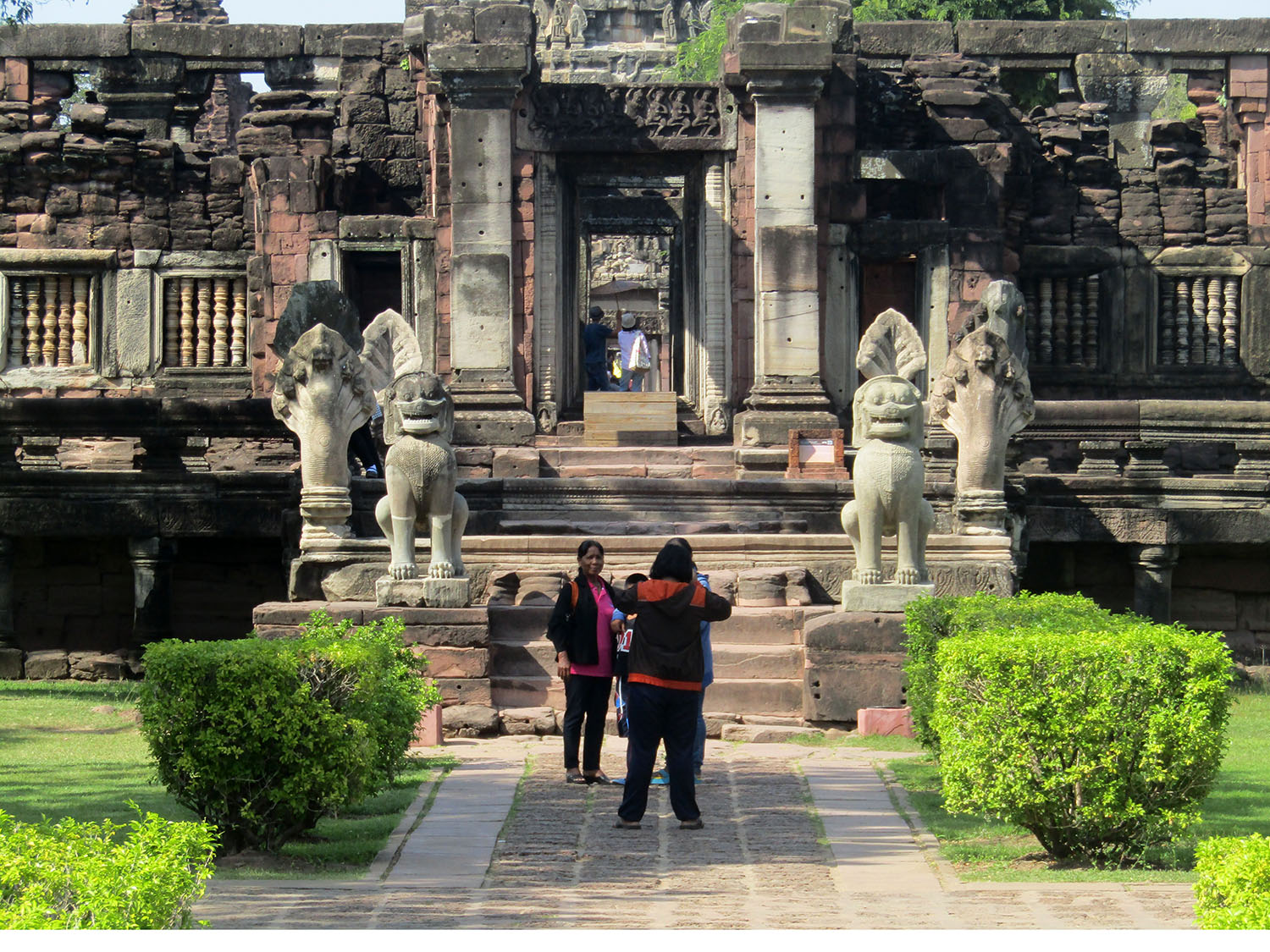 Phimai Santuary, Phimai, Nakhon Ratchasima Province
Phimai Santuary, Phimai, Nakhon Ratchasima Province
Meru Brahmathat……..Meru Brahmathat is an ancient supa on a mound located in the town. The site is currently closed as the intention is to develop the site into a park.
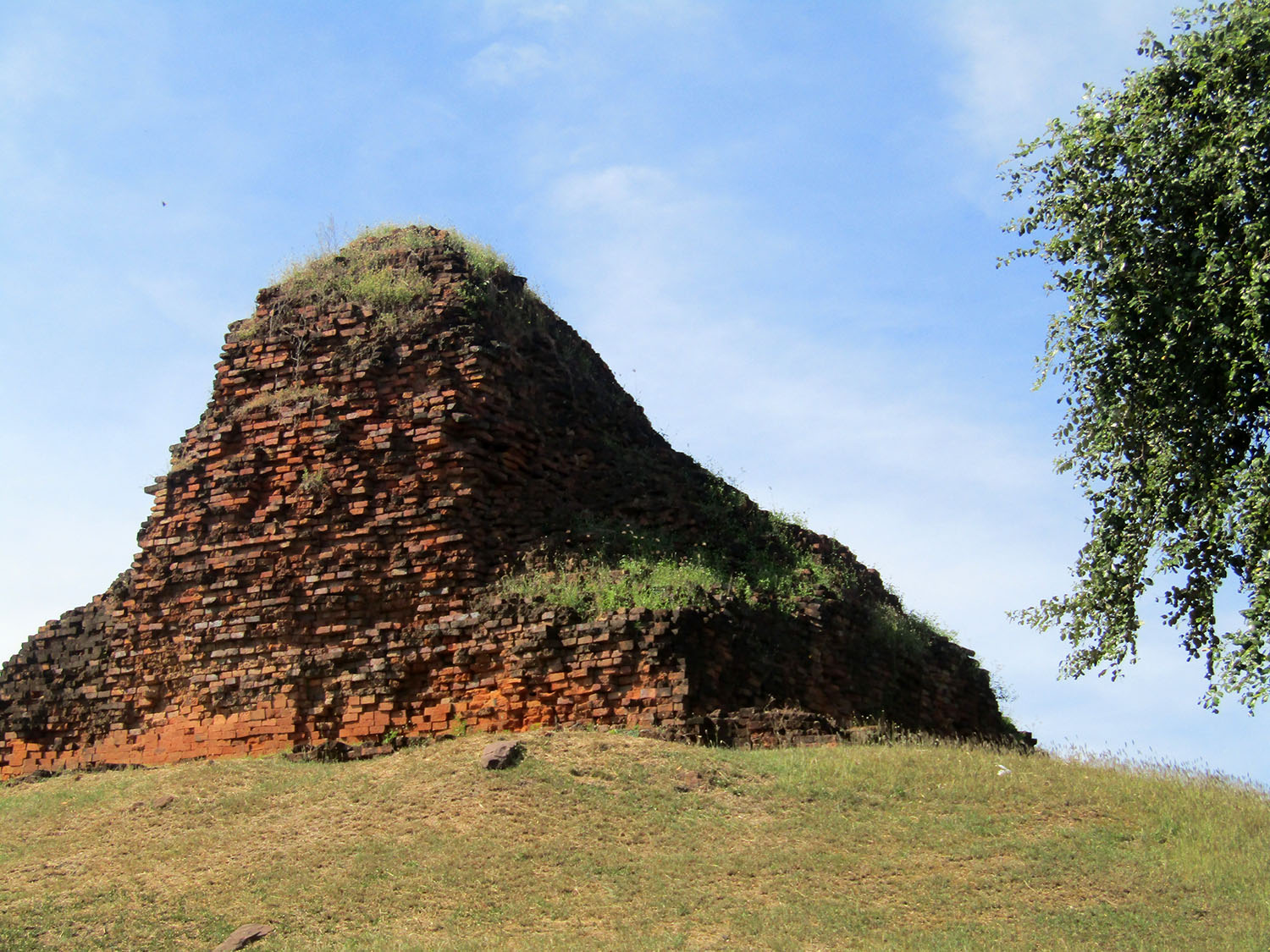
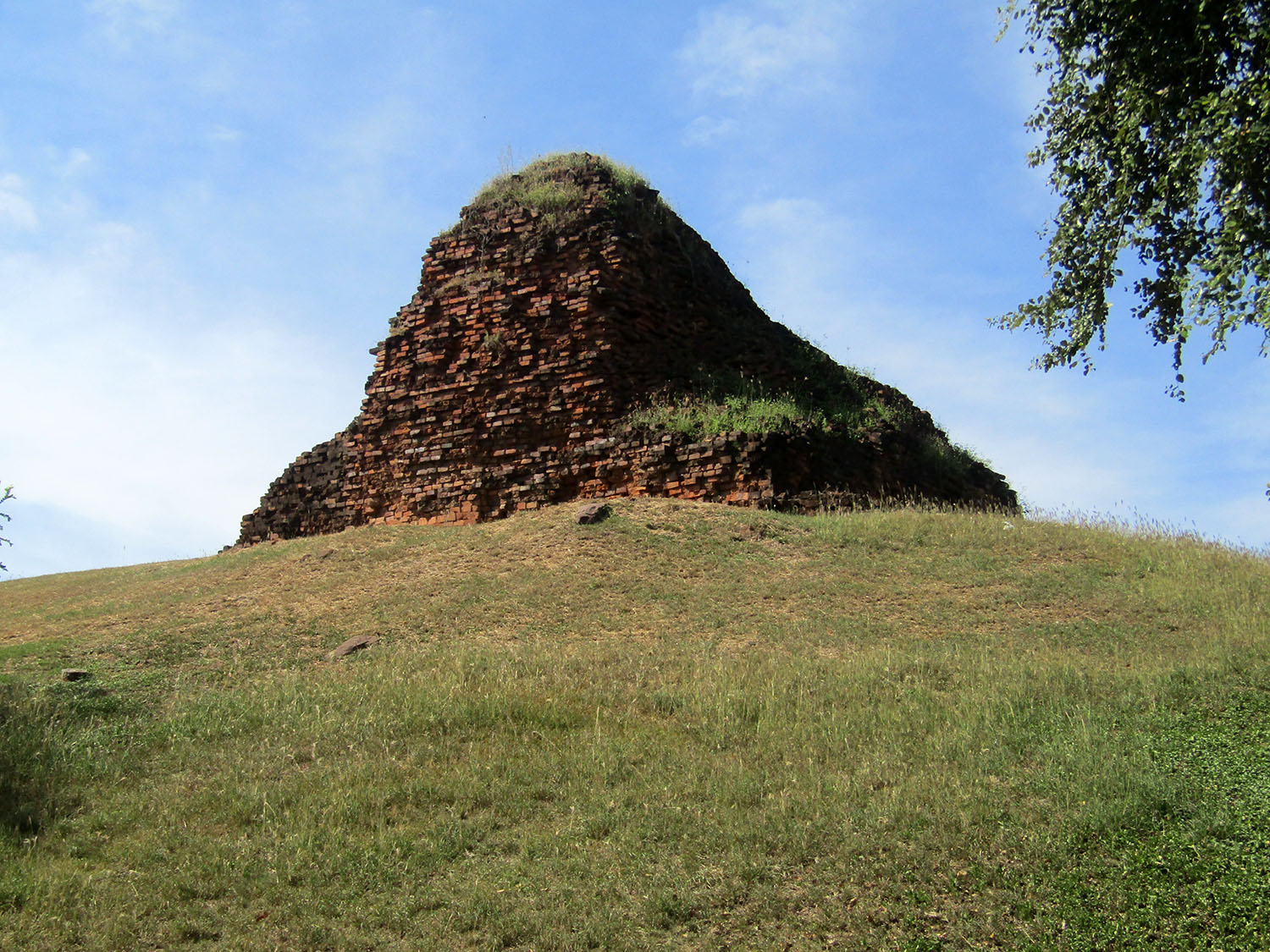
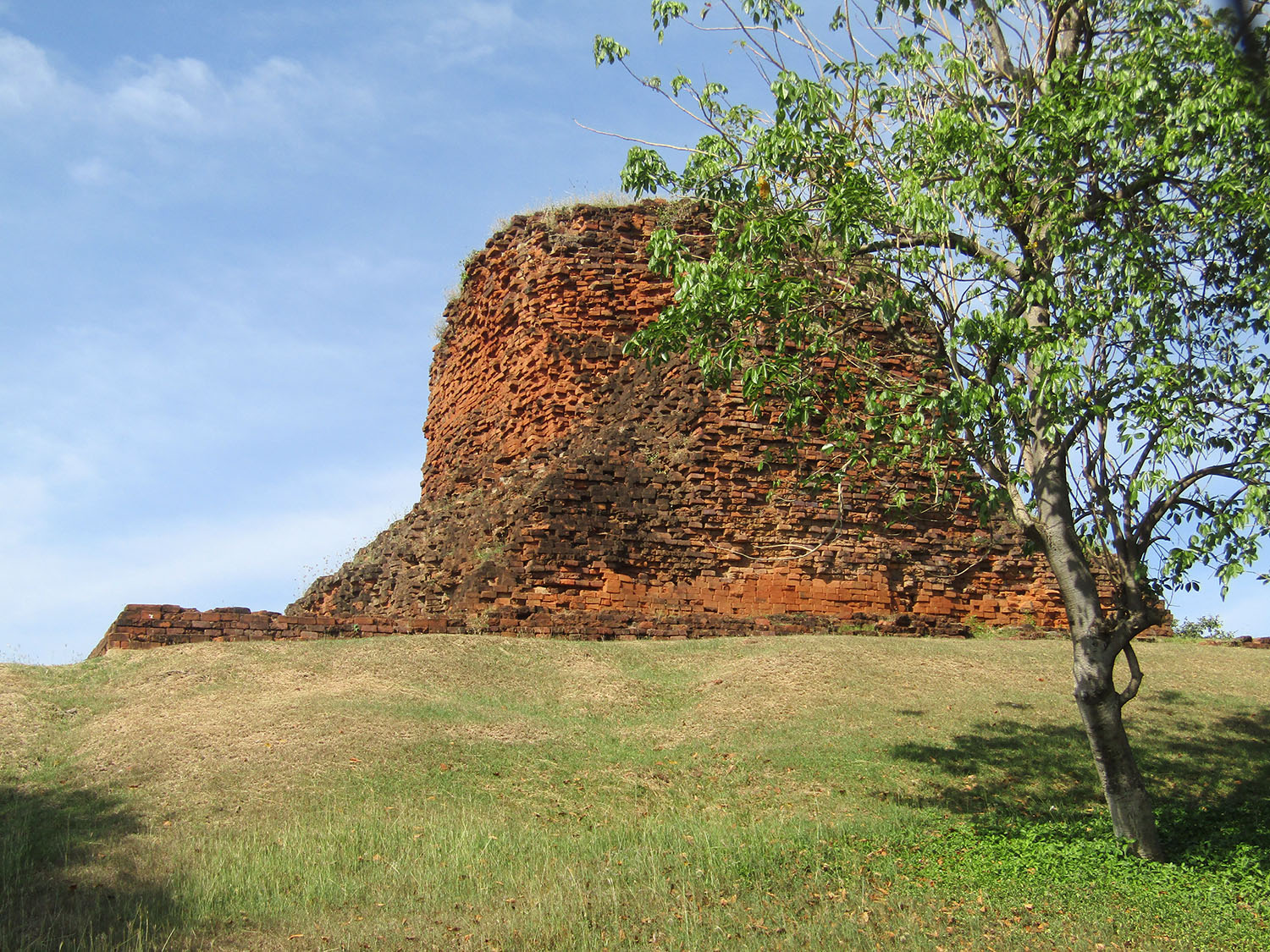 Meru Brahmathat, Phimai, Nakhon Ratchasima Province
Meru Brahmathat, Phimai, Nakhon Ratchasima Province
Pratu Chai, Southern (Victory) Gate……..Pratu Chai is one of the old gates to the ancient city. As the time of my visit, heavy lifting gear is on site and blocks laid out carefully numbered suggesting that they intend to rebuild the gate, a most worthwhile project.
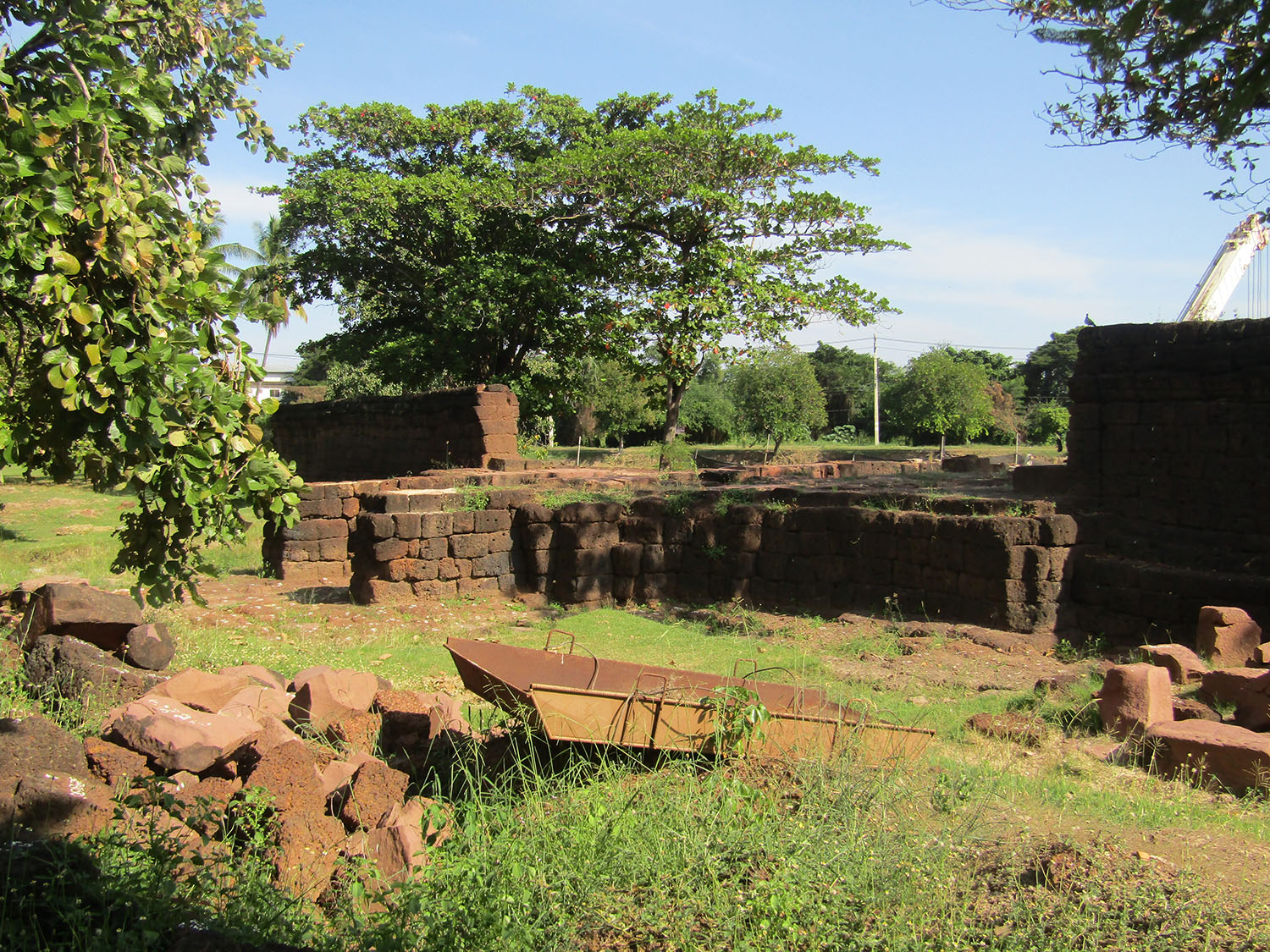
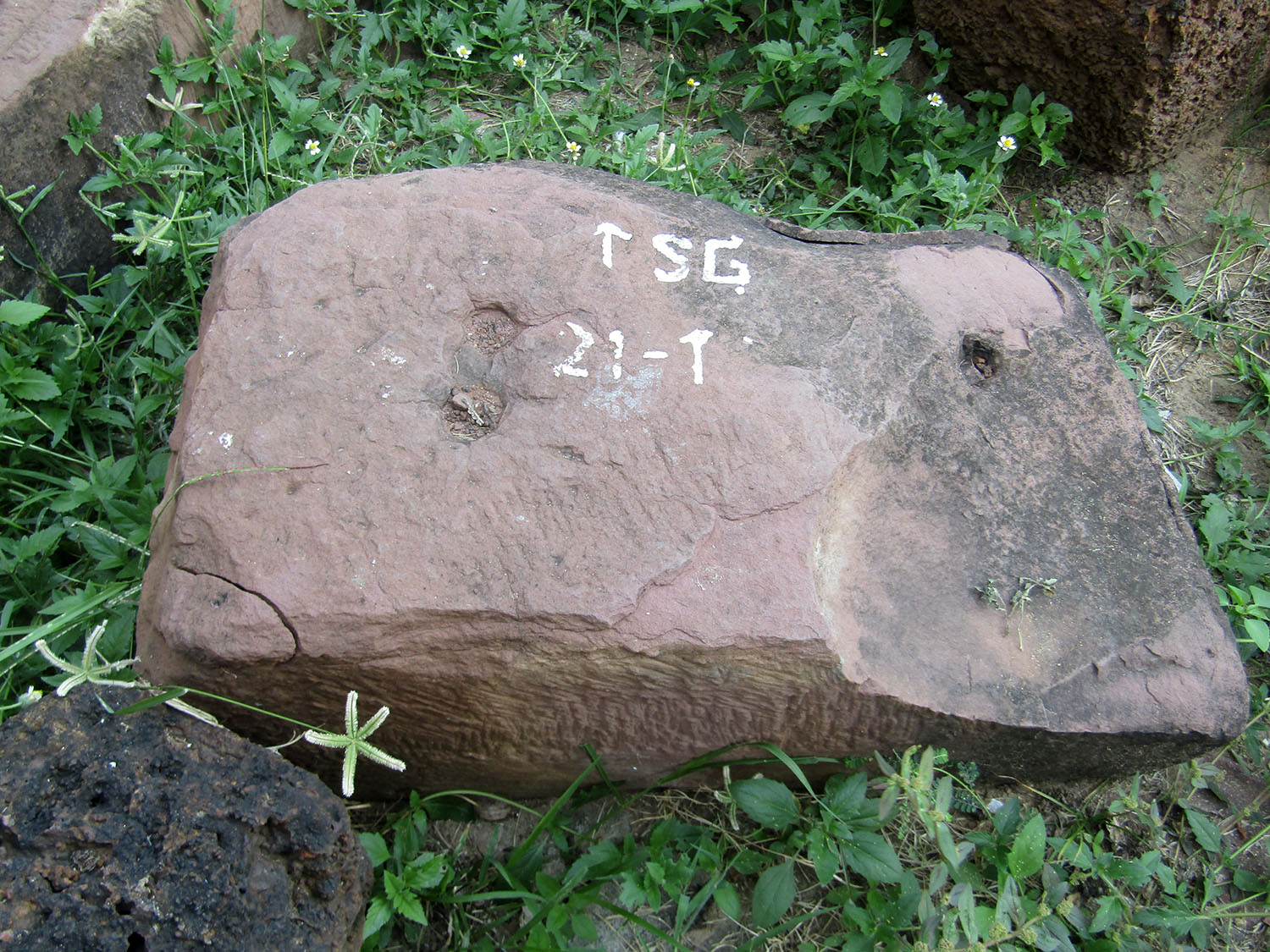
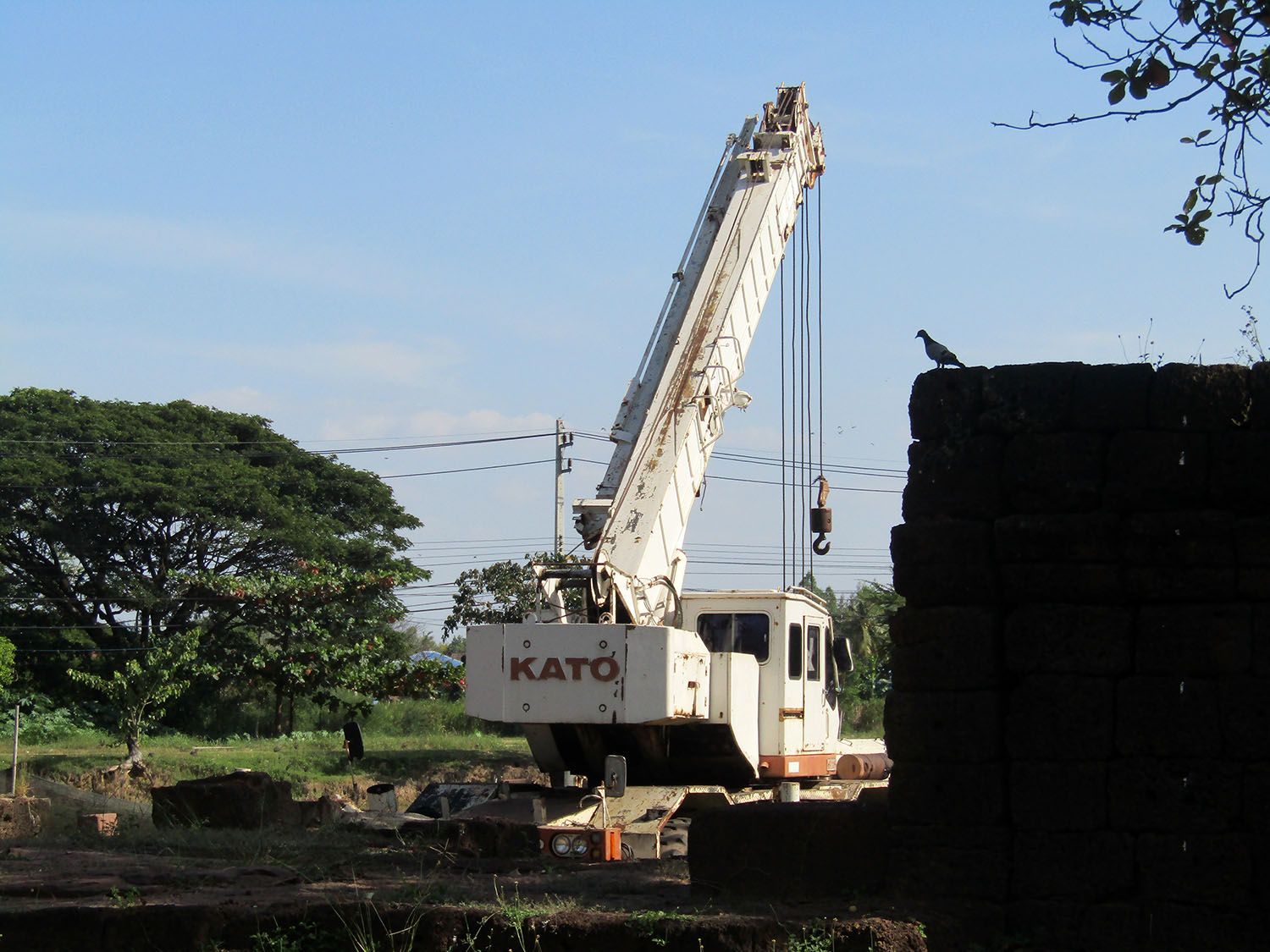
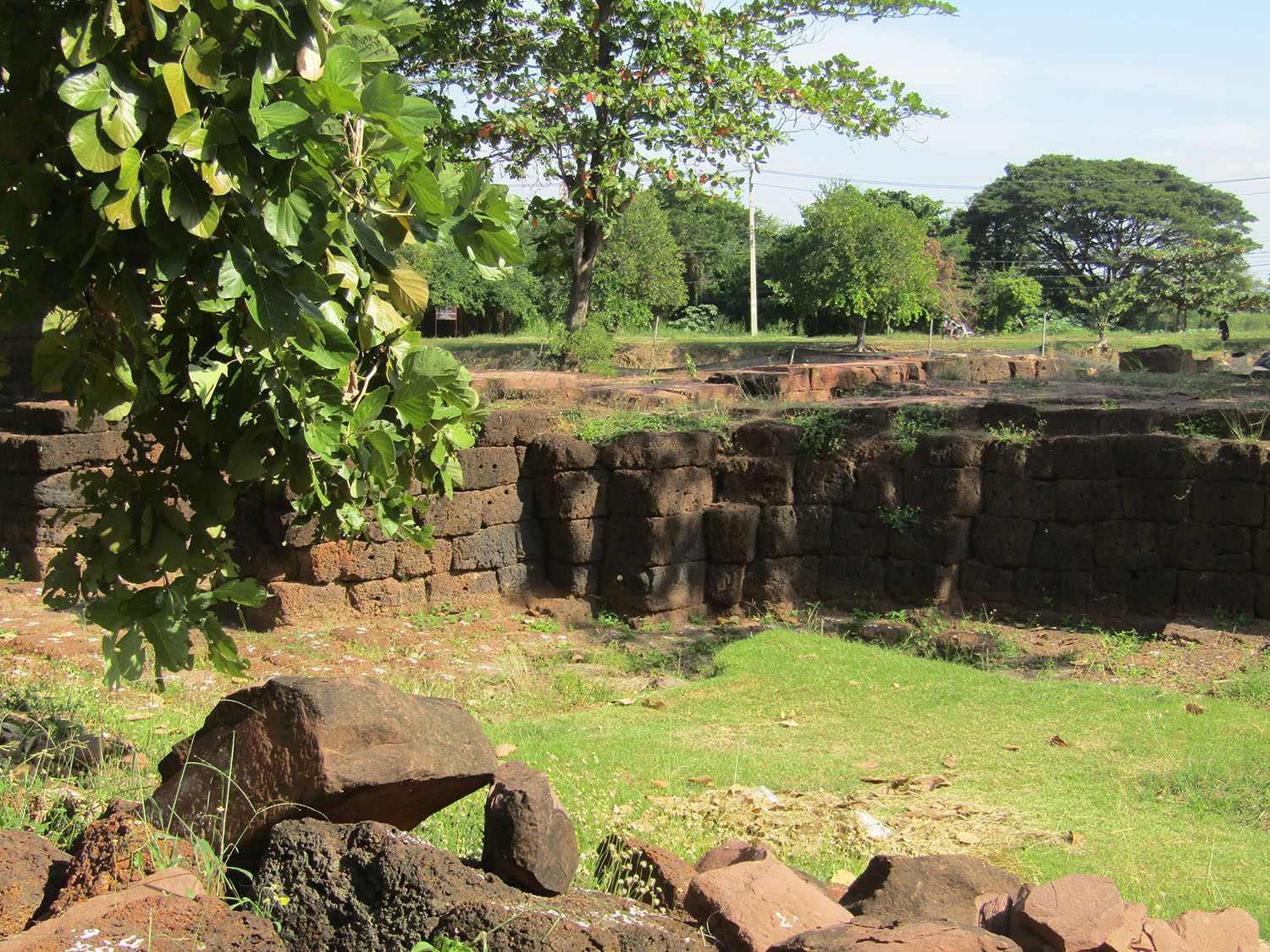
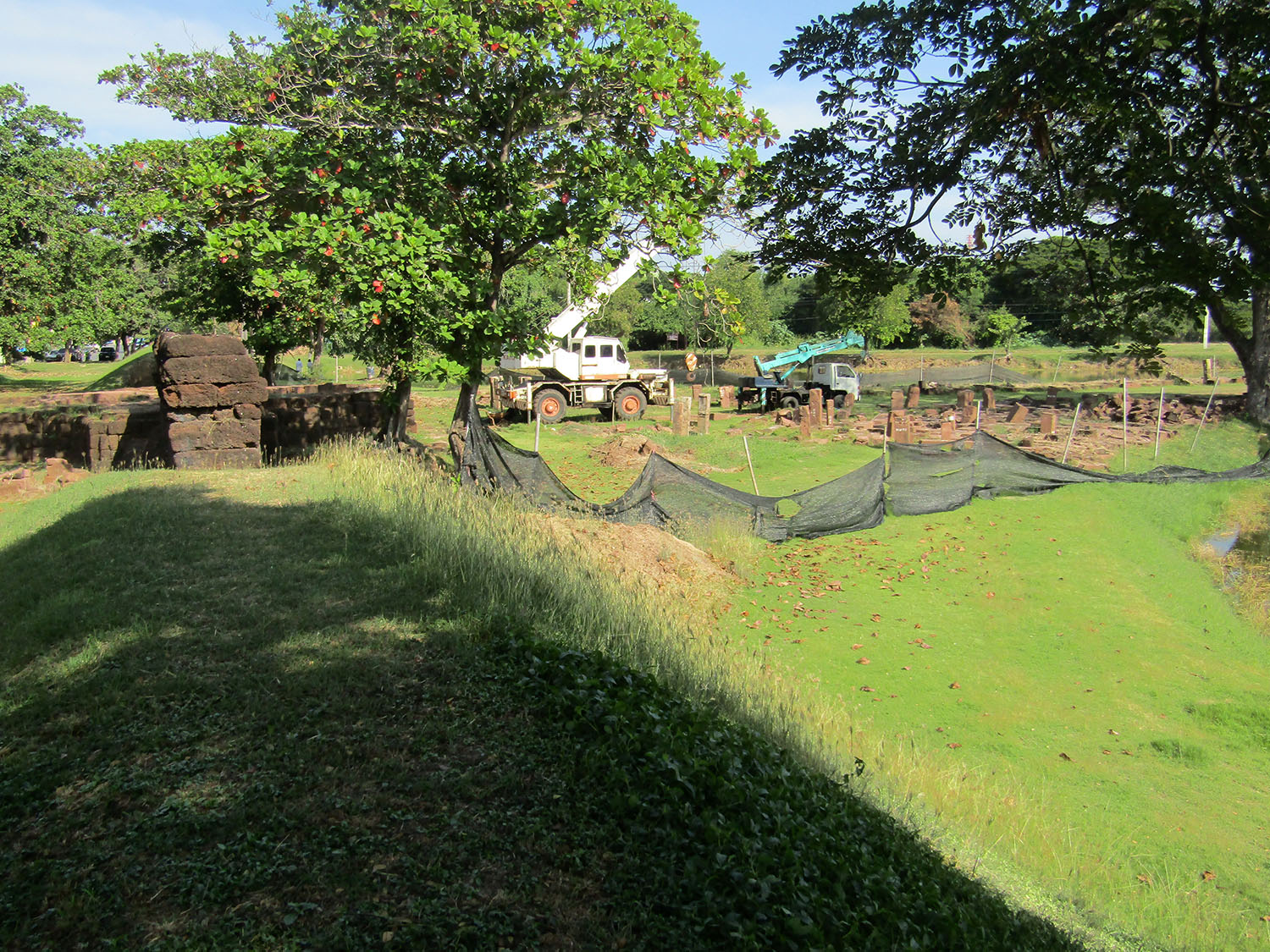
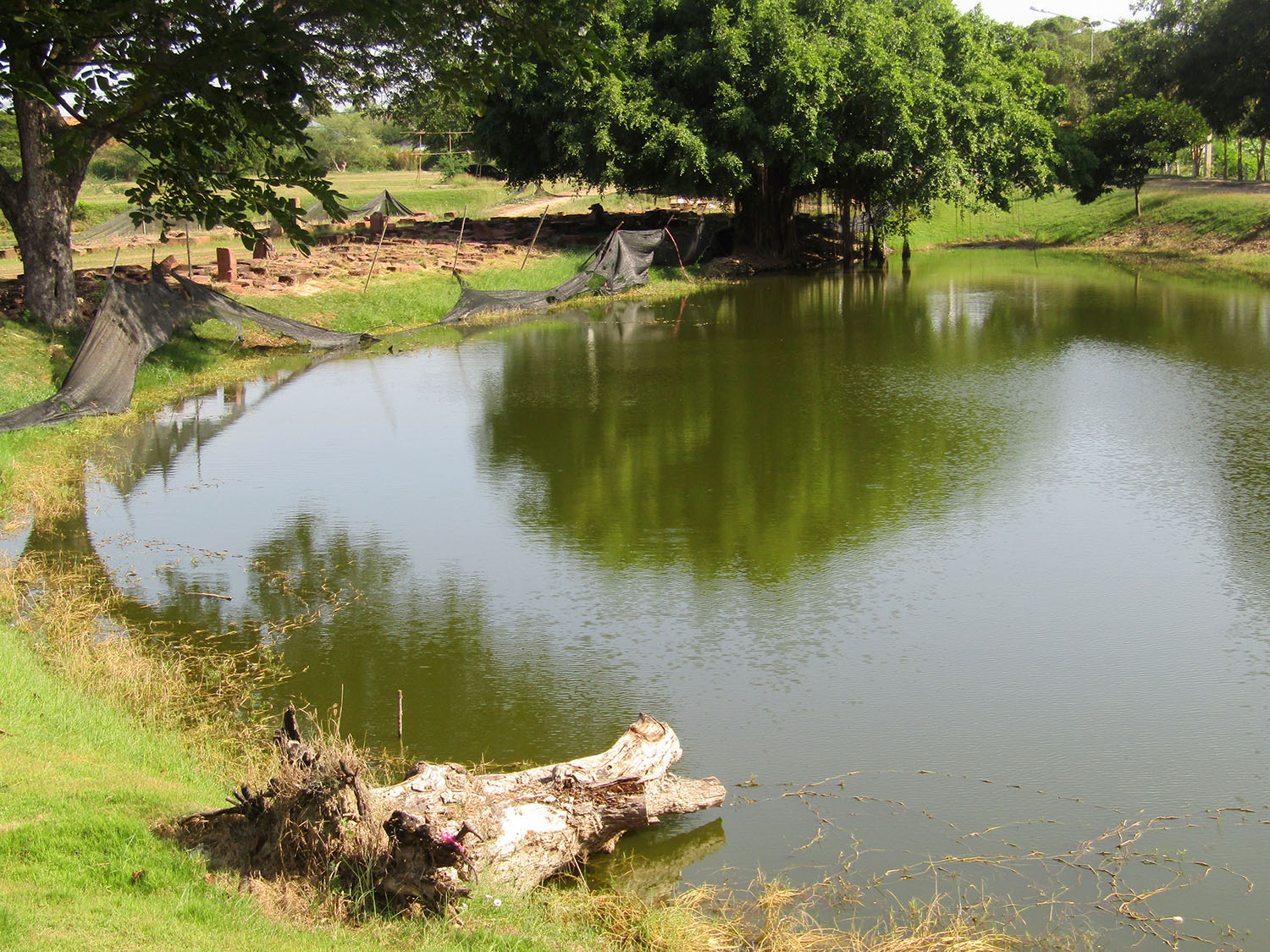 Pratu Chai, Southern (Victory) Gate, Phimai, Nakhon Ratchasima Province
Pratu Chai, Southern (Victory) Gate, Phimai, Nakhon Ratchasima Province
Kuti Ruesi or Prasat Kuti Rishi Noi……..South of the city is Kuti Ruesi, another arokayasala (medical station), one of 102 stations that King Jayavaraman VII ordered to be built in his kingdom. The structure consists of a tower built from sandstone and laterite. It stands on a square shaped base and faces southeast. There is also a small building known as ‘Banalai’. All of these buildings are surrounded by a laterite wall. Outside the wall to the northeast is a small pond lined with laterite blocks.
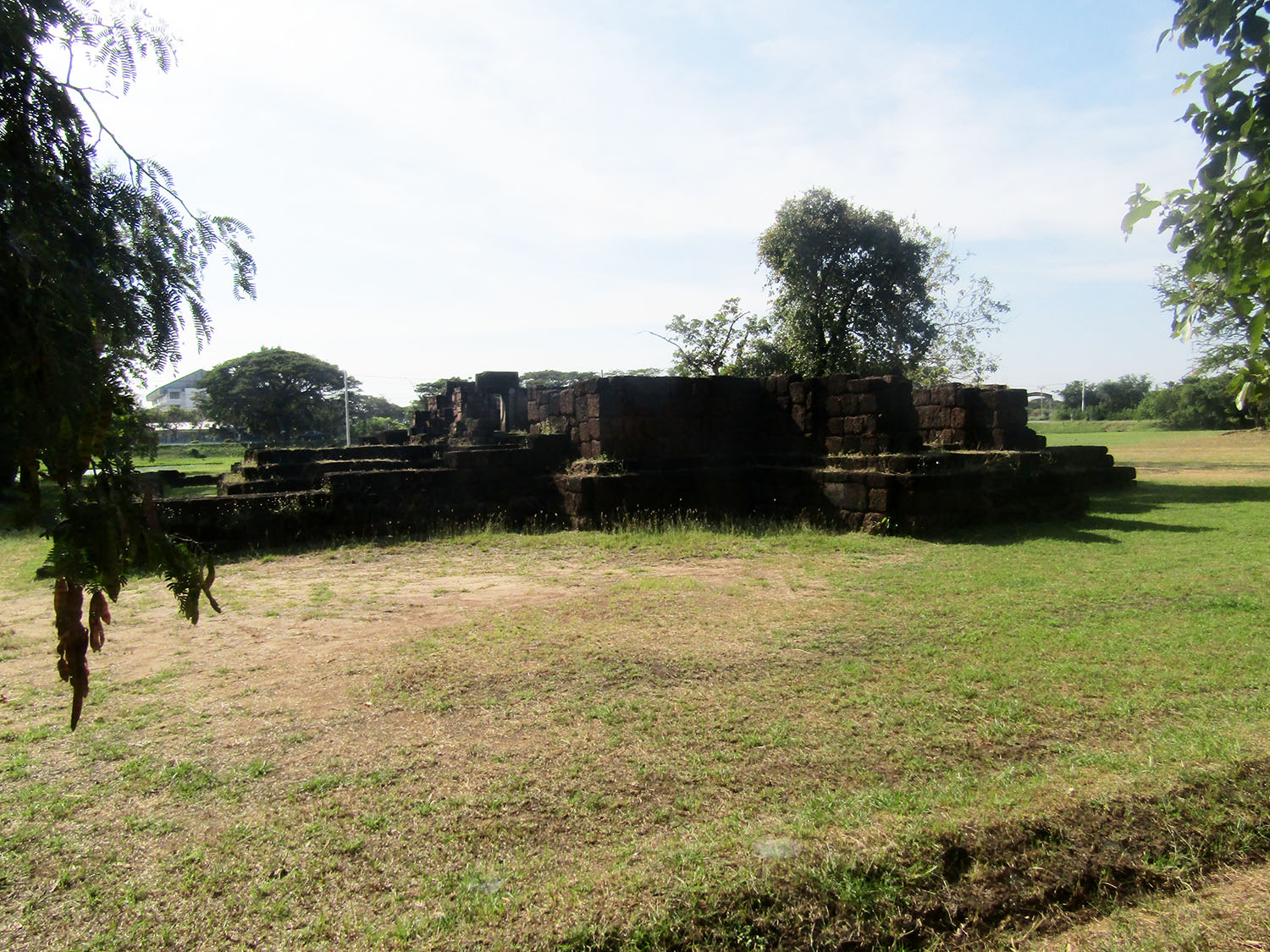
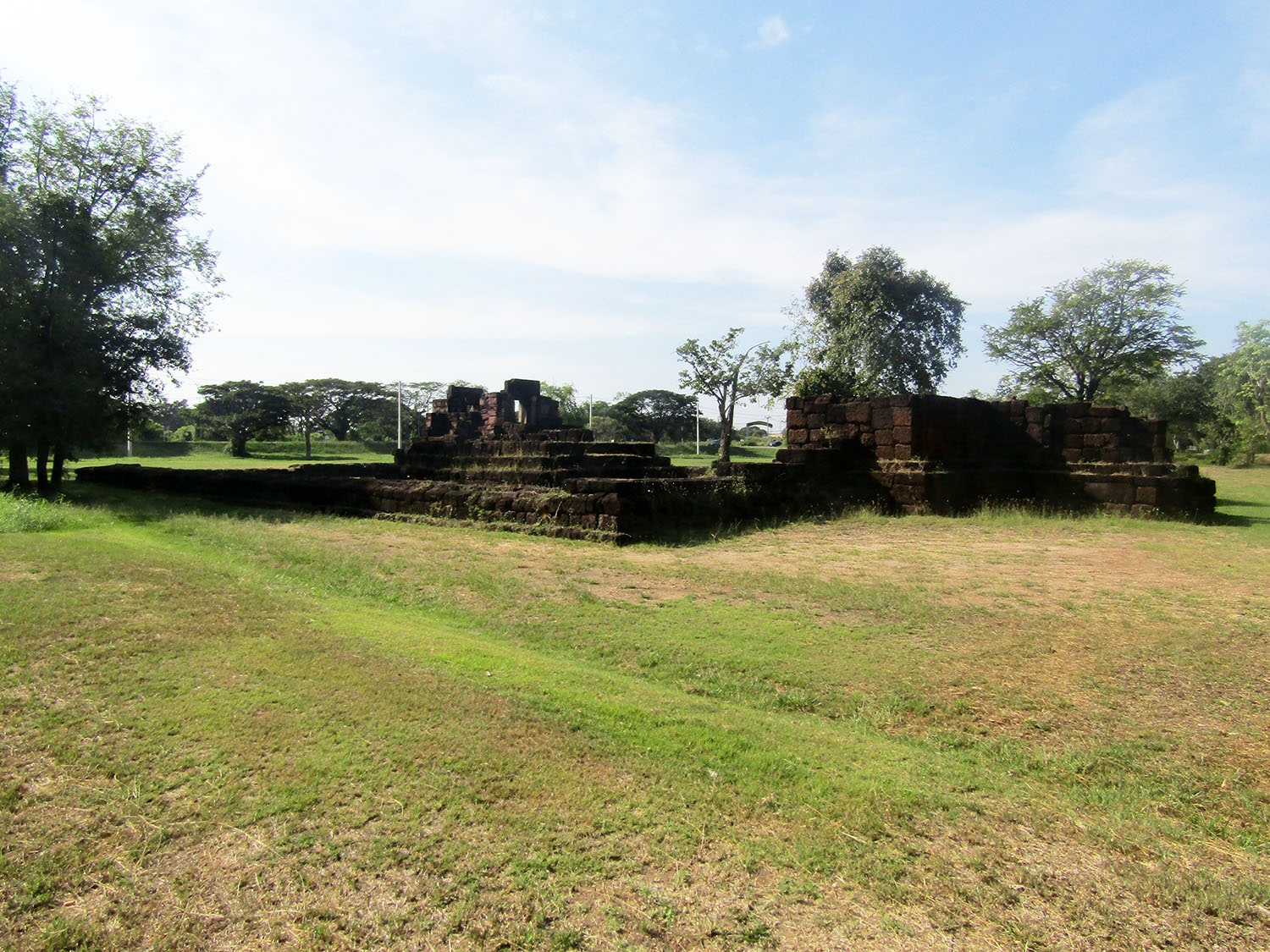
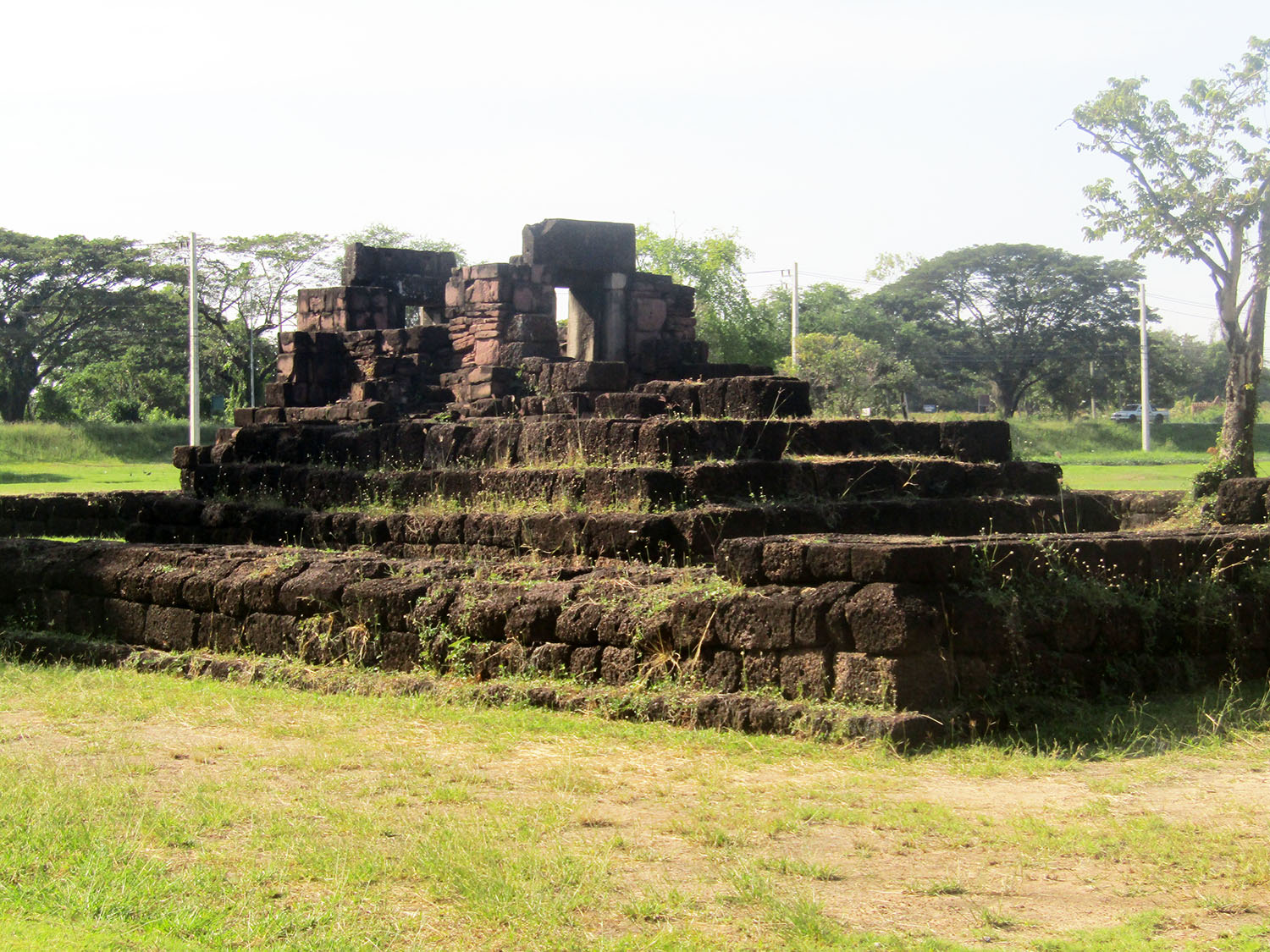
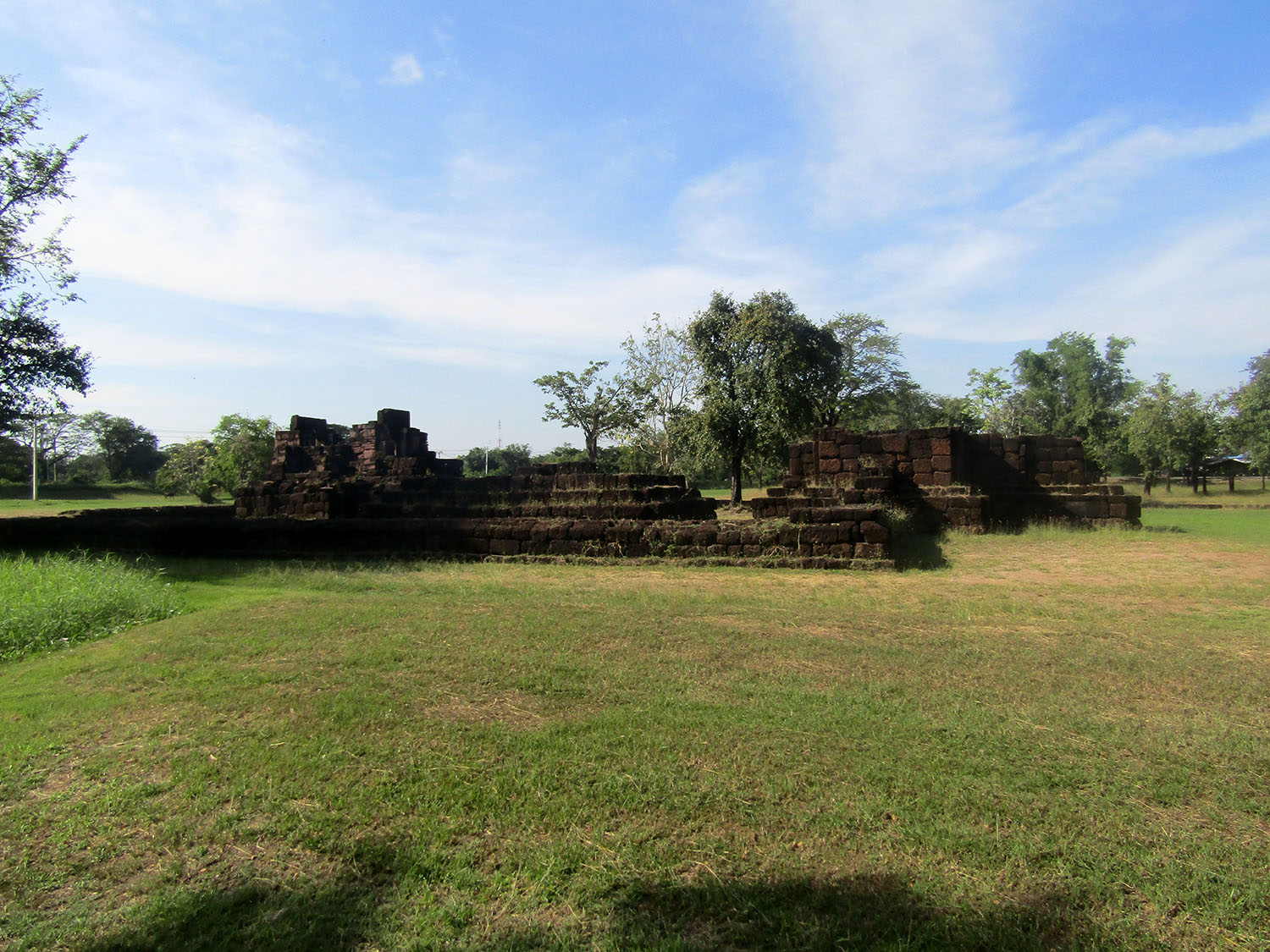
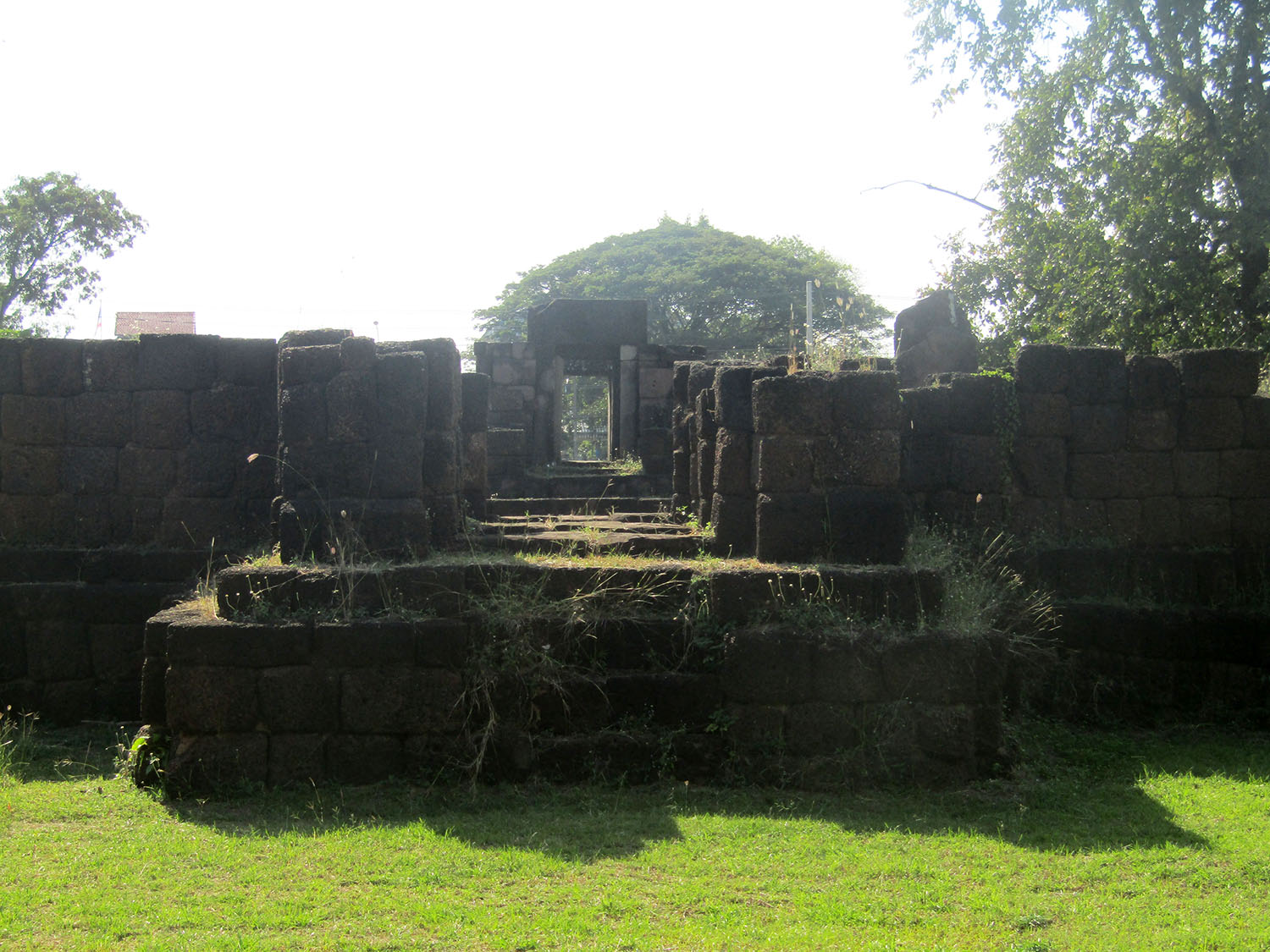
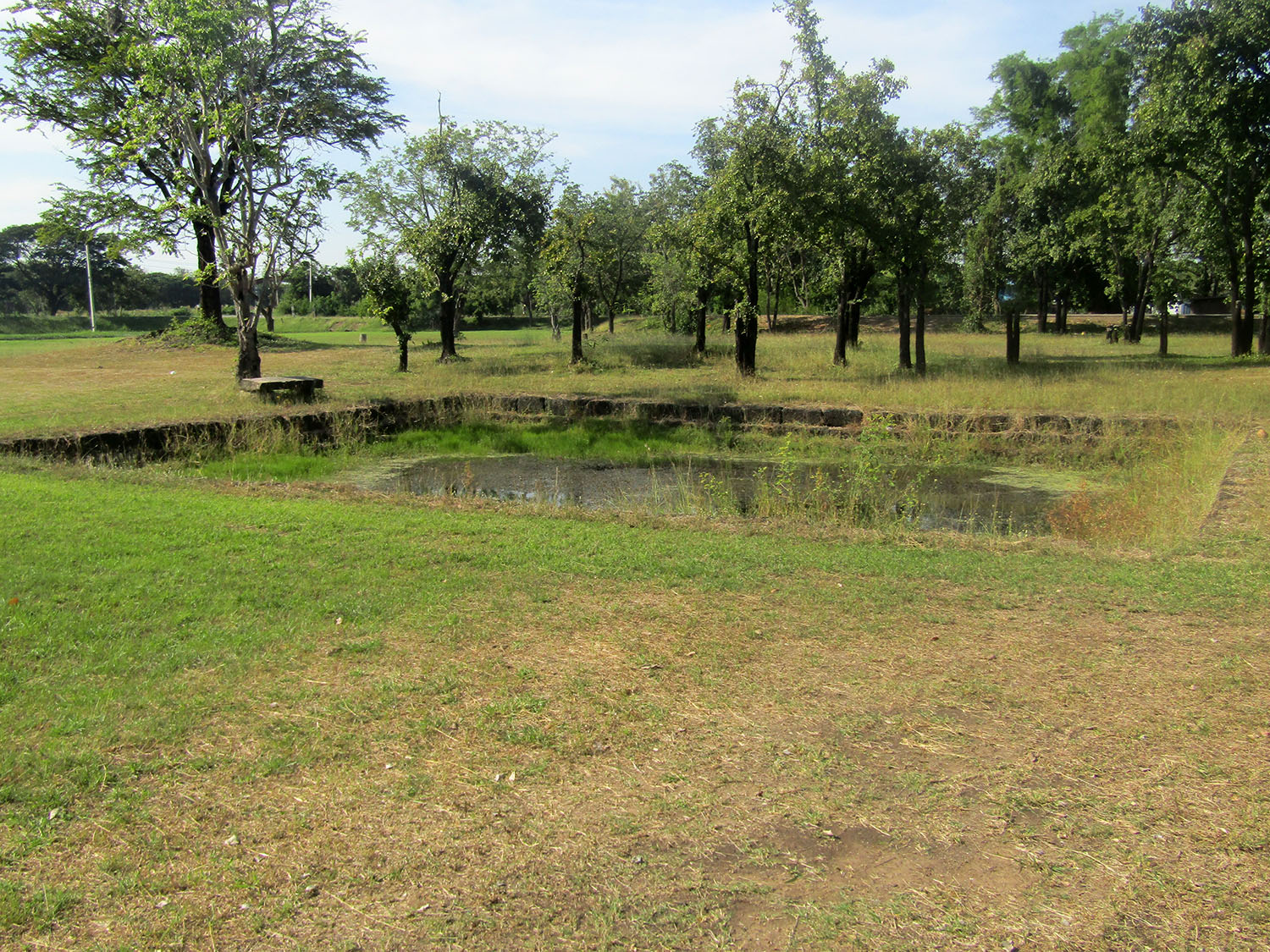 Kuti Ruesi or Prasat Kuti Rishi Noi, Phimai, Nakhon Ratchasima Province
Kuti Ruesi or Prasat Kuti Rishi Noi, Phimai, Nakhon Ratchasima Province
With the medical station being the last site visit in Phimai, I feel most privileged to have covered this fascinating historic city in much greater detail than in the past but it’s time to move on. After nearly a week in Nakhon Ratchasima province we head for the provincial border with Buriram province. By midafternoon we’re in Khu Mueang district heading for what will be the final site visit of the day.
Play La Ploen……..Play La Ploen is an attraction consisting of flower and plant greenhouses with local and exotic plants. 6 Halls of different species include ferns, bromeliads, orchids, cactus and anthurium. A small coffee shop beside sells souvenirs and local products. As a bonus, there is a tram ride around the extensive cultivated grounds of the nursery. Entry 100 baht.
Play La Ploen……..Play La Ploen is an attraction consisting of flower and plant greenhouses with local and exotic plants. 6 Halls of different species include ferns, bromeliads, orchids, cactus and anthurium. A small coffee shop beside sells souvenirs and local products. As a bonus, there is a tram ride around the extensive cultivated grounds of the nursery. Entry 100 baht.
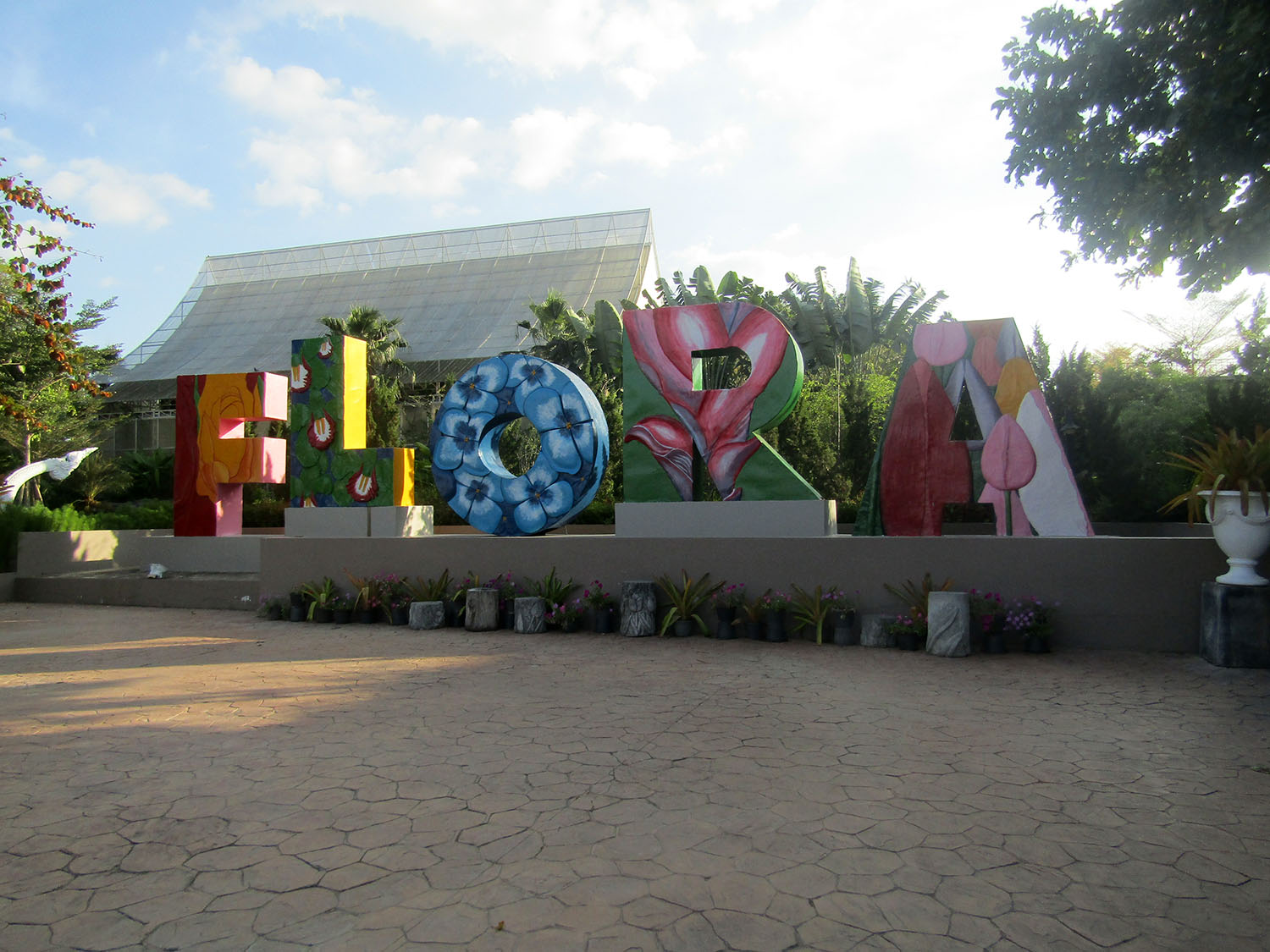
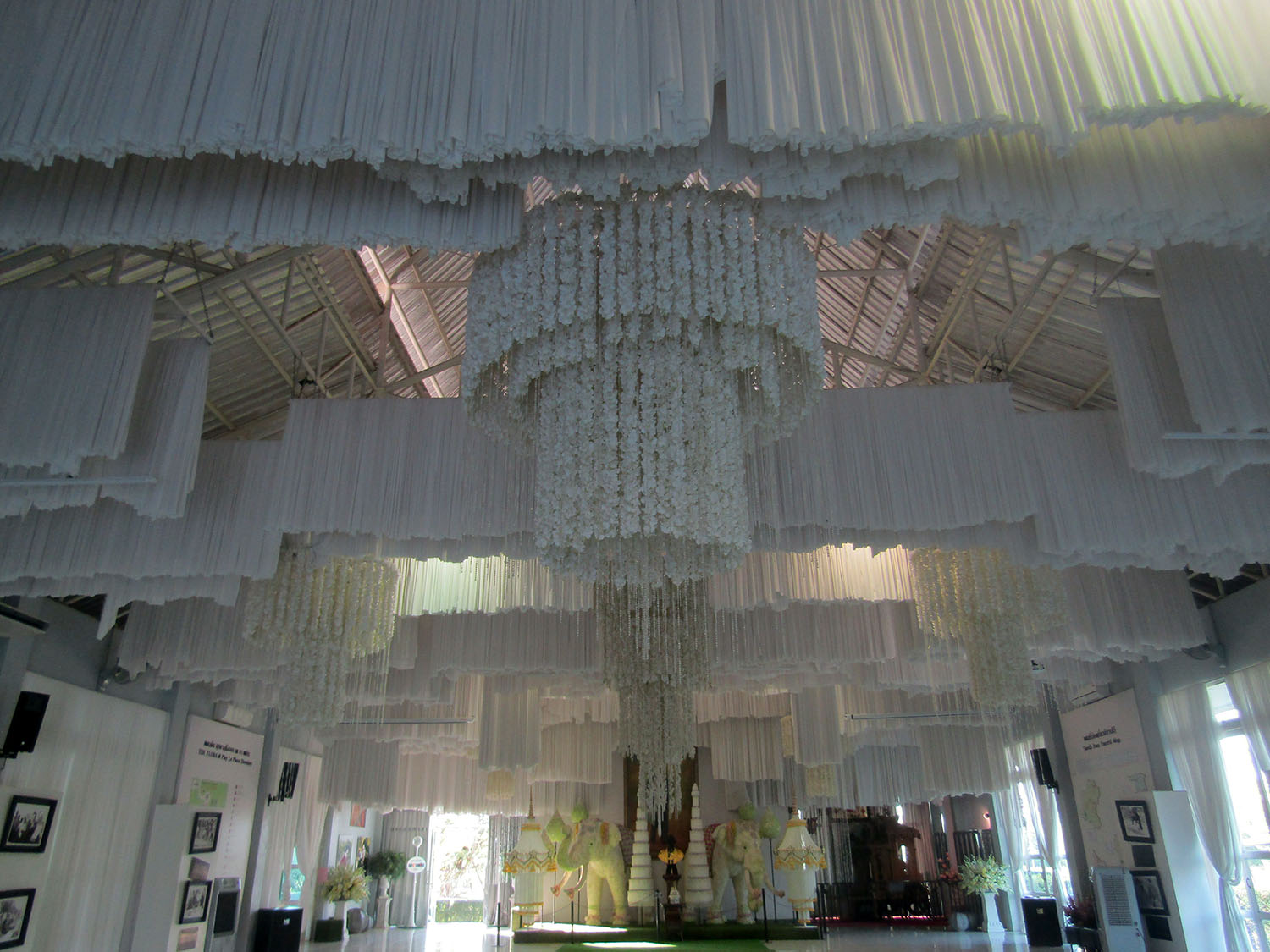
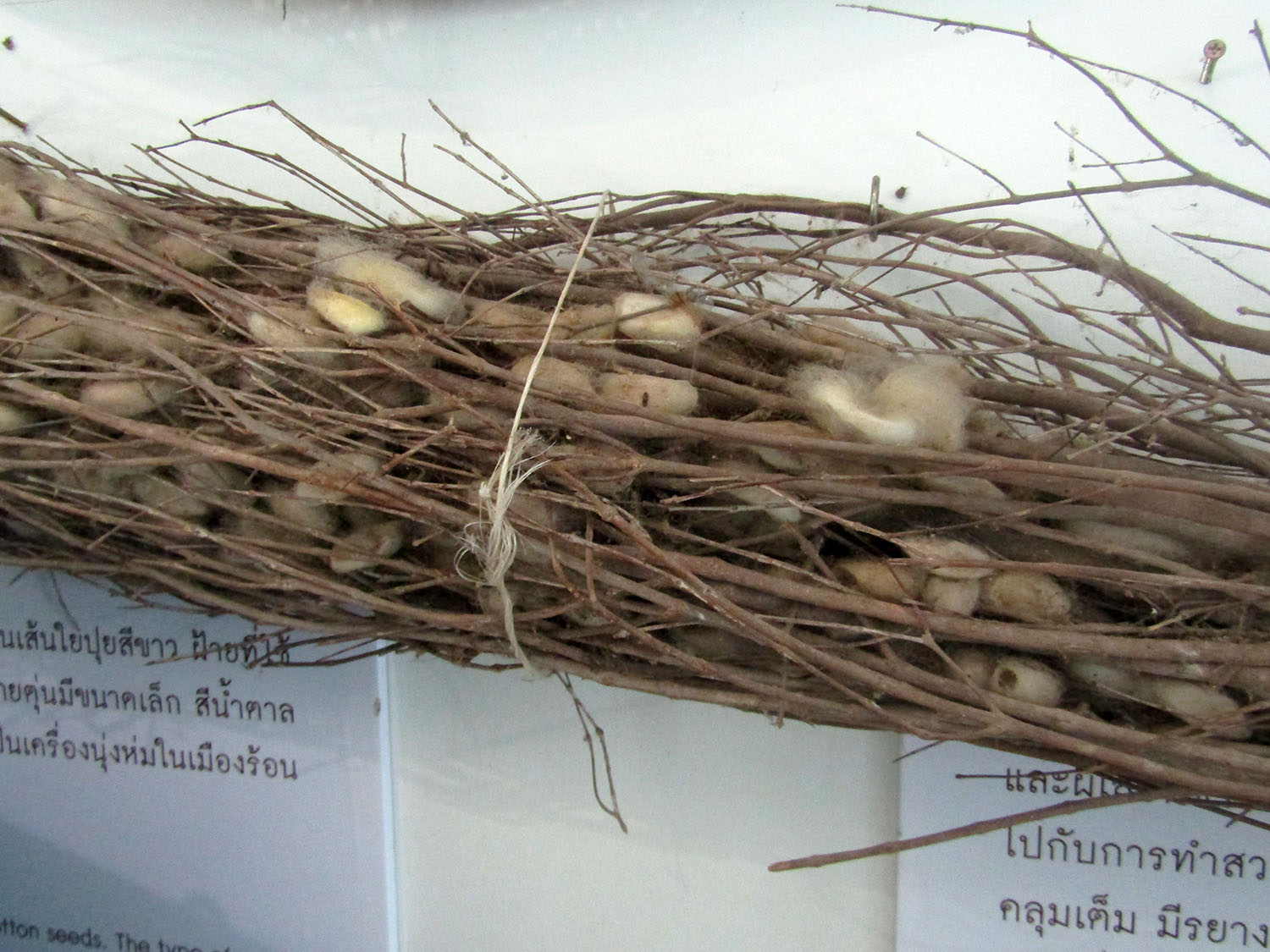
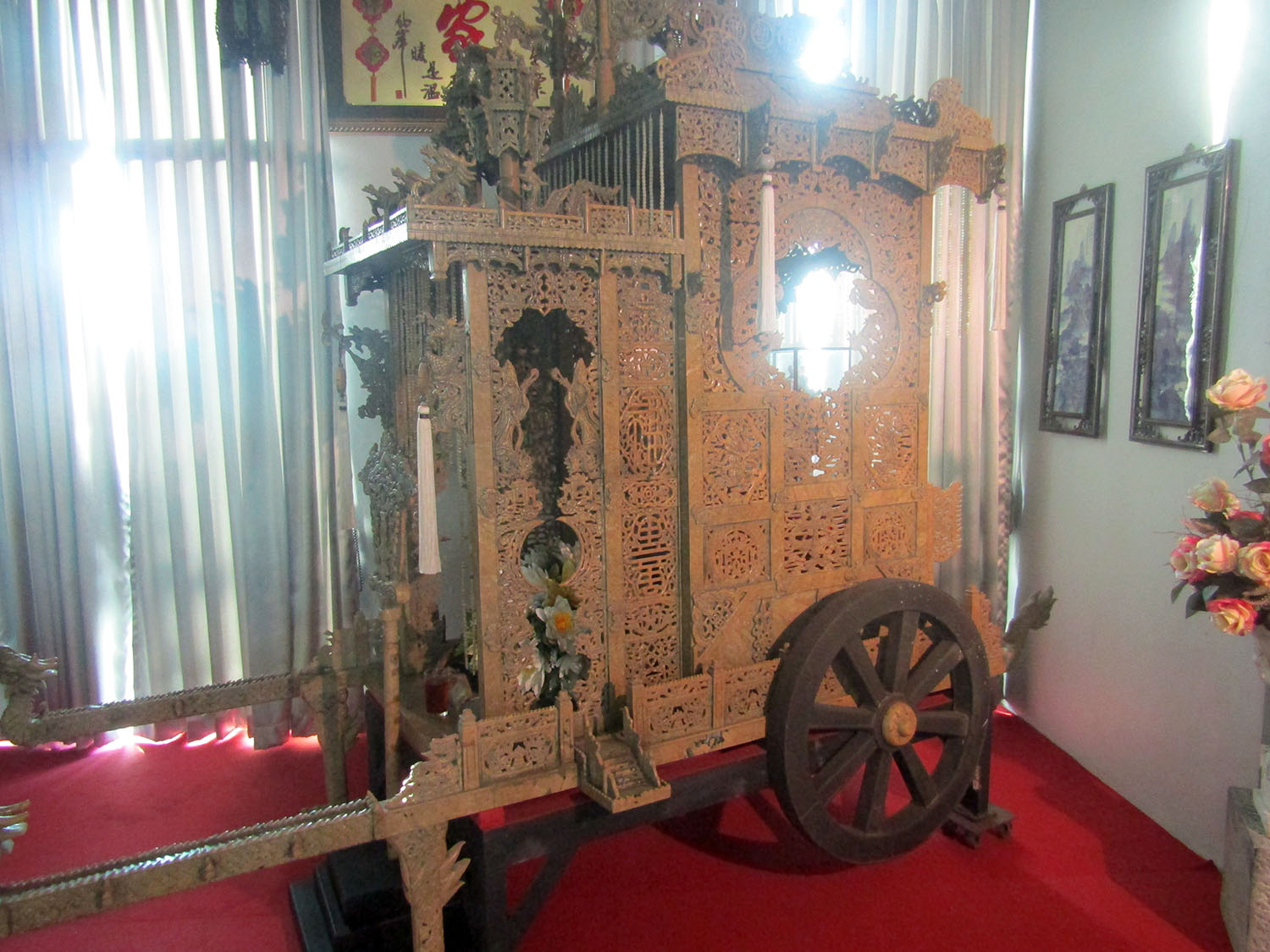
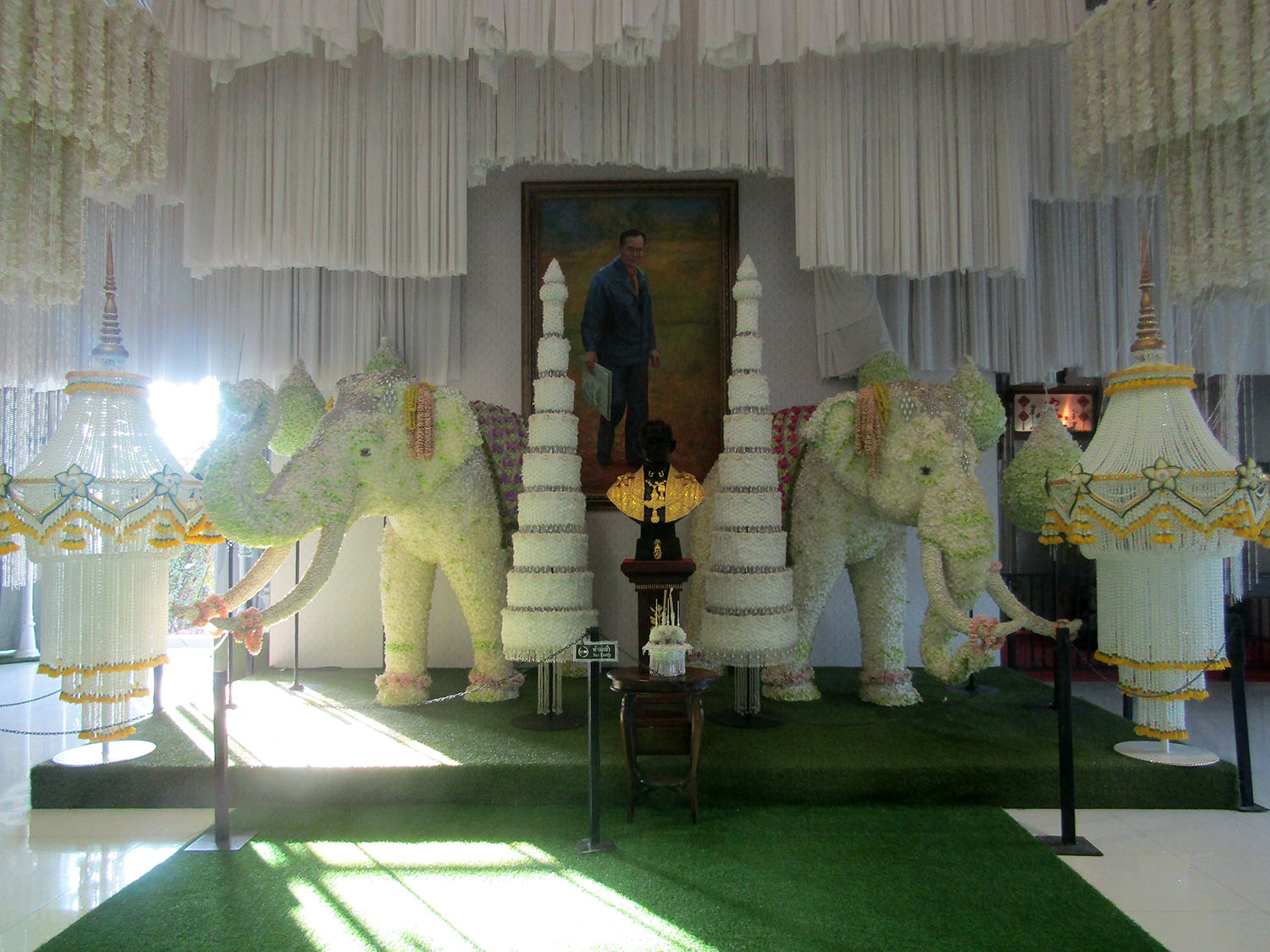
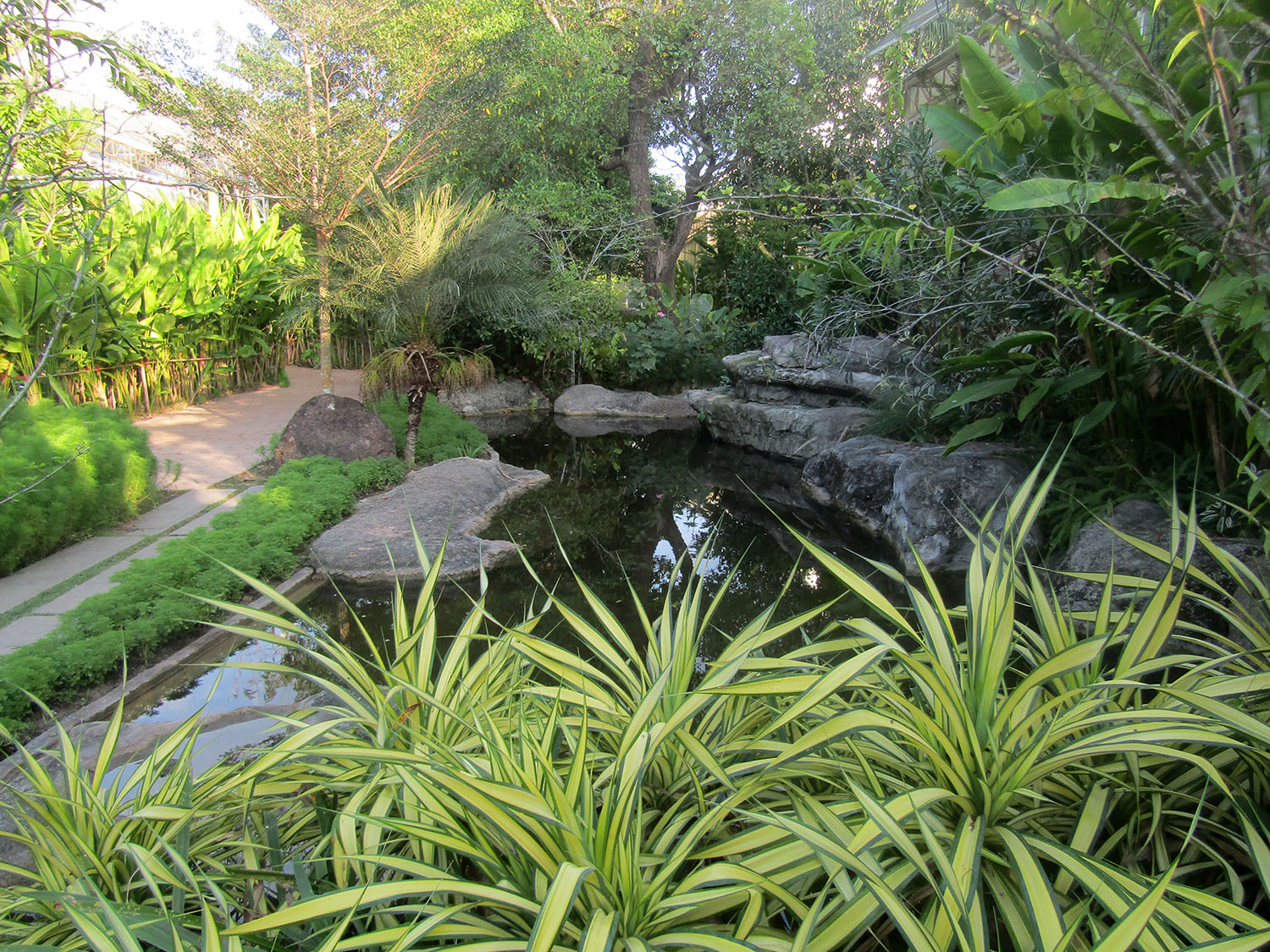
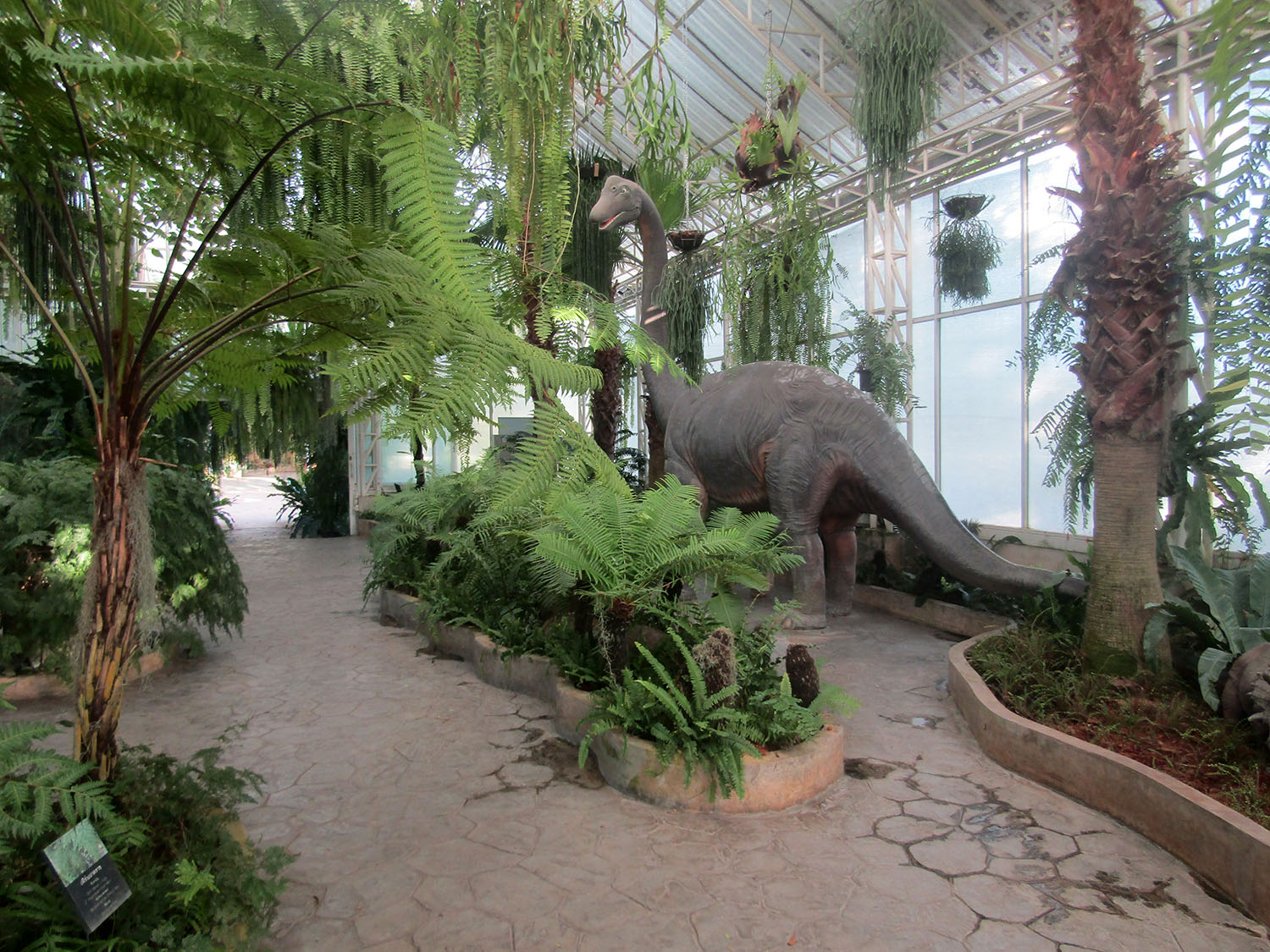
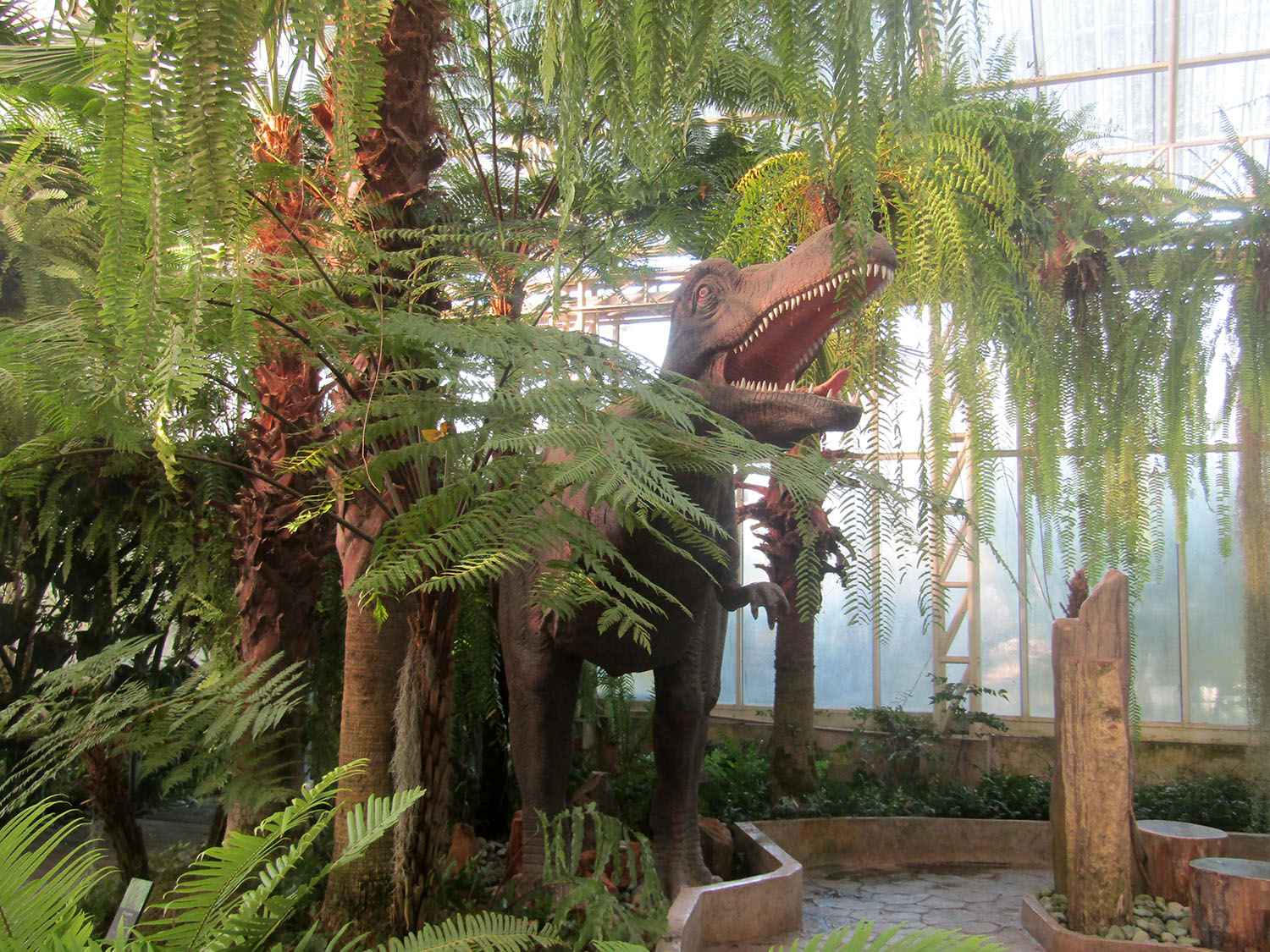
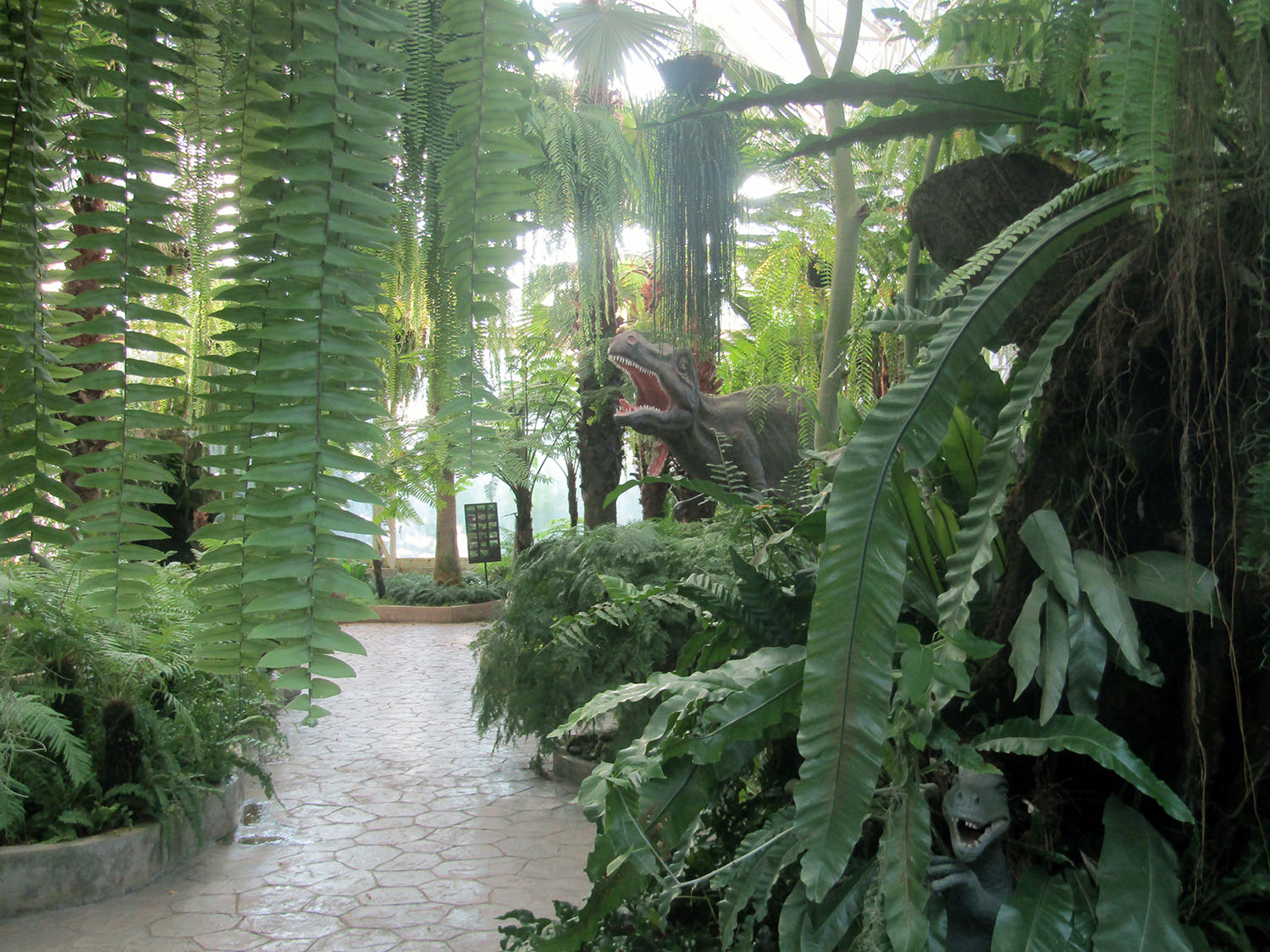
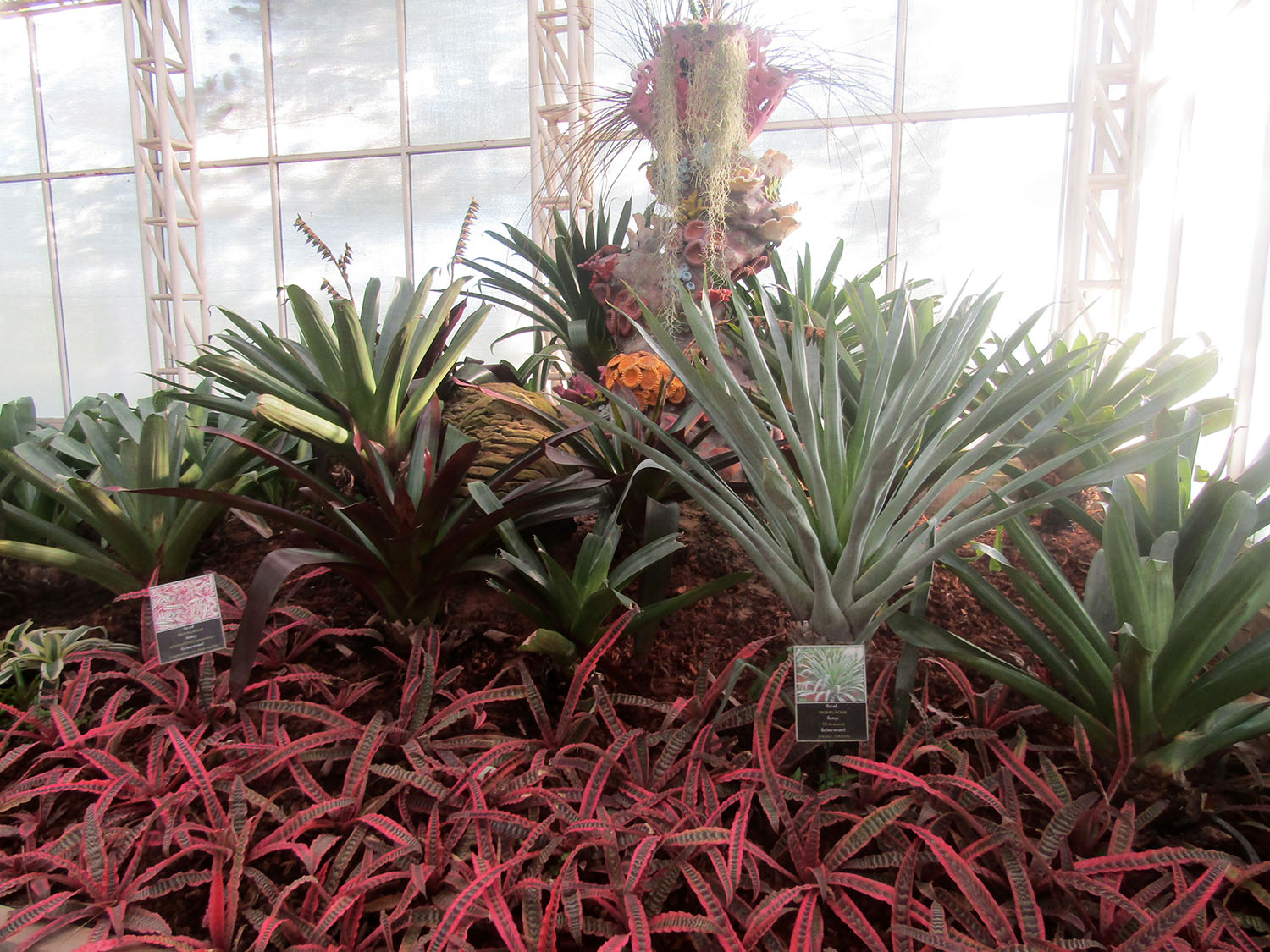
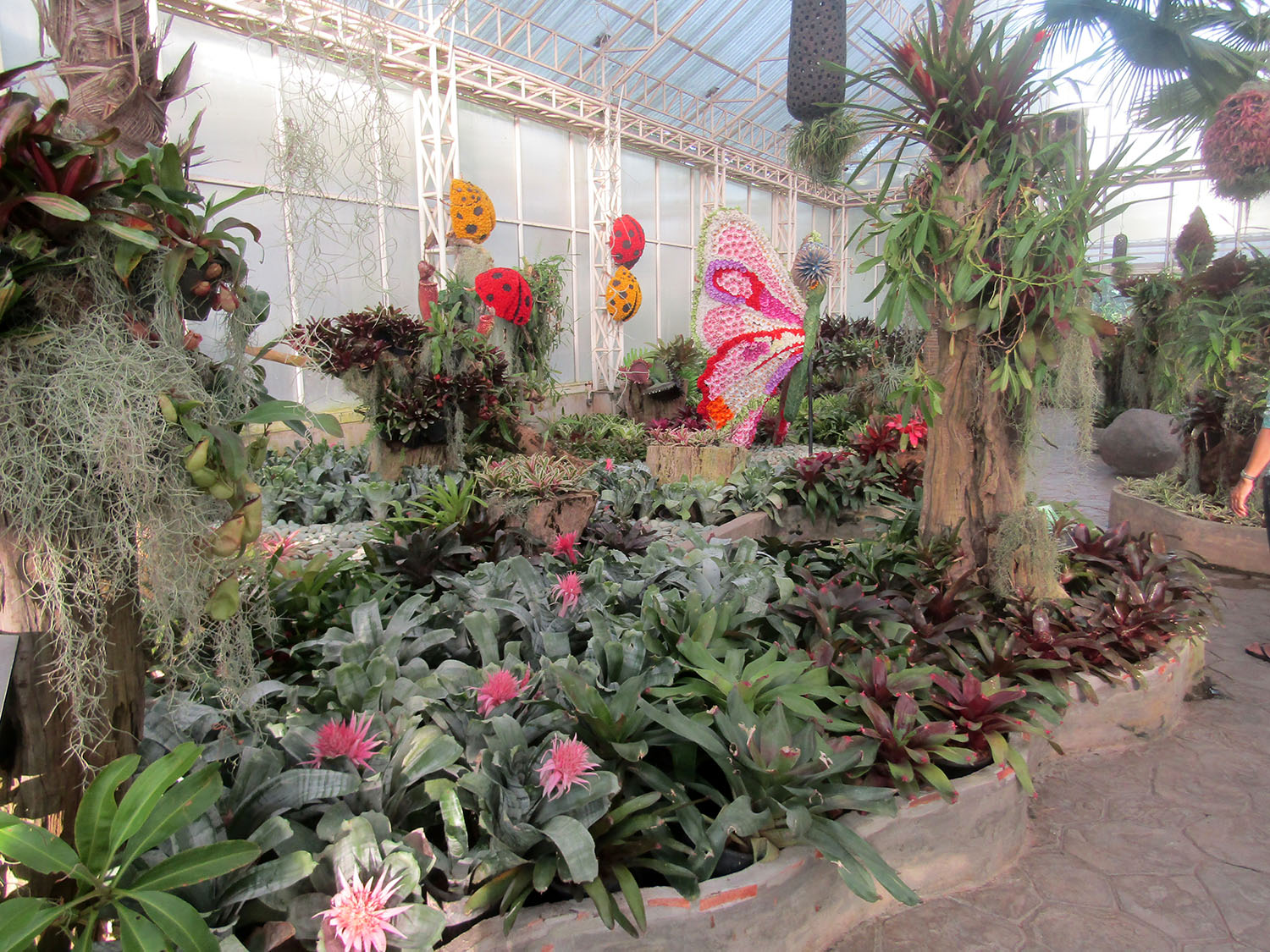
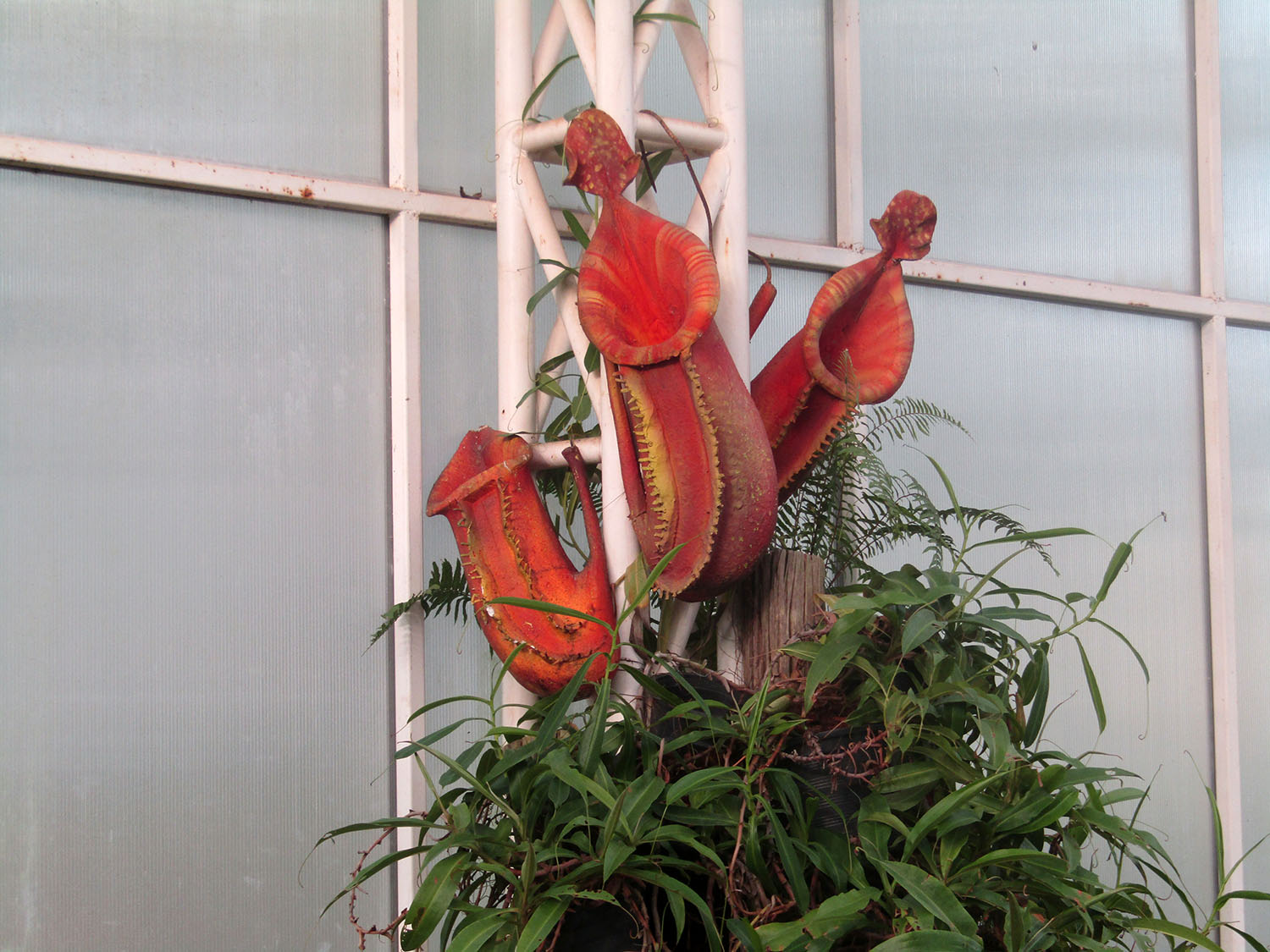
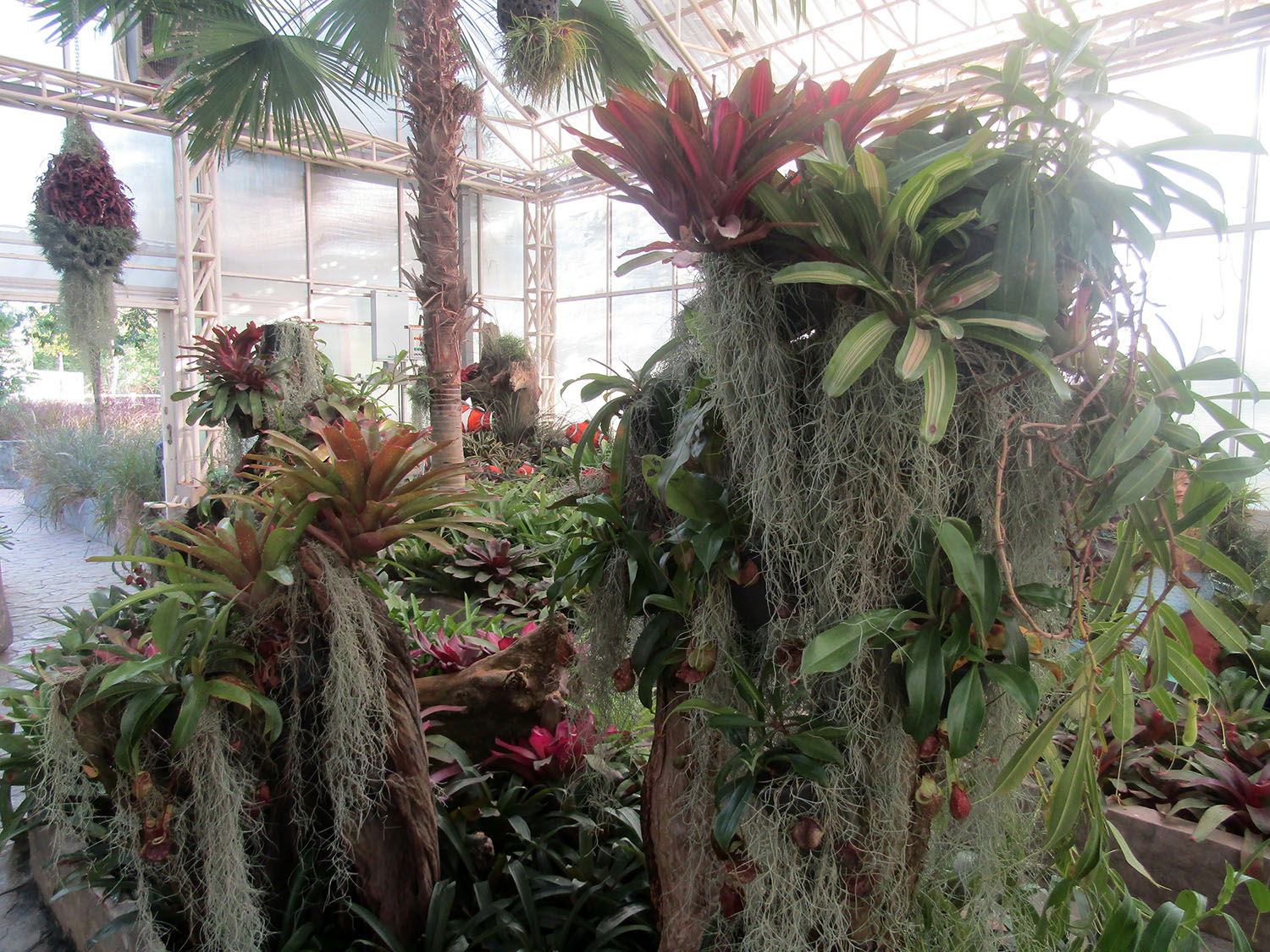
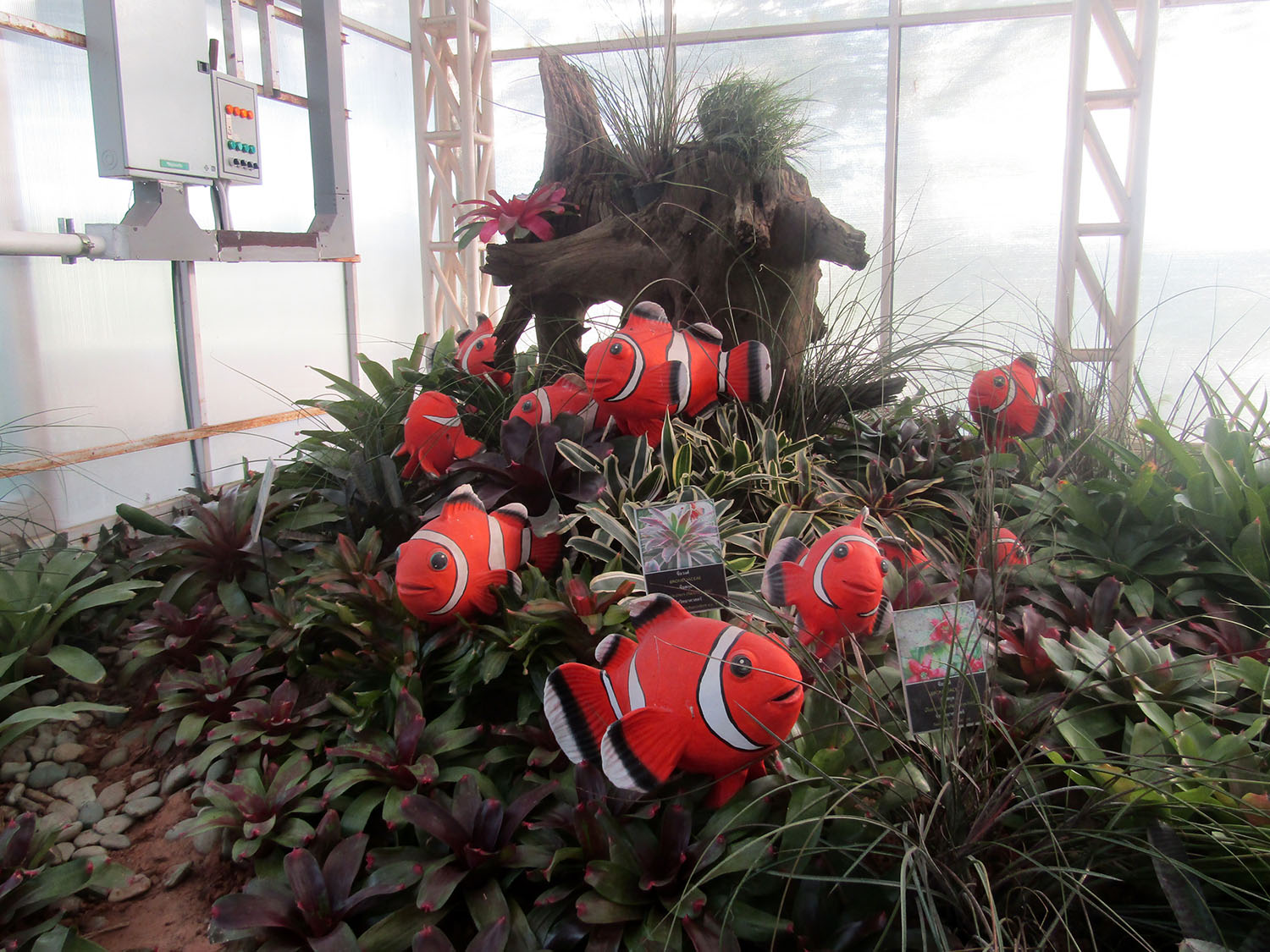
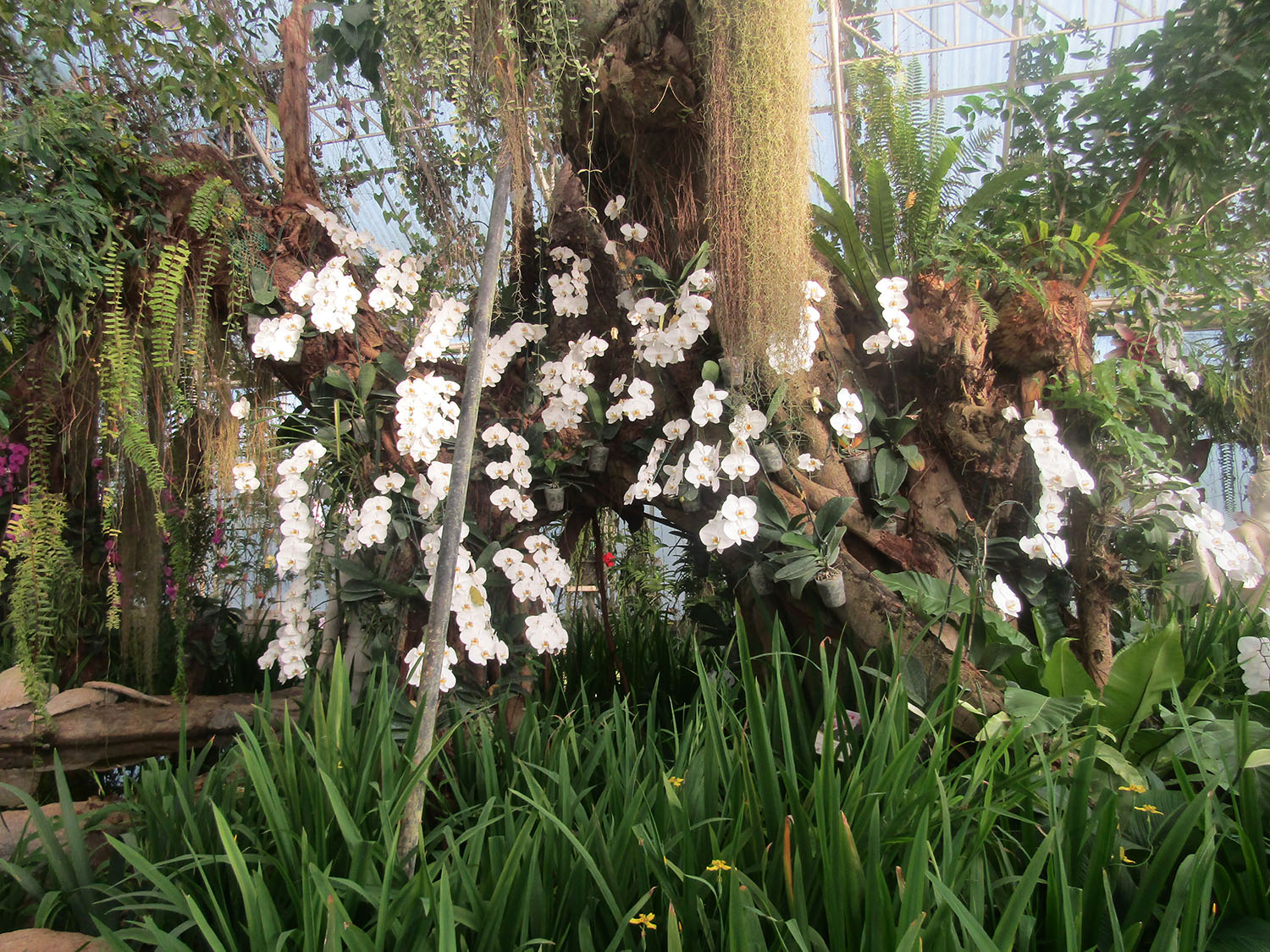
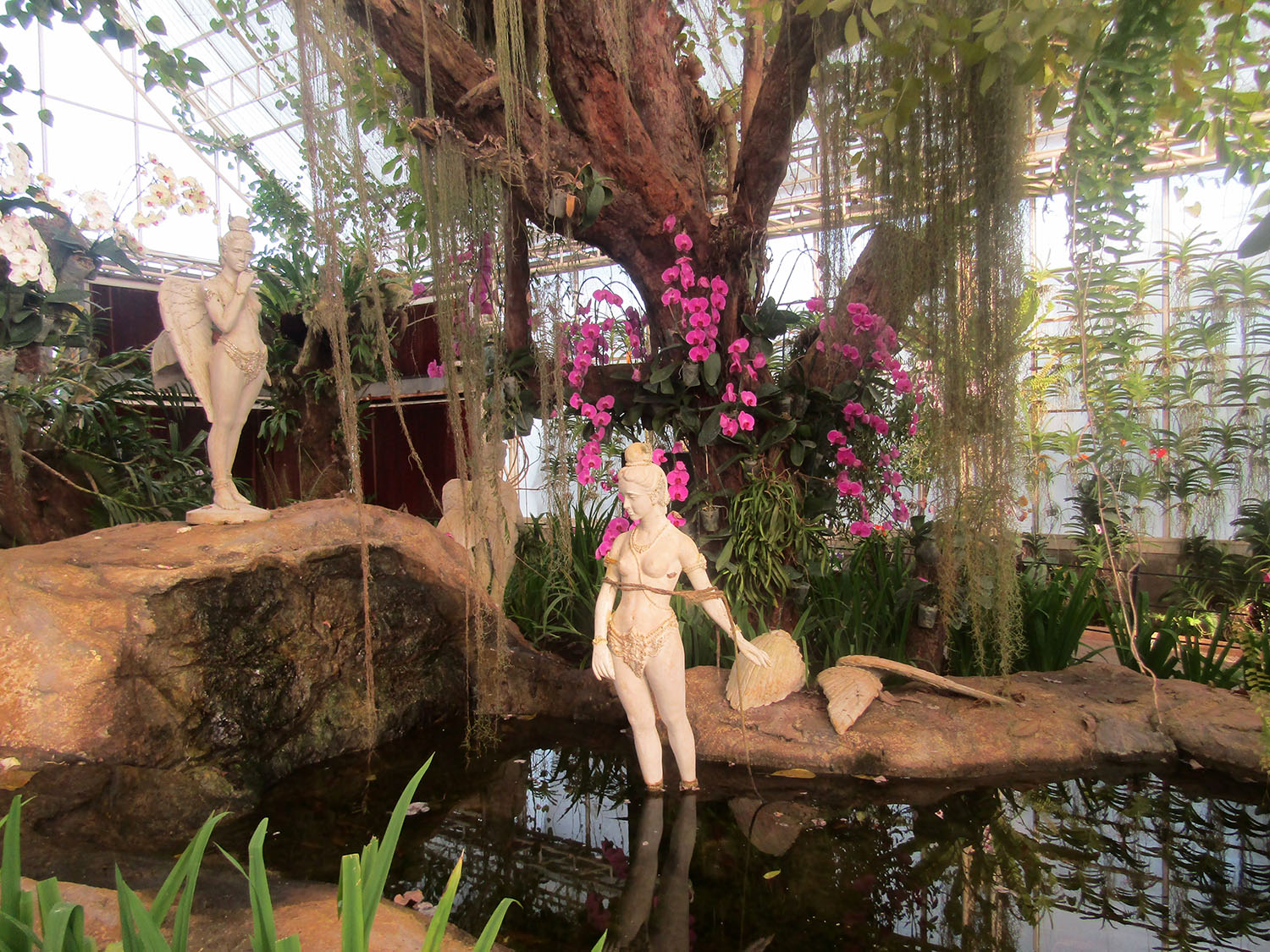
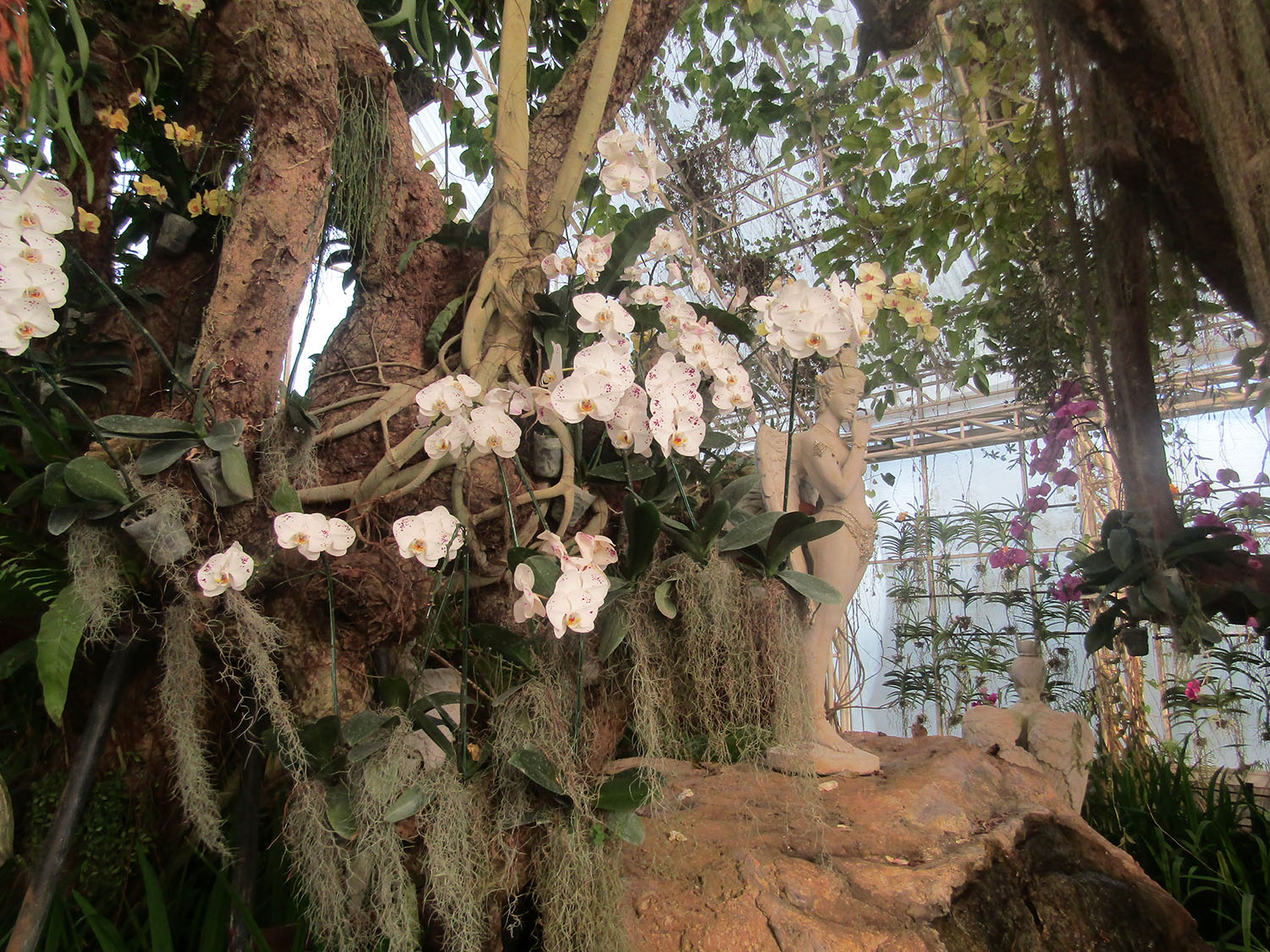
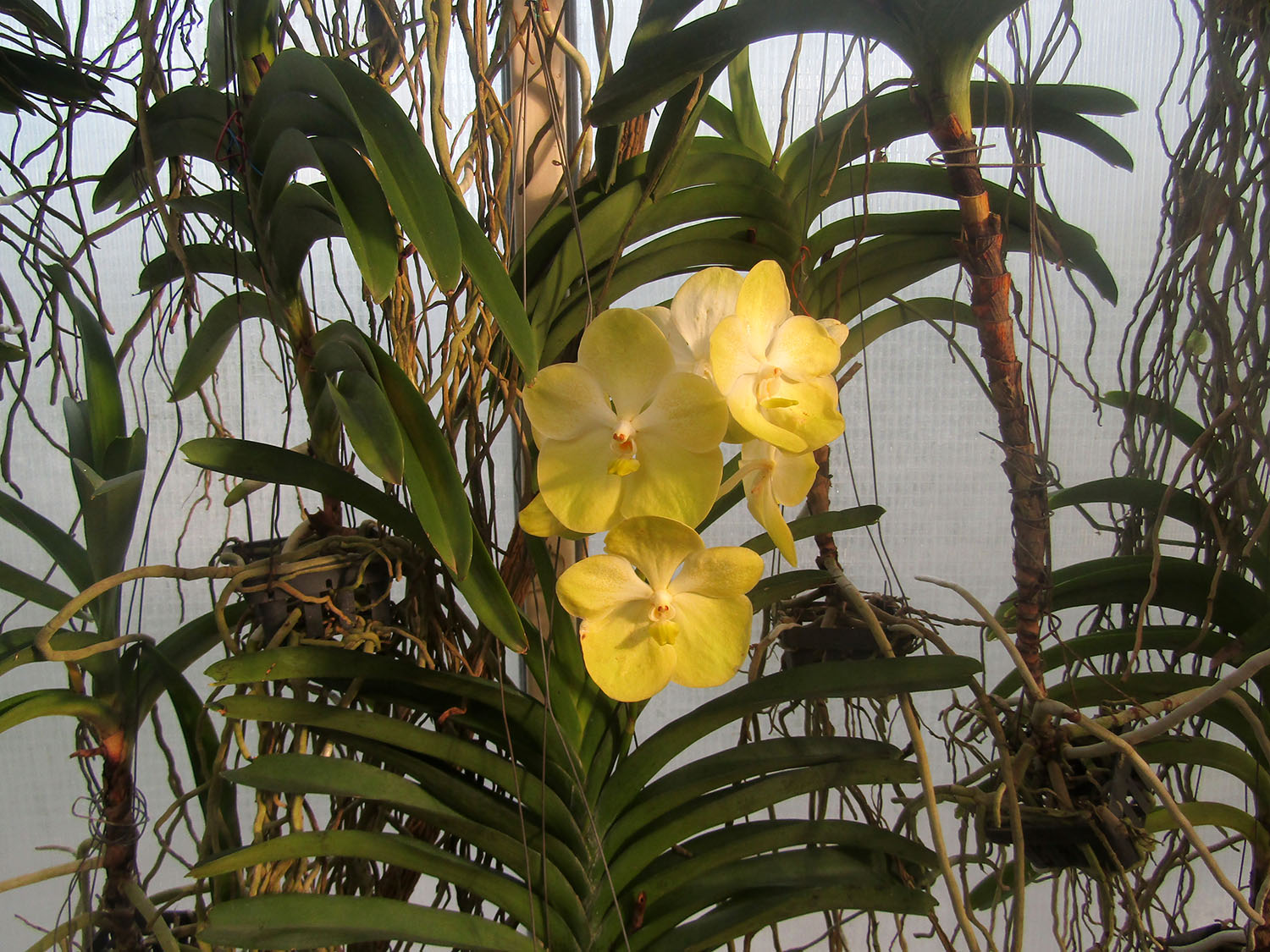
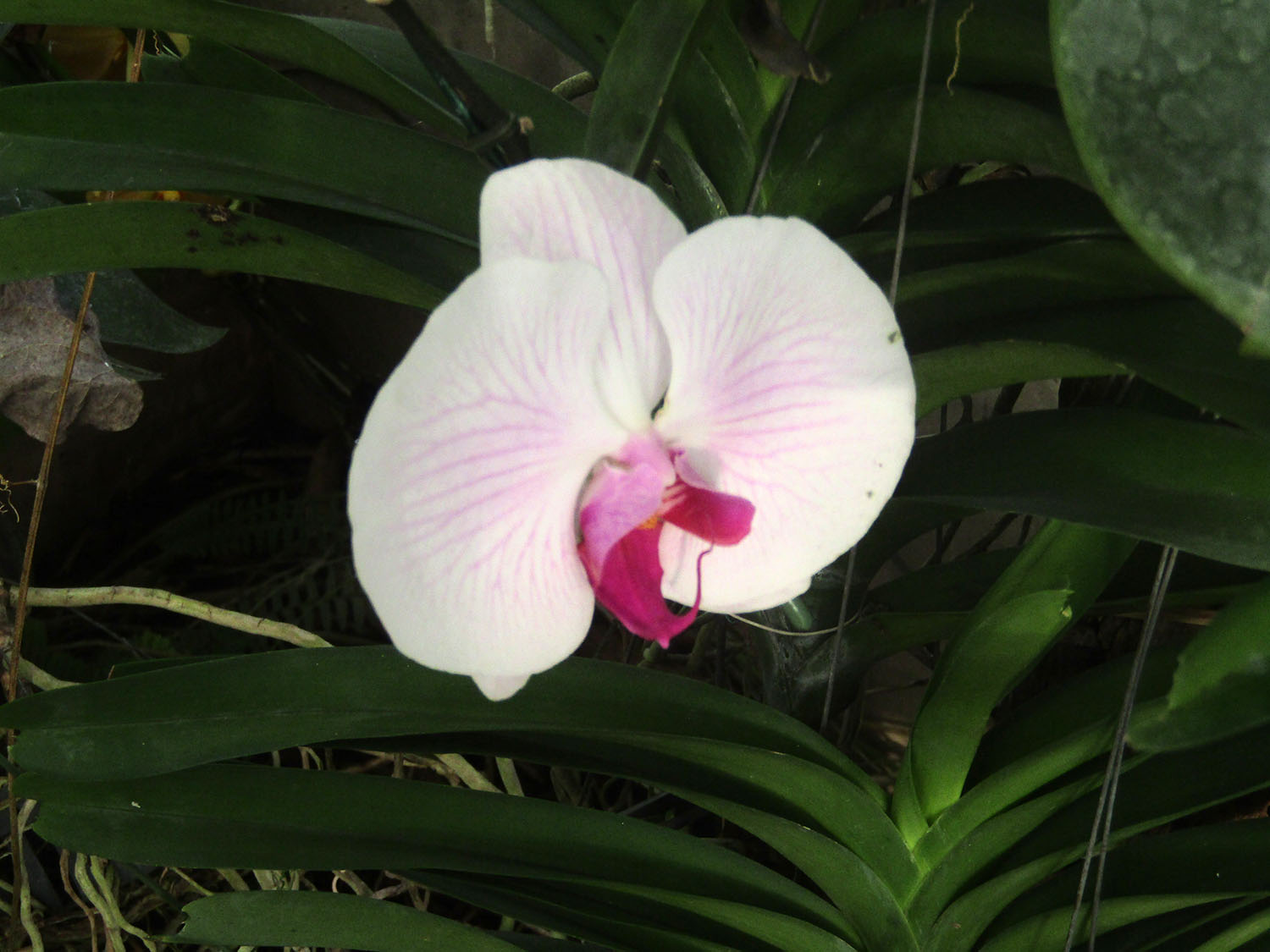
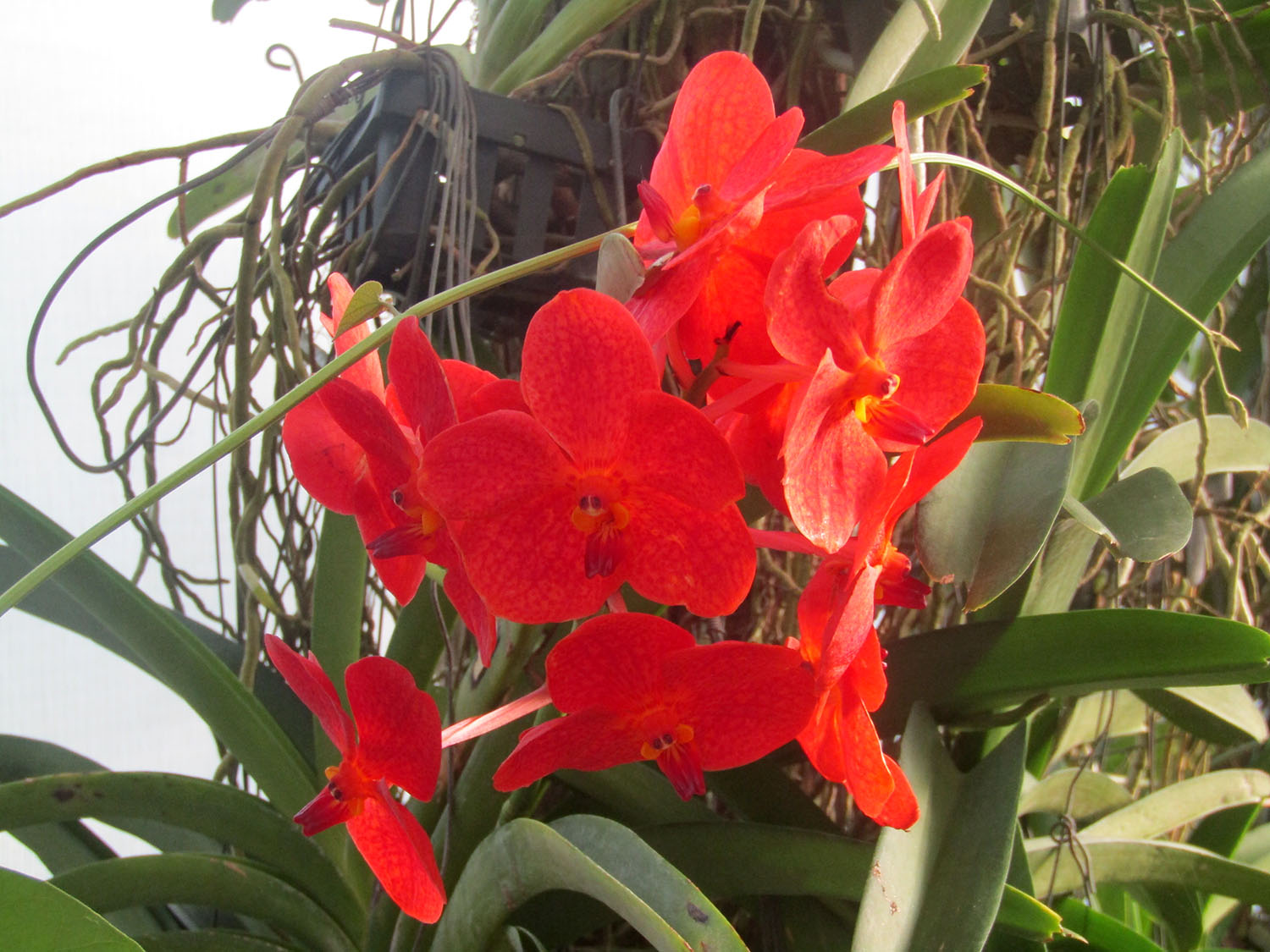
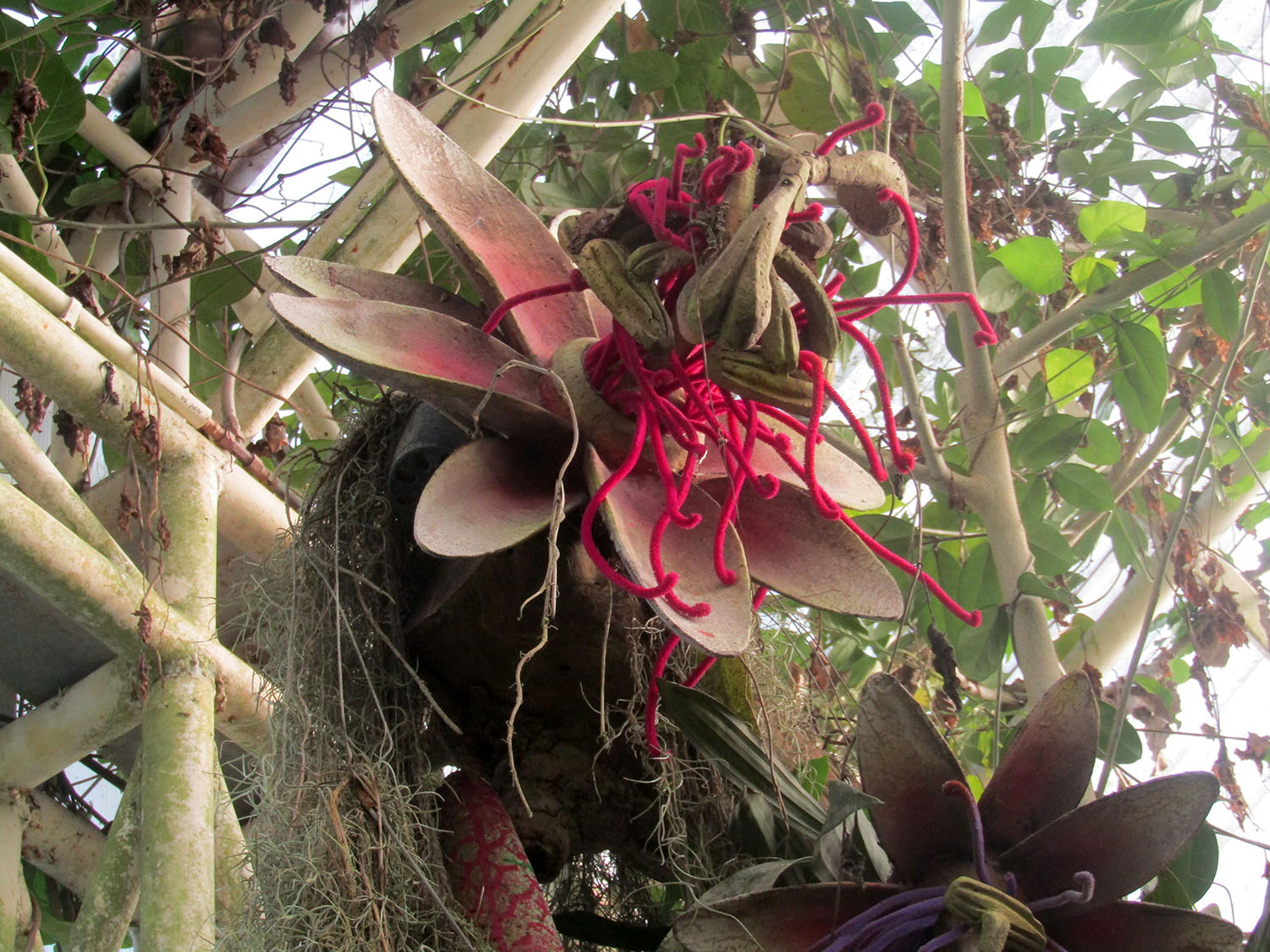
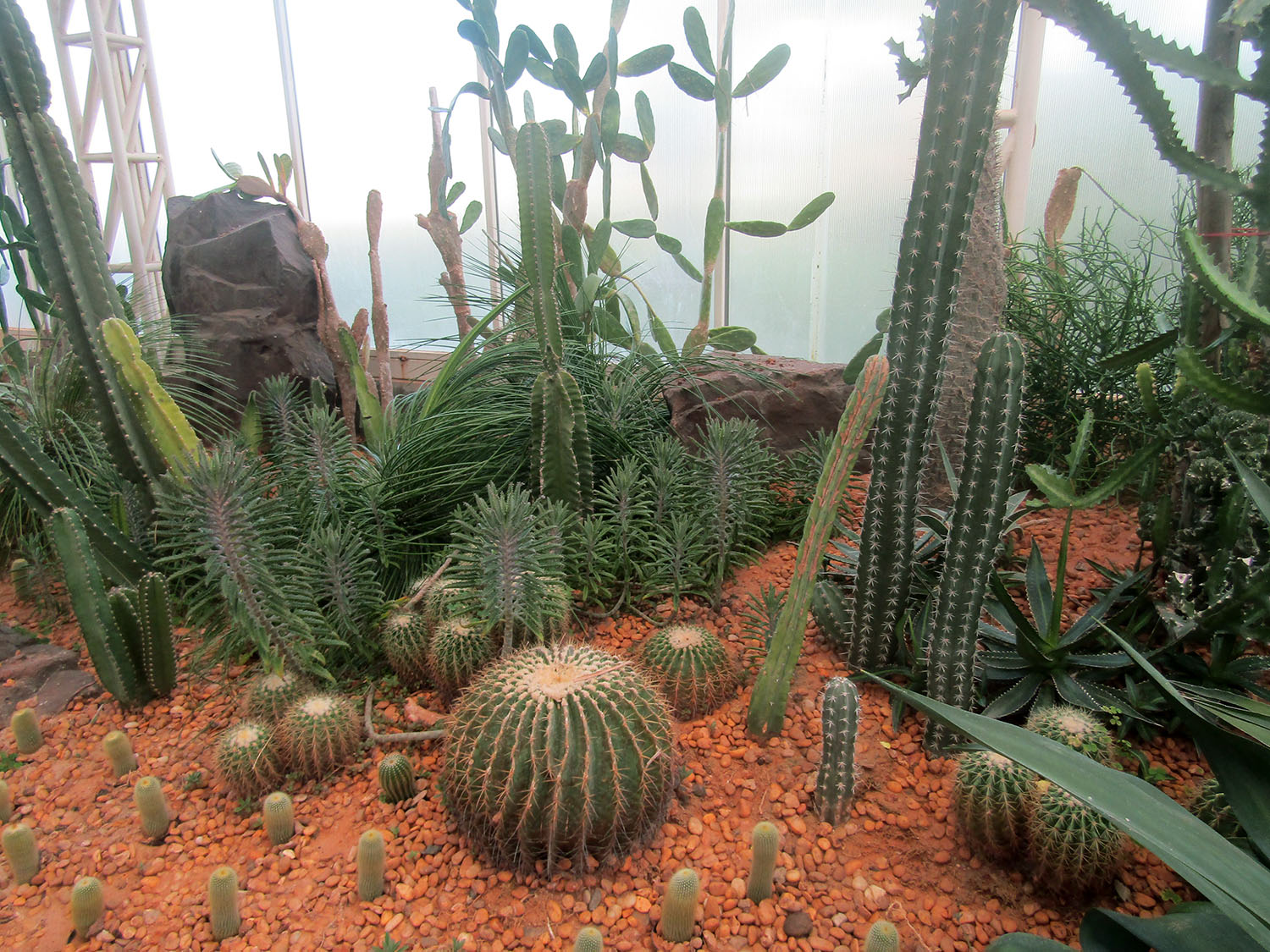
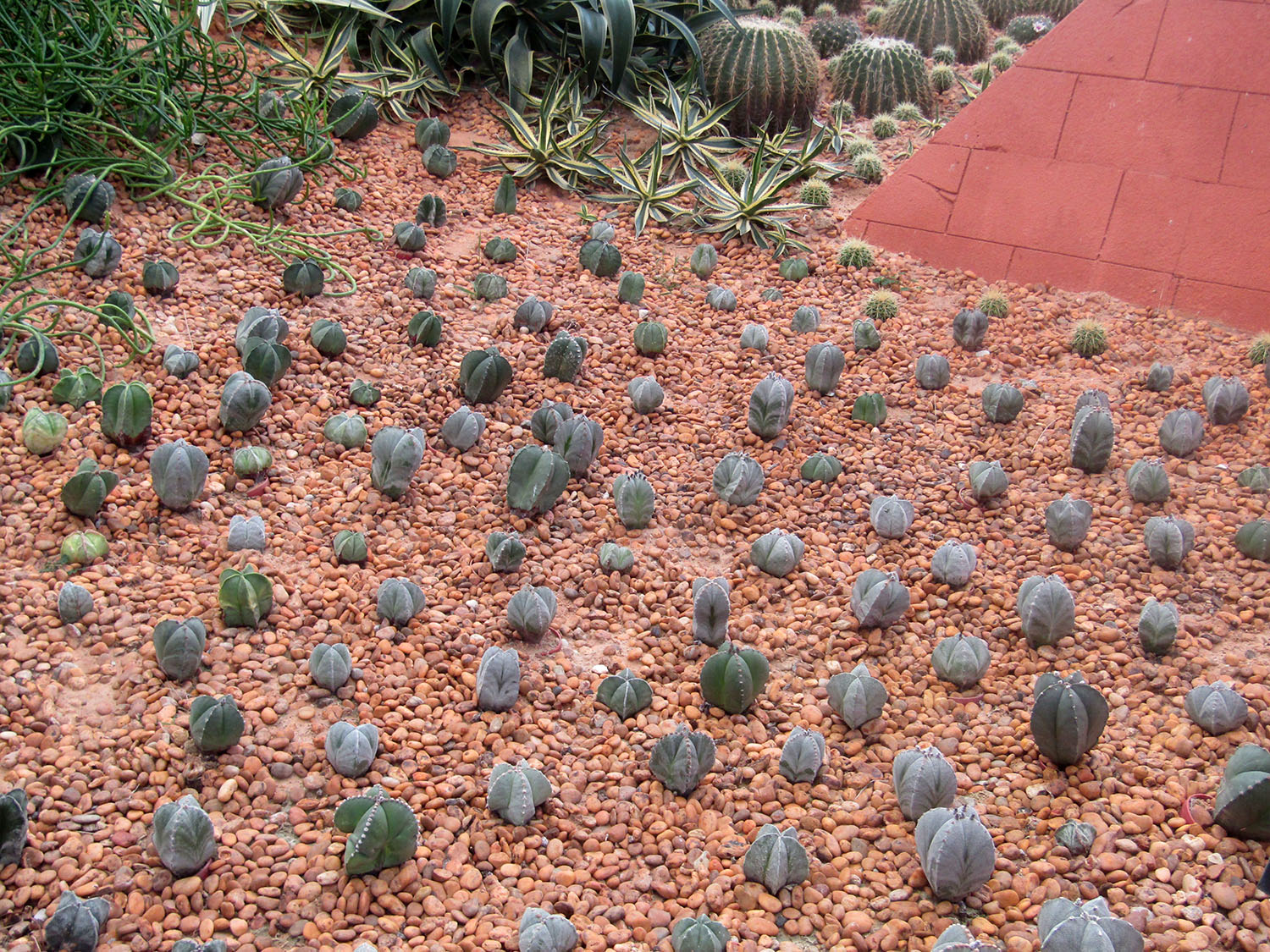
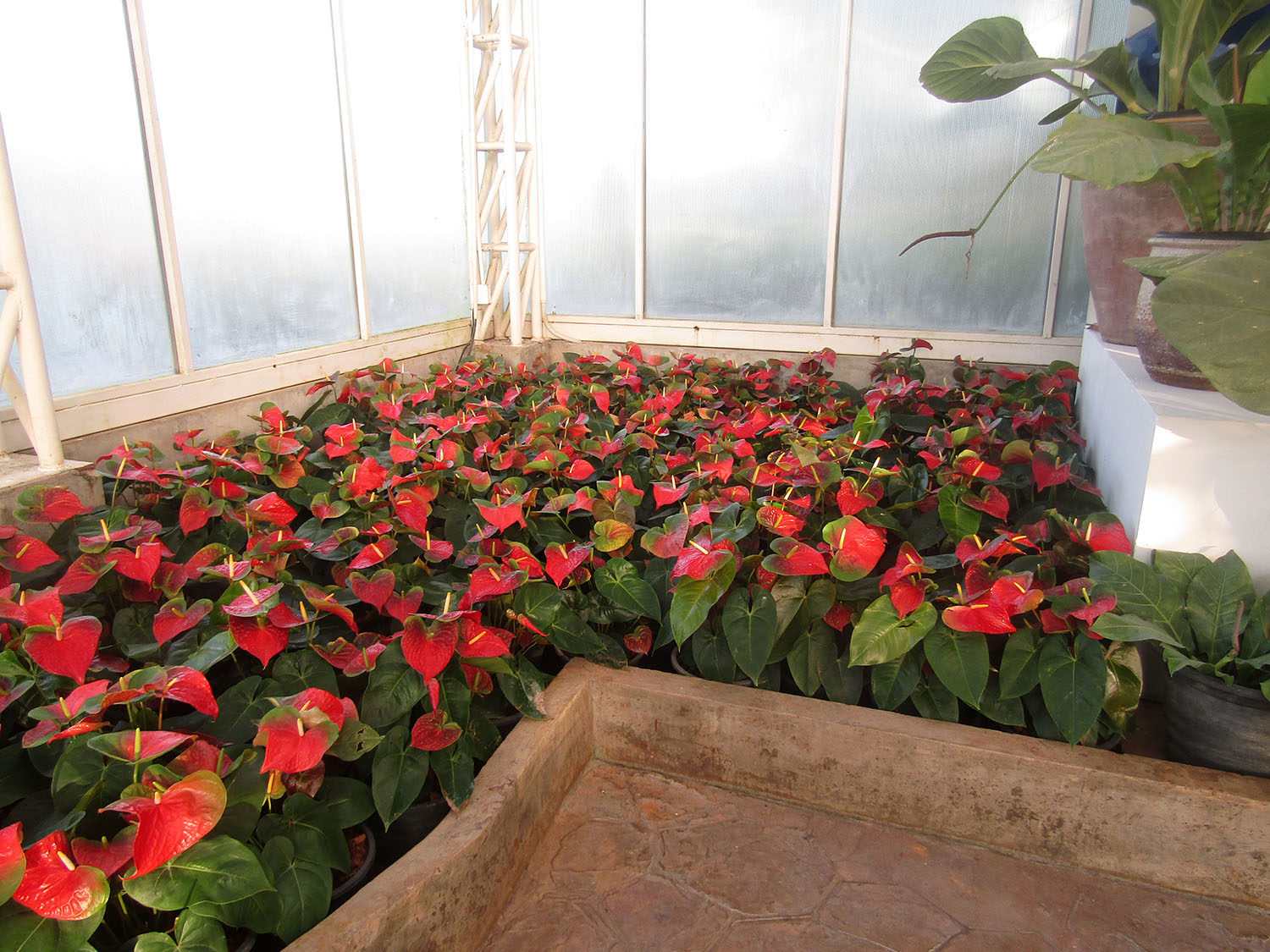
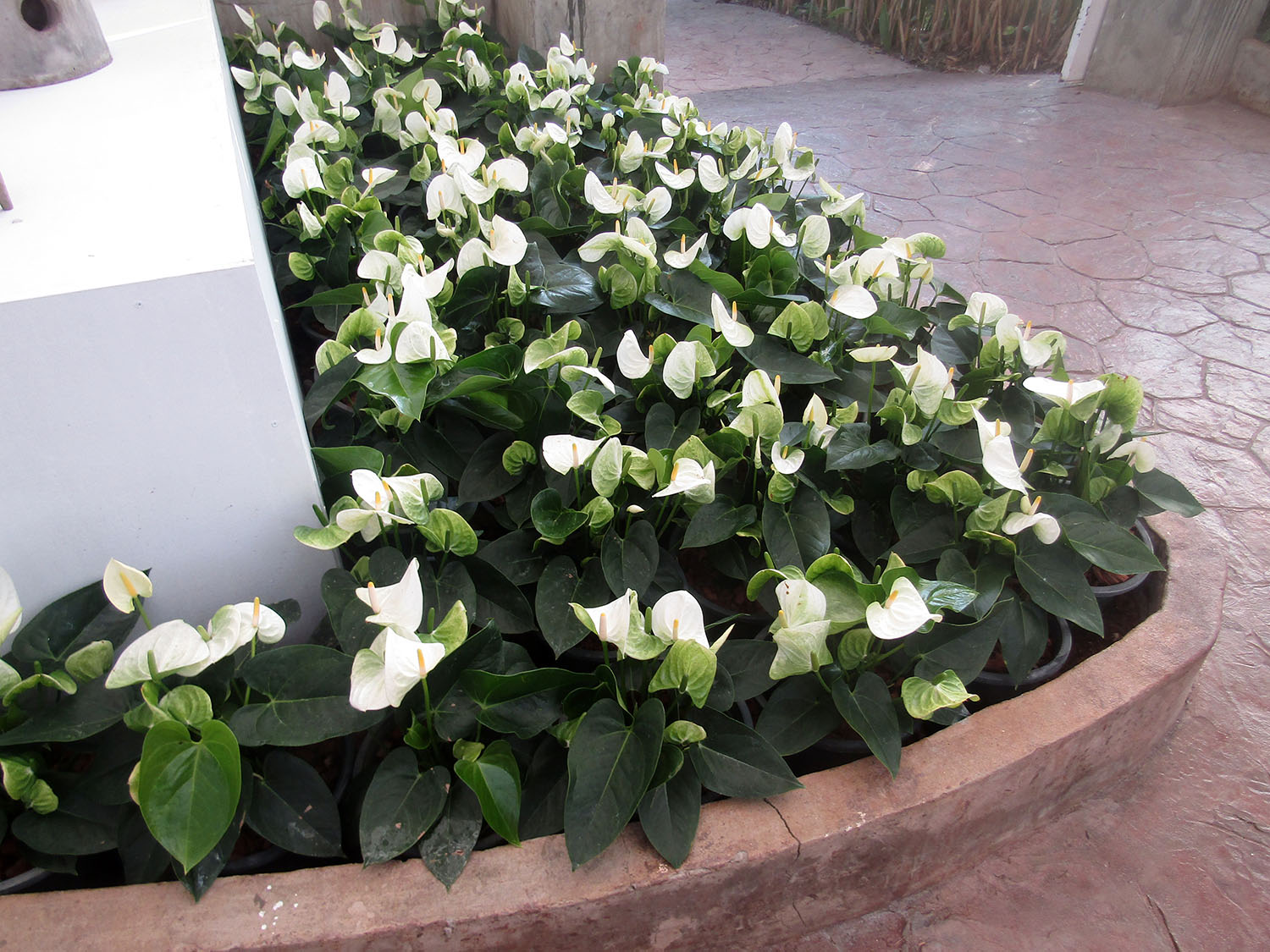
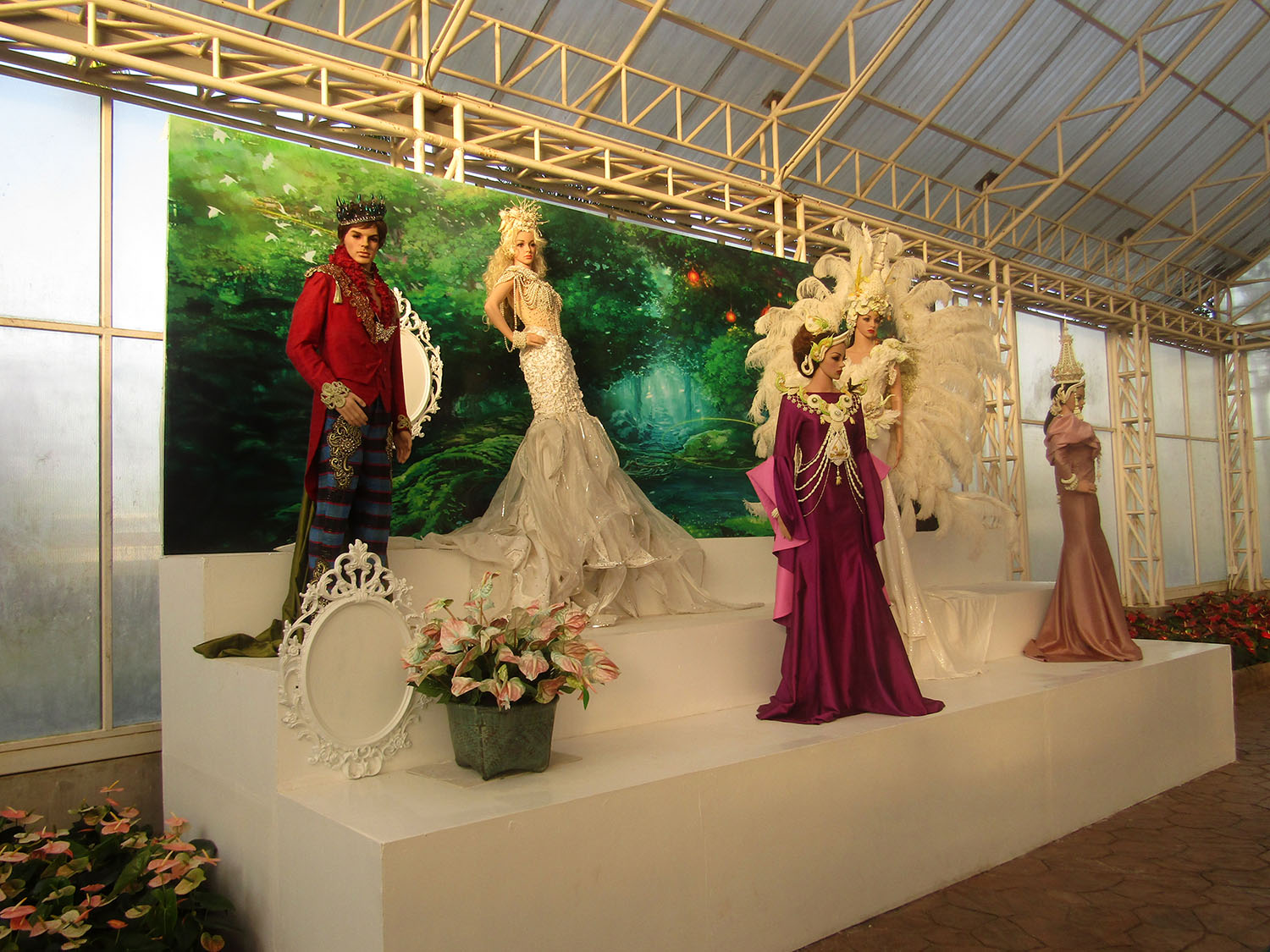
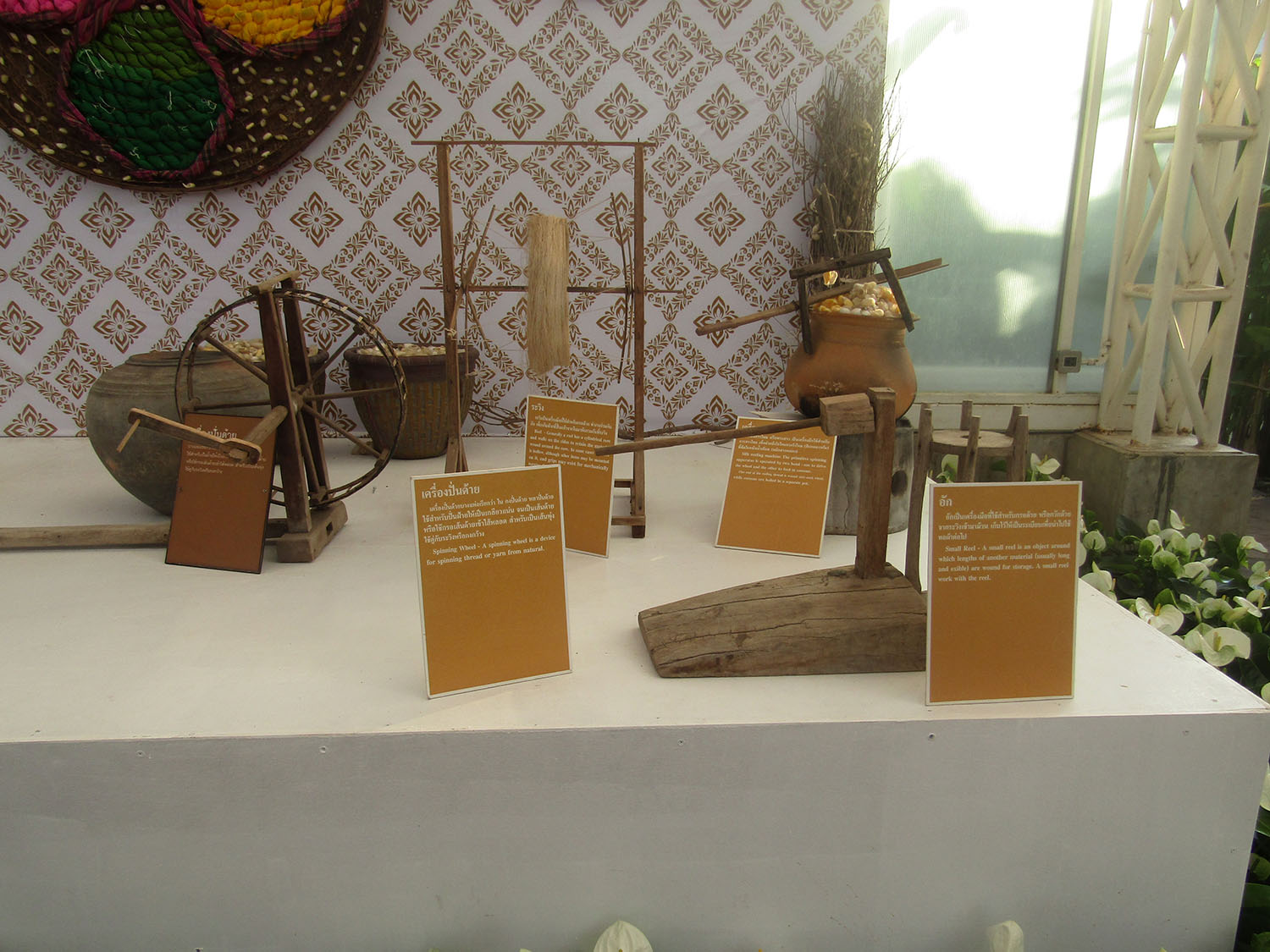
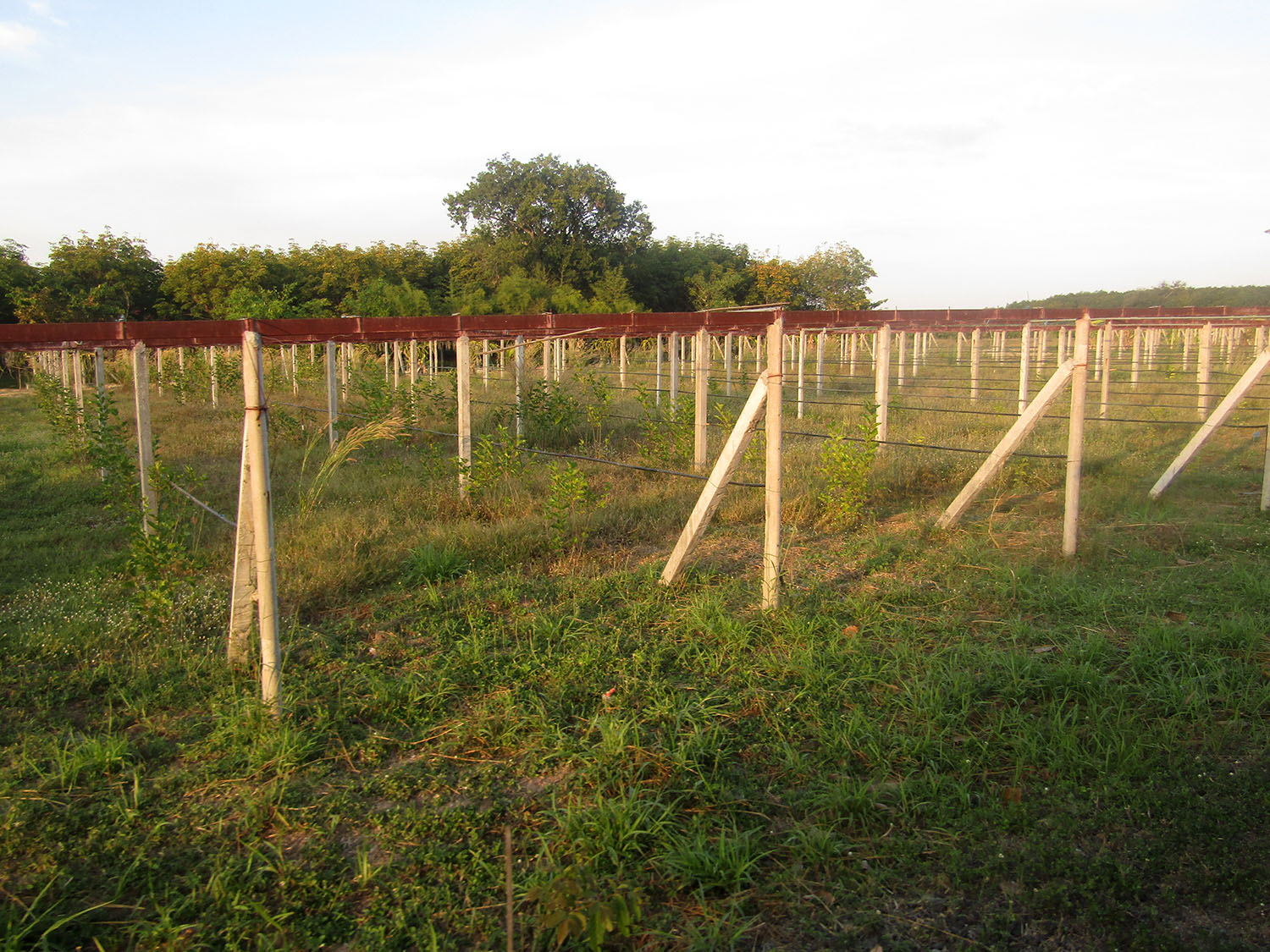
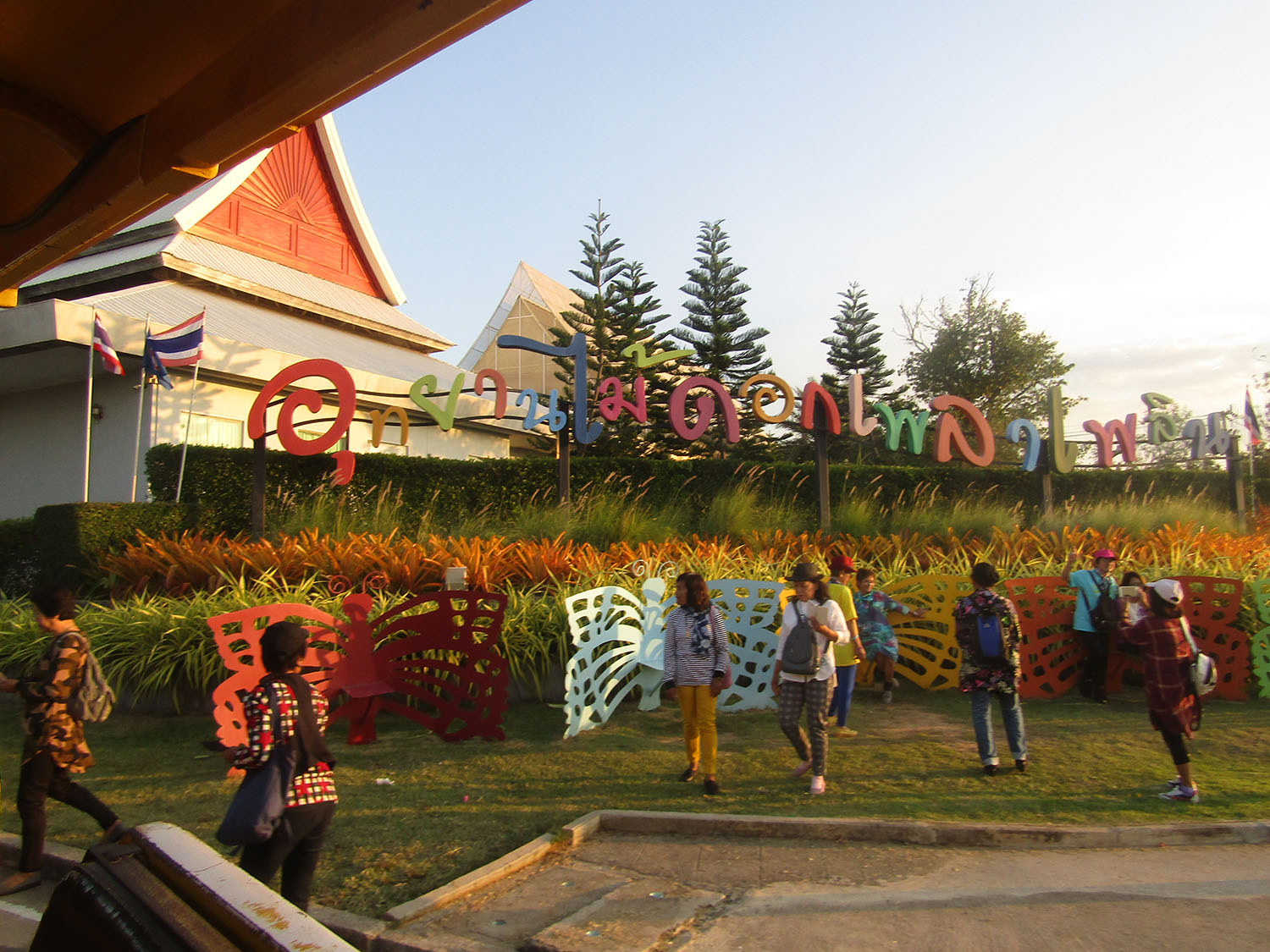
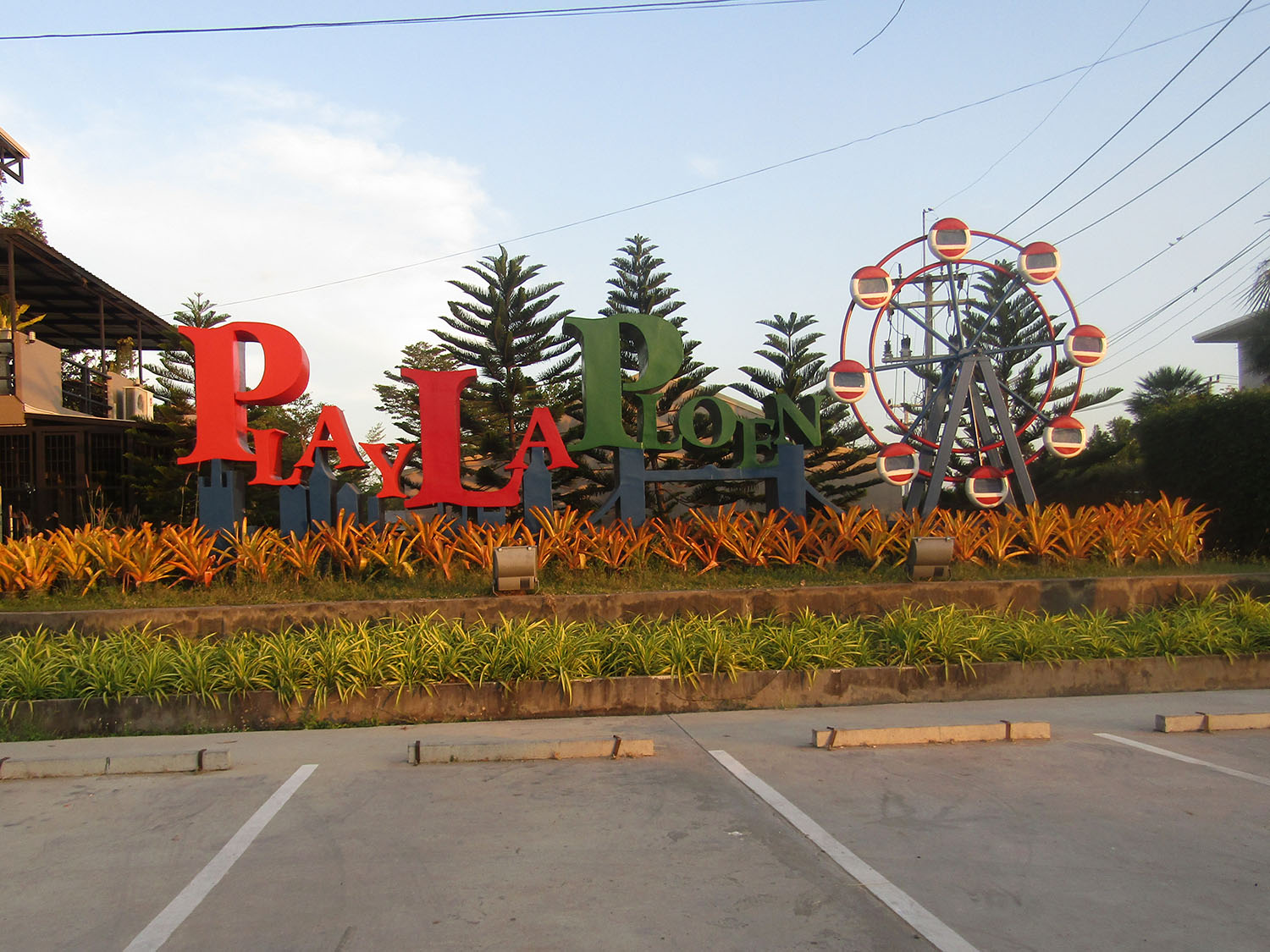 Play La Ploen, Khu Mueang District, Buriram Province
Play La Ploen, Khu Mueang District, Buriram Province
No lift……..At 5pm there is a chance yet again that we will be looking for accommodation after dark but I’ve set the GPS to find Qoo Hotel. We make good time arriving in Buriram before dark and enquire at the hotel. However there is only accommodation on the fifth floor with no lift. I say ‘bugger that’, but we’re directed to another hotel near the bus station. S Hotel doesn’t have a lift either but they have a room on the third floor and on this occasion I bite my tongue. On the upside there will be a full breakfast including an American breakfast.
It's been quite hot today and I’m shattered. I dump of my kit with the help of the security guard and it’s out on the main street for dinner. The pork chop and a beer is most welcome but returning to the room, I don’t get a great deal done on my blog. Next Page.
It's been quite hot today and I’m shattered. I dump of my kit with the help of the security guard and it’s out on the main street for dinner. The pork chop and a beer is most welcome but returning to the room, I don’t get a great deal done on my blog. Next Page.